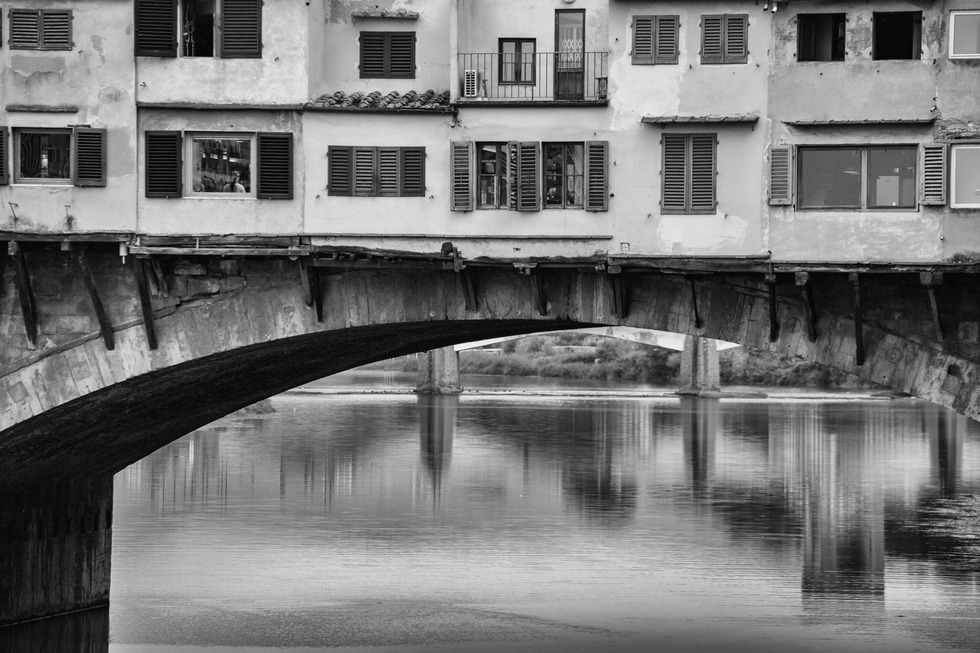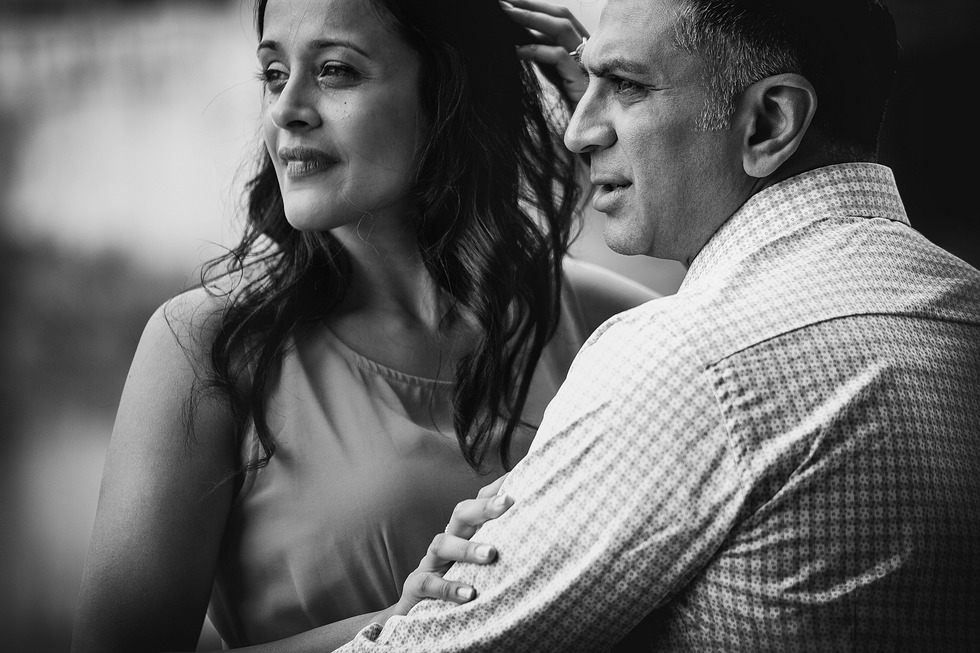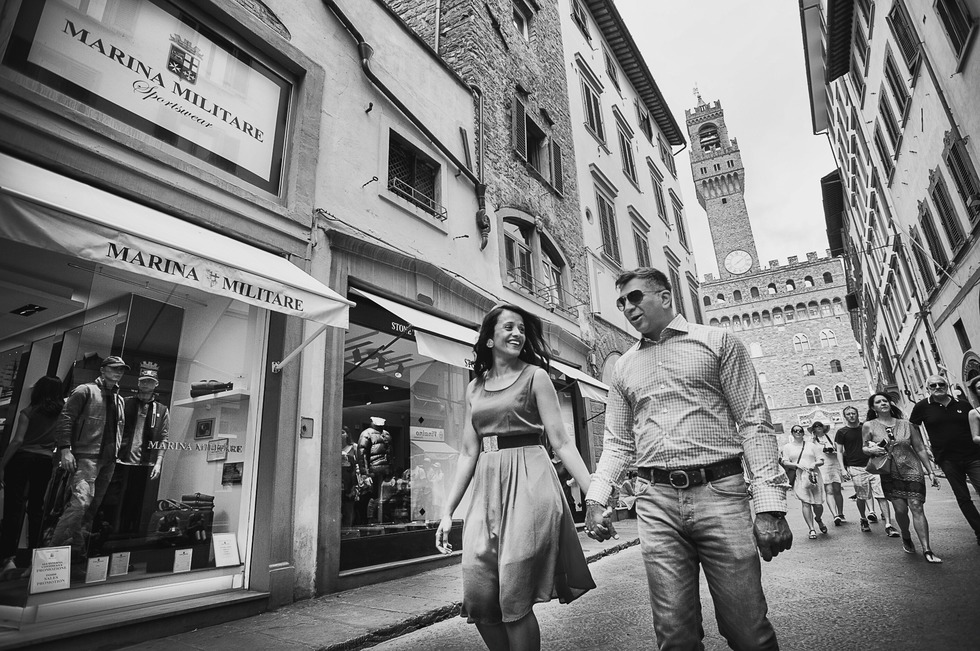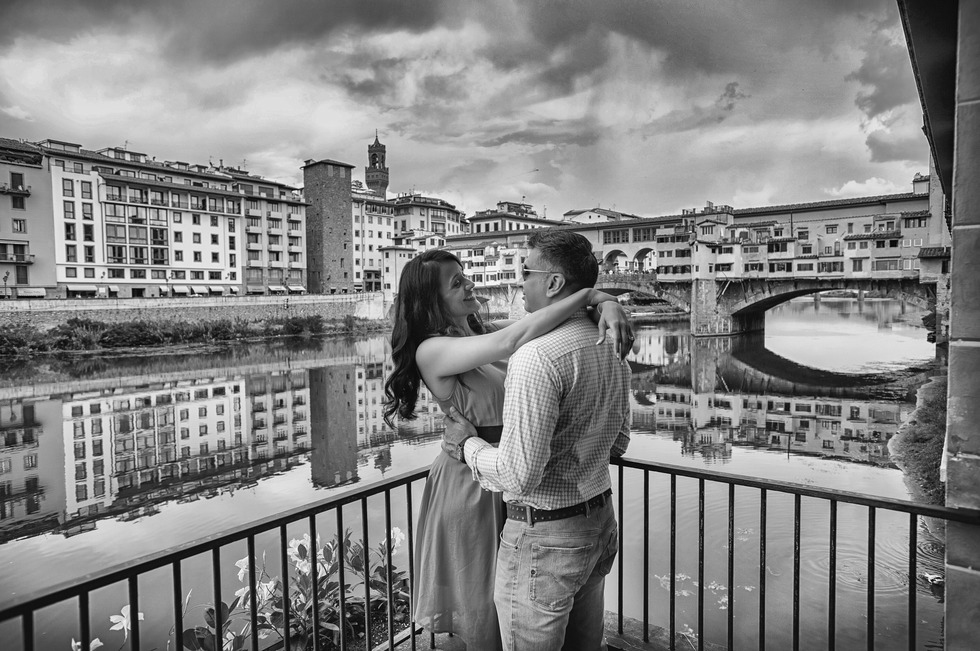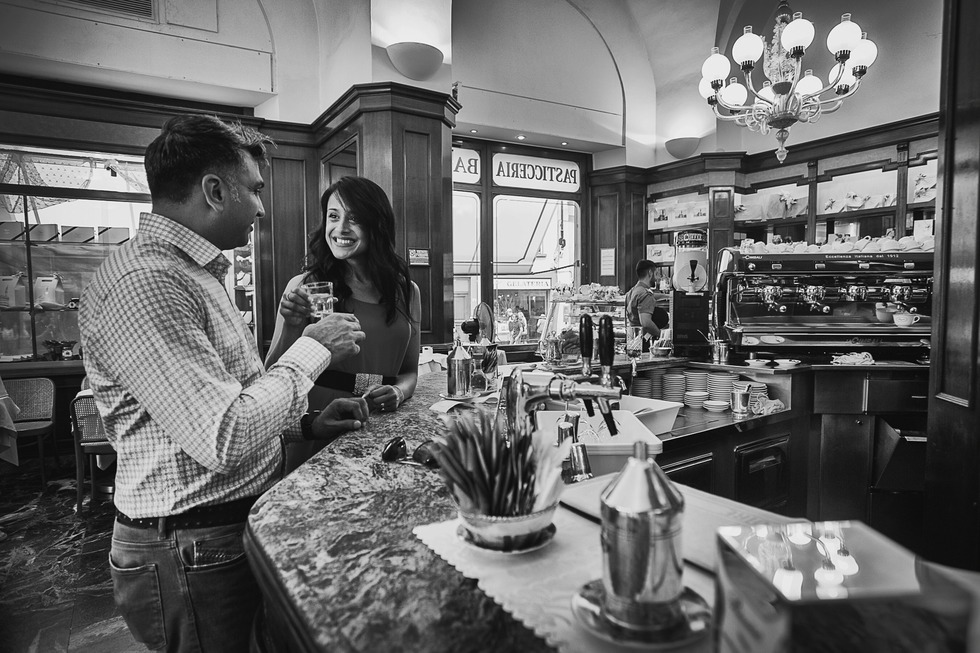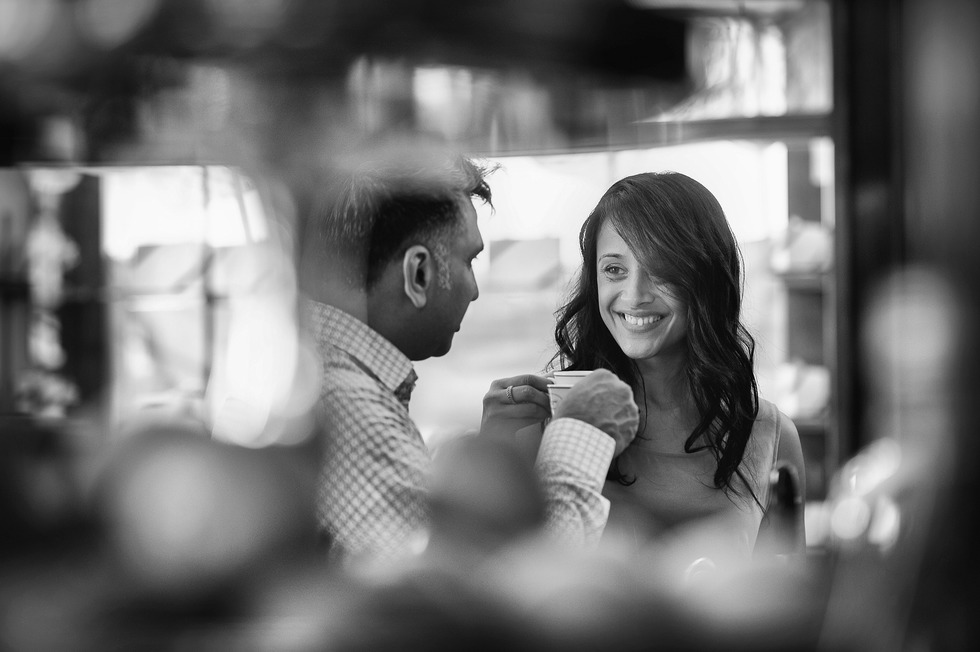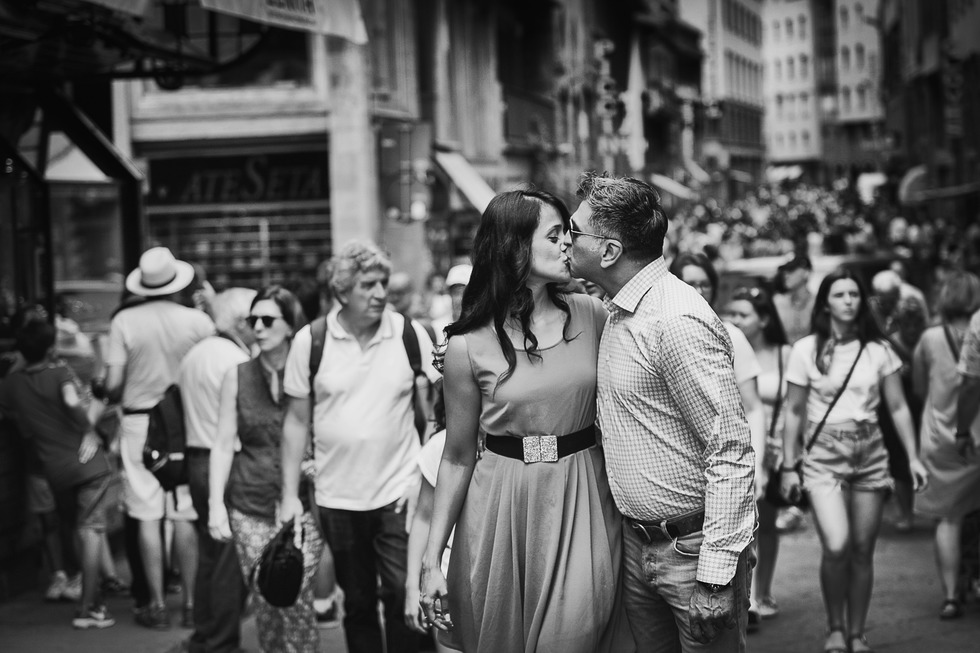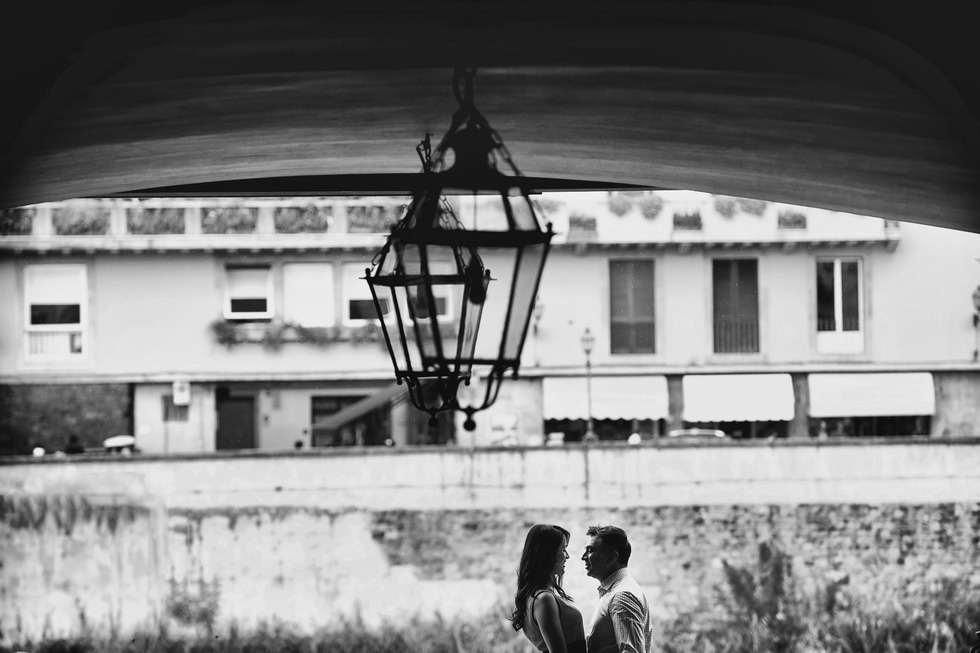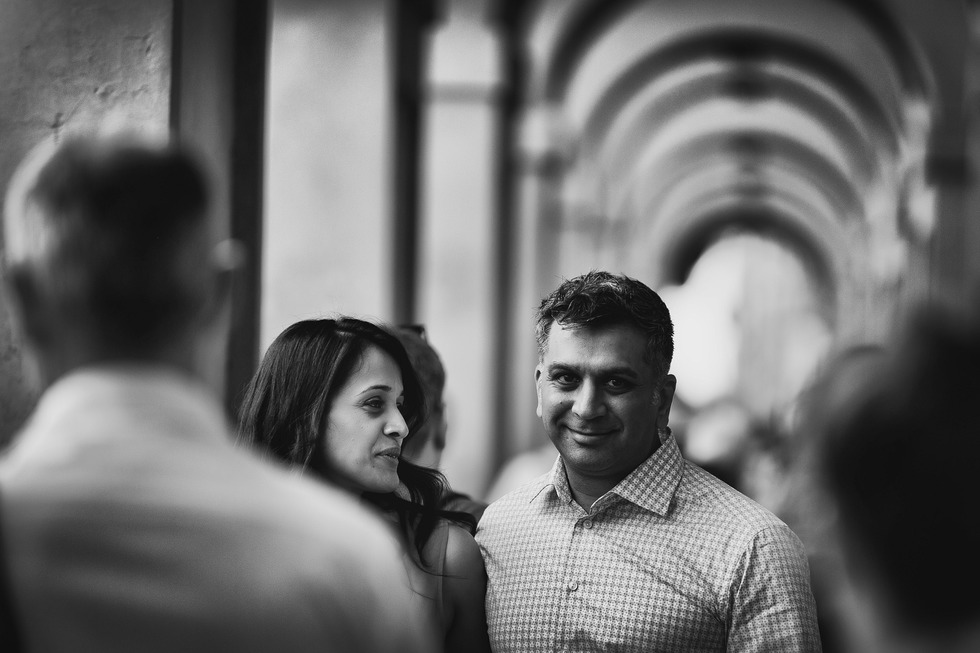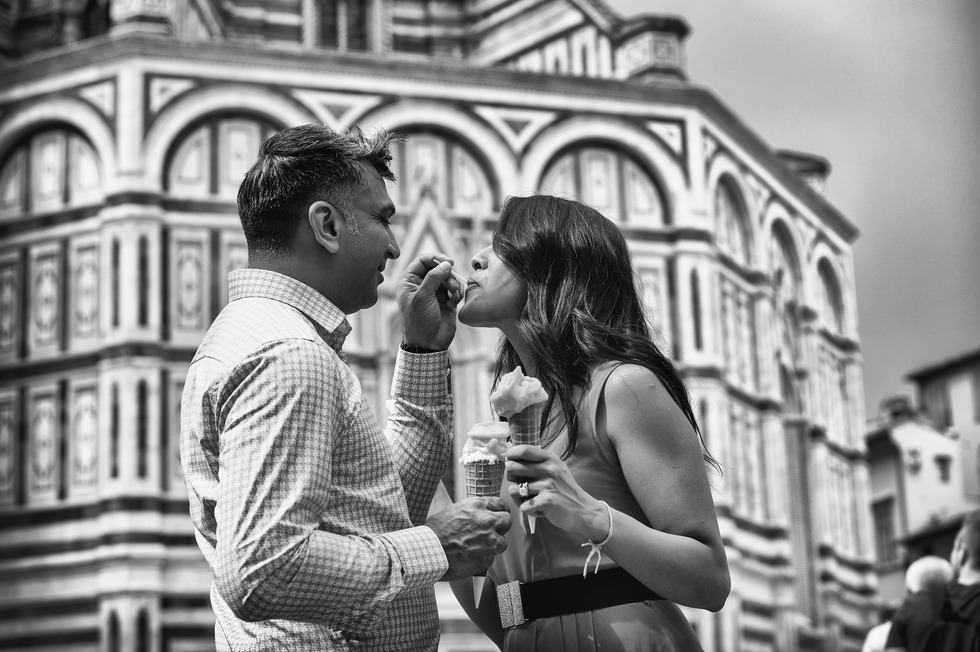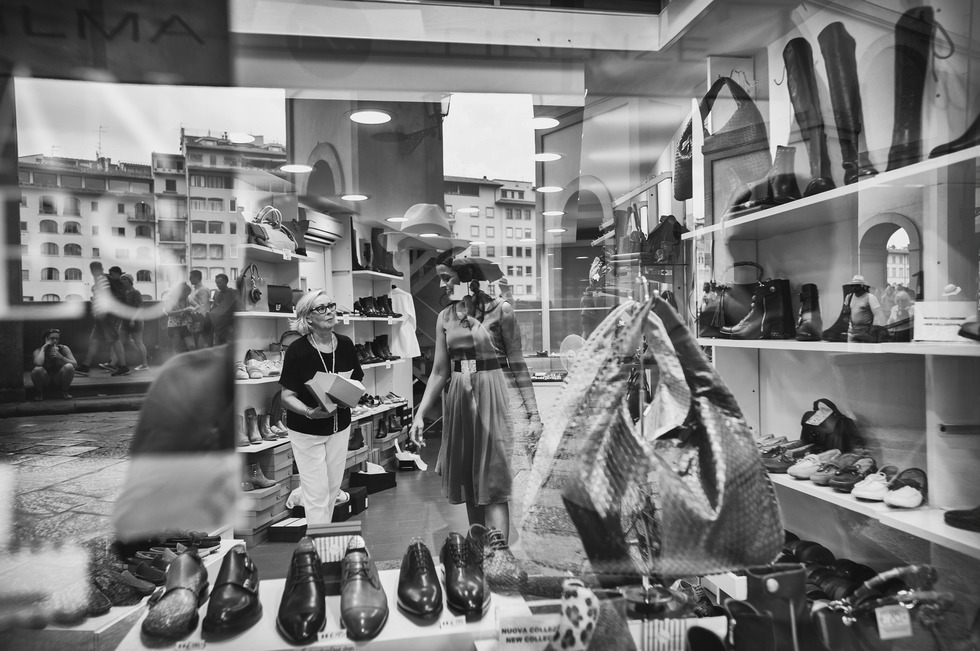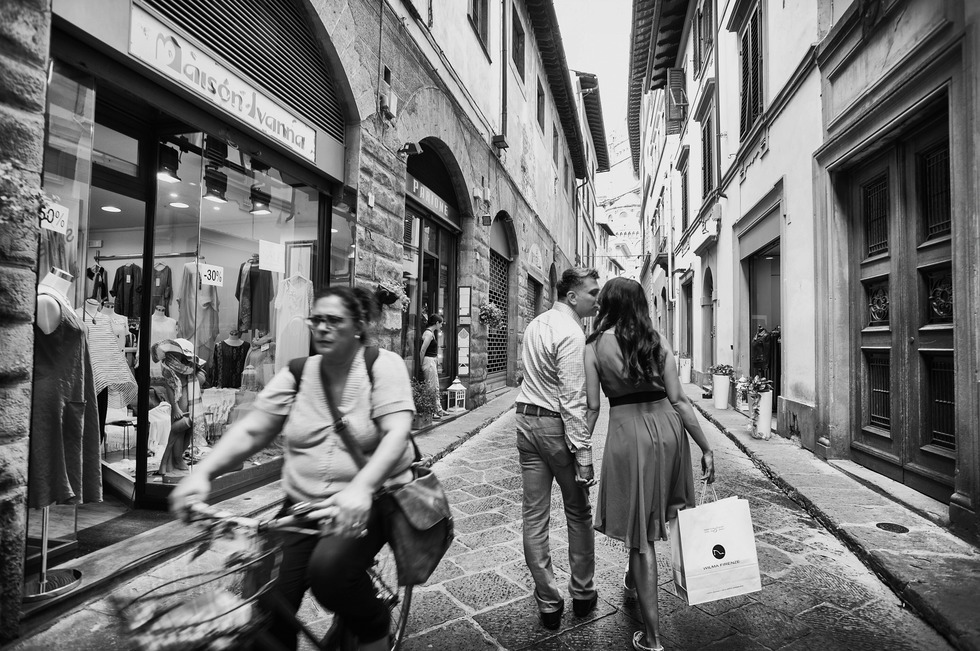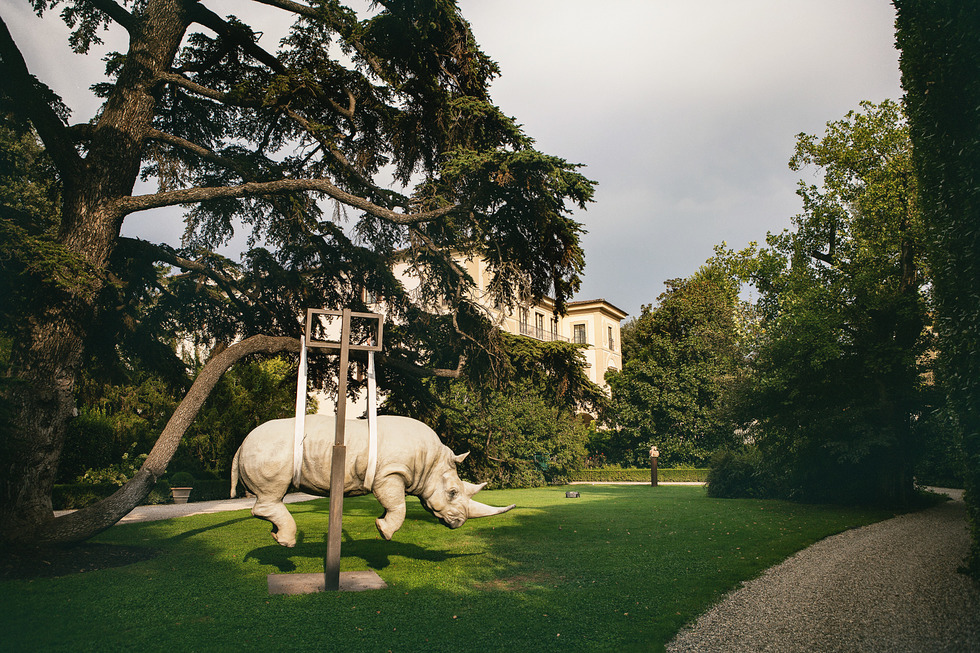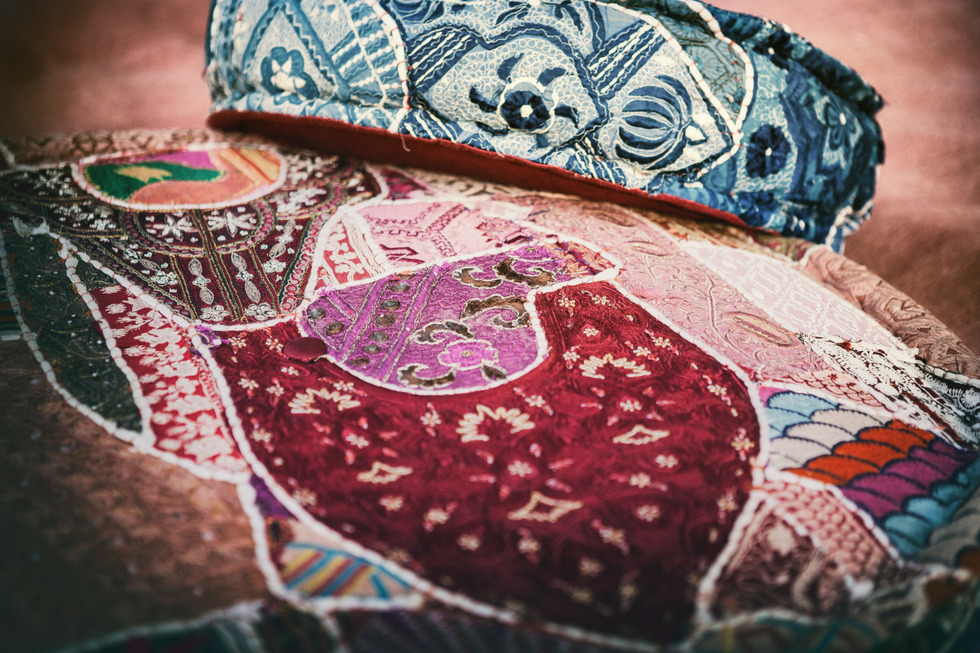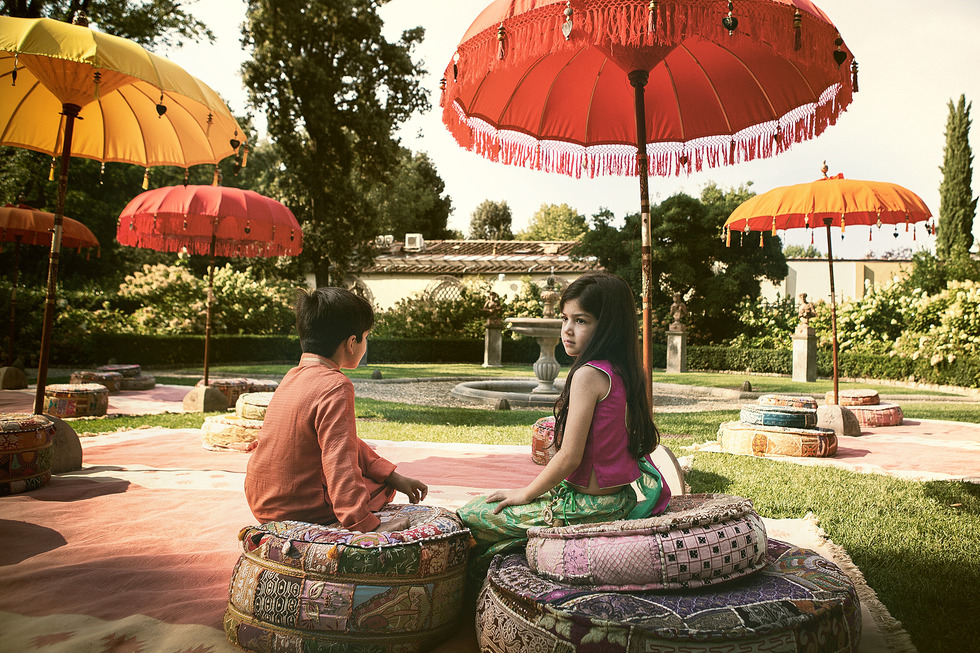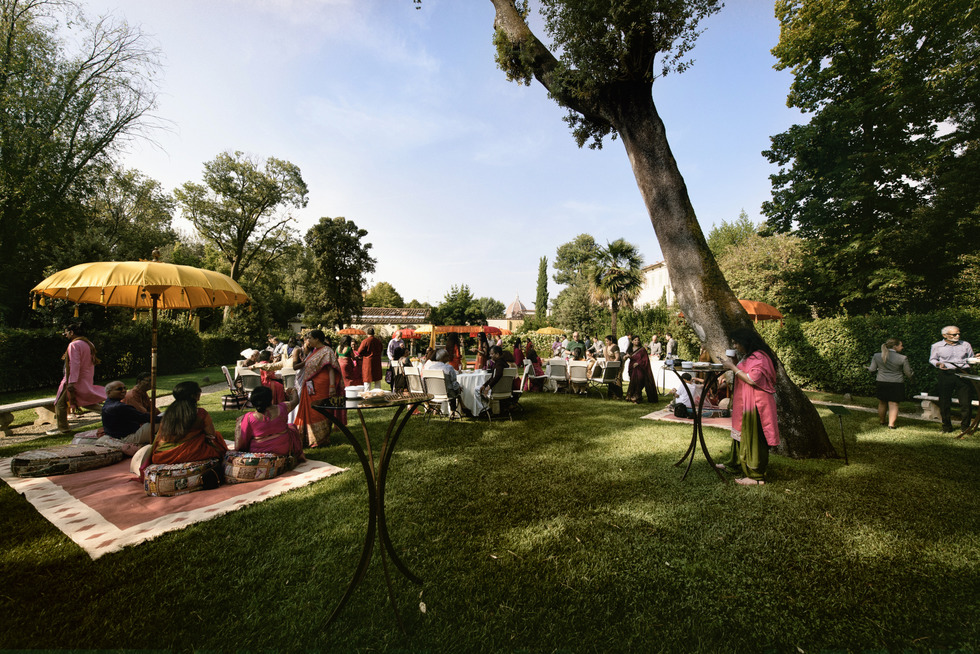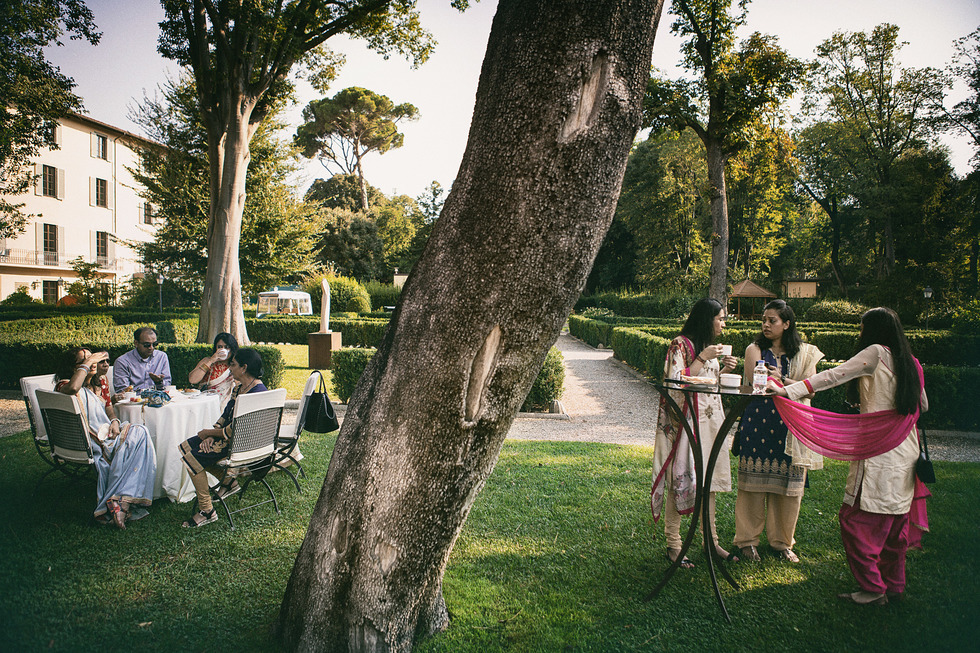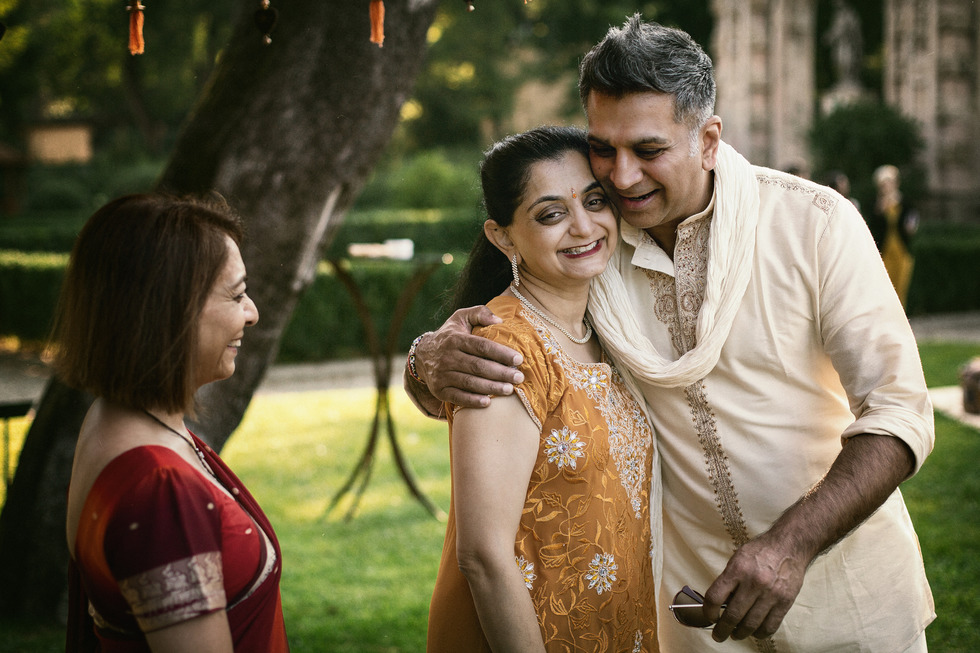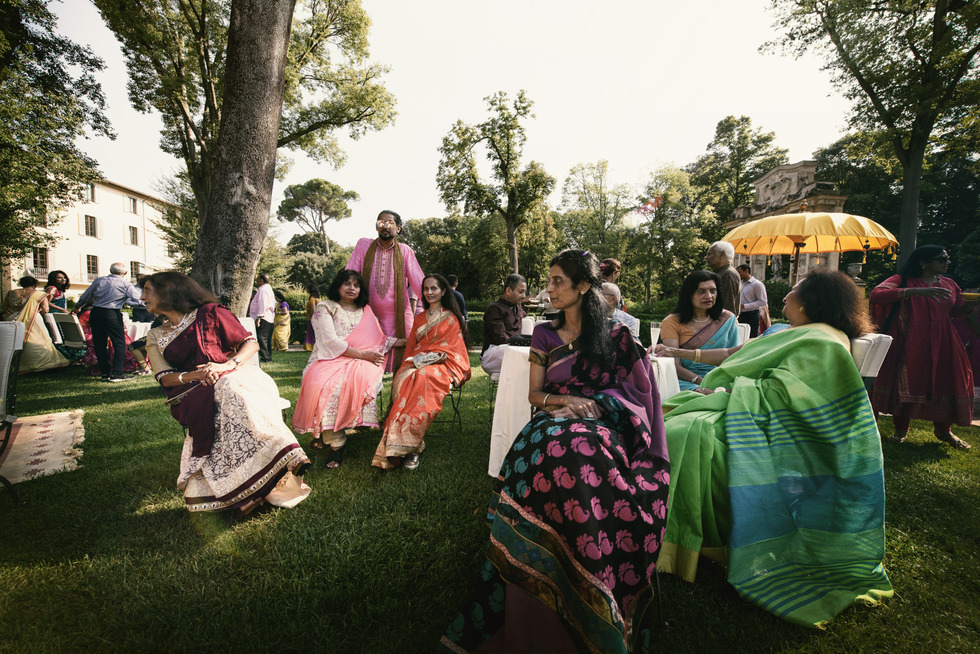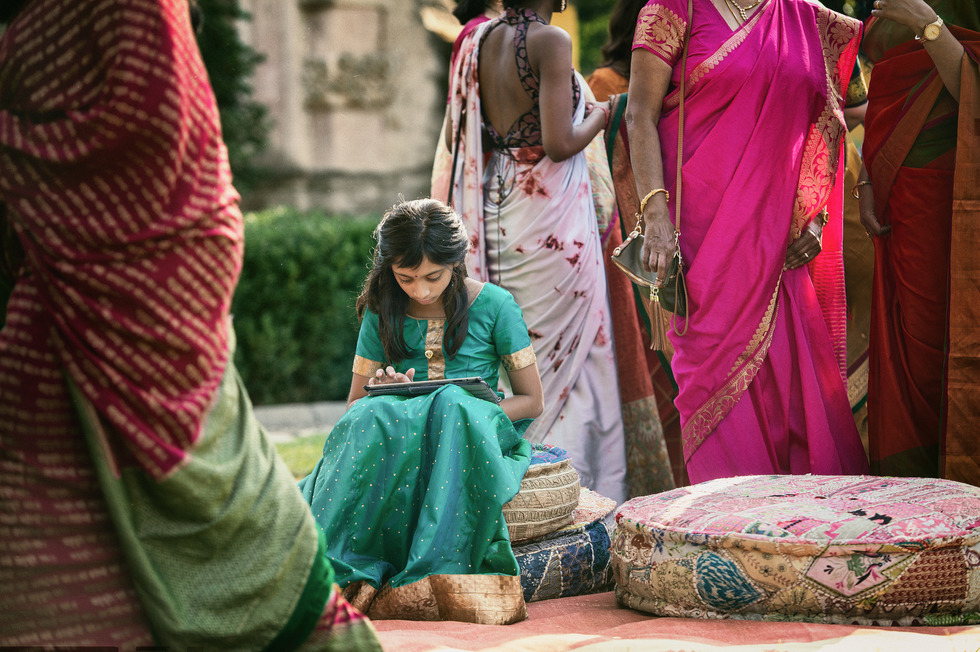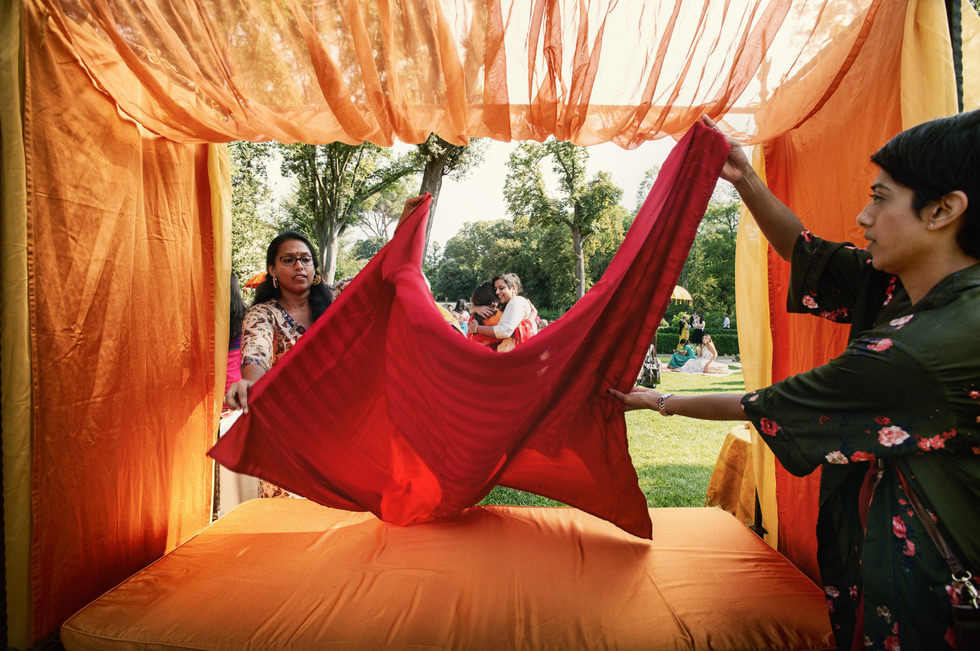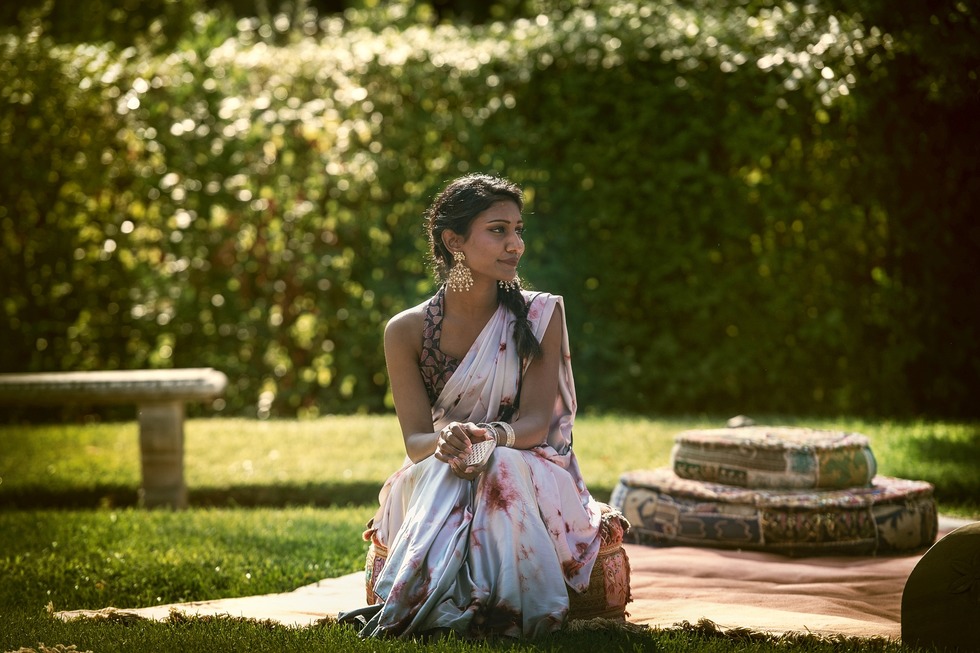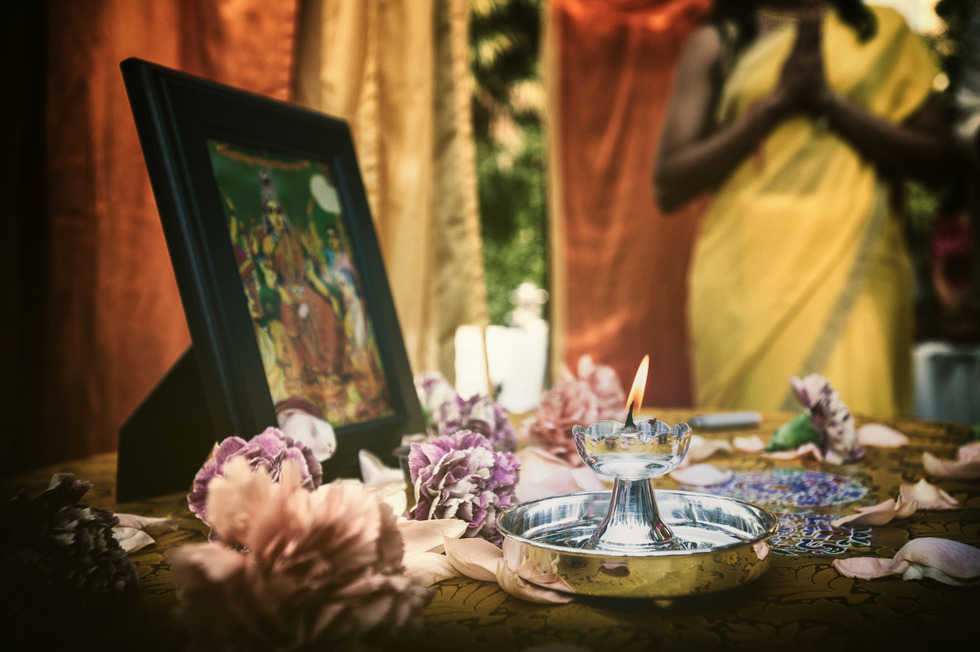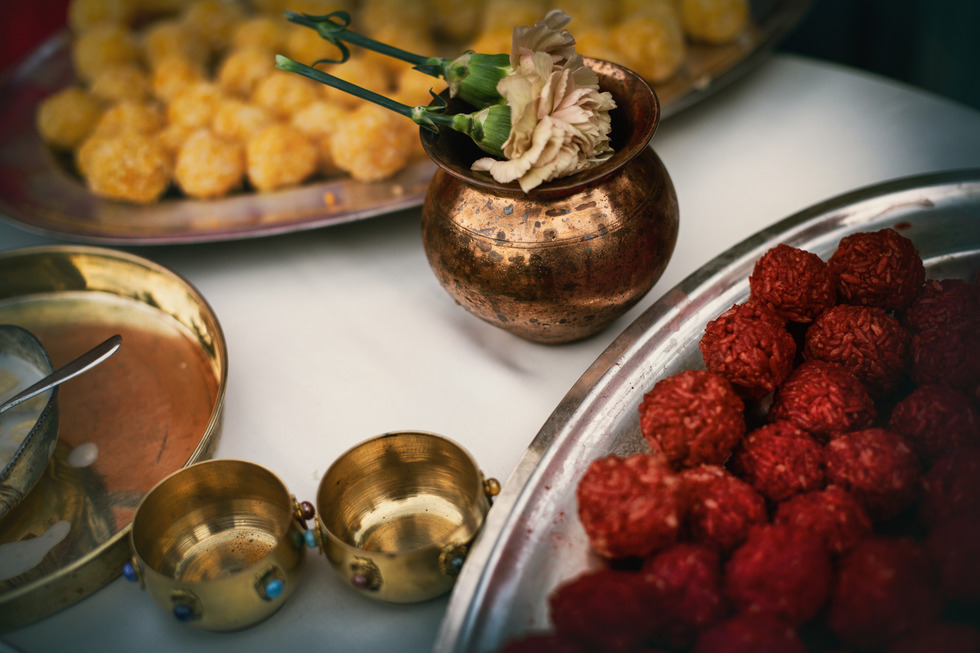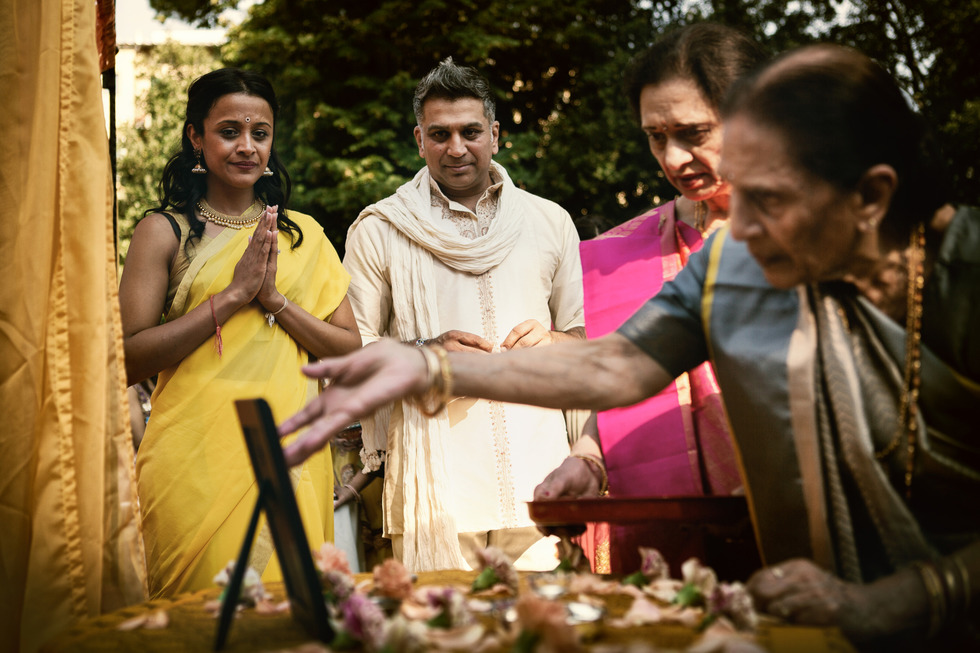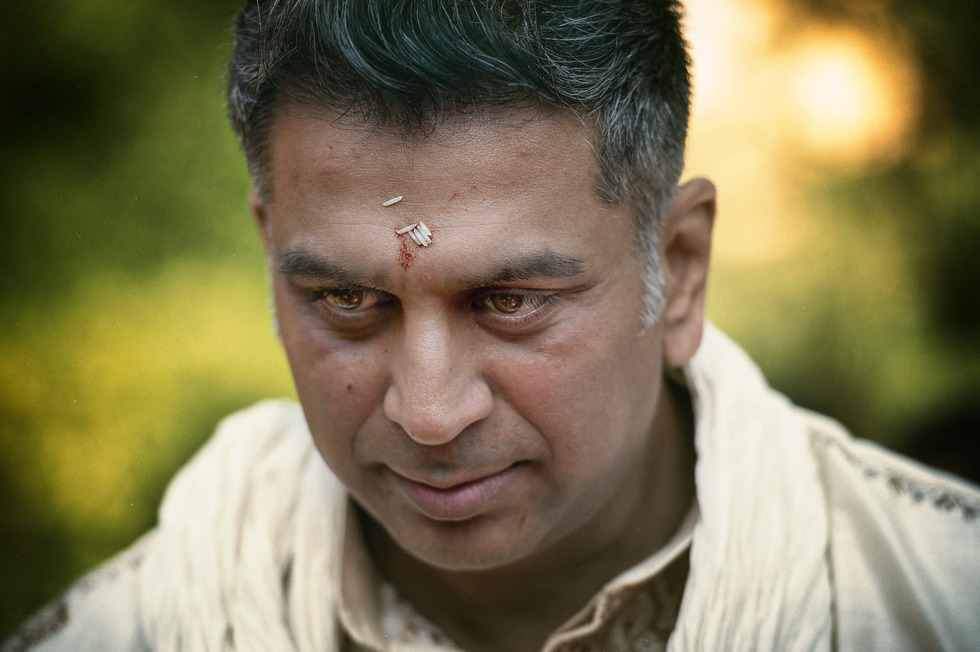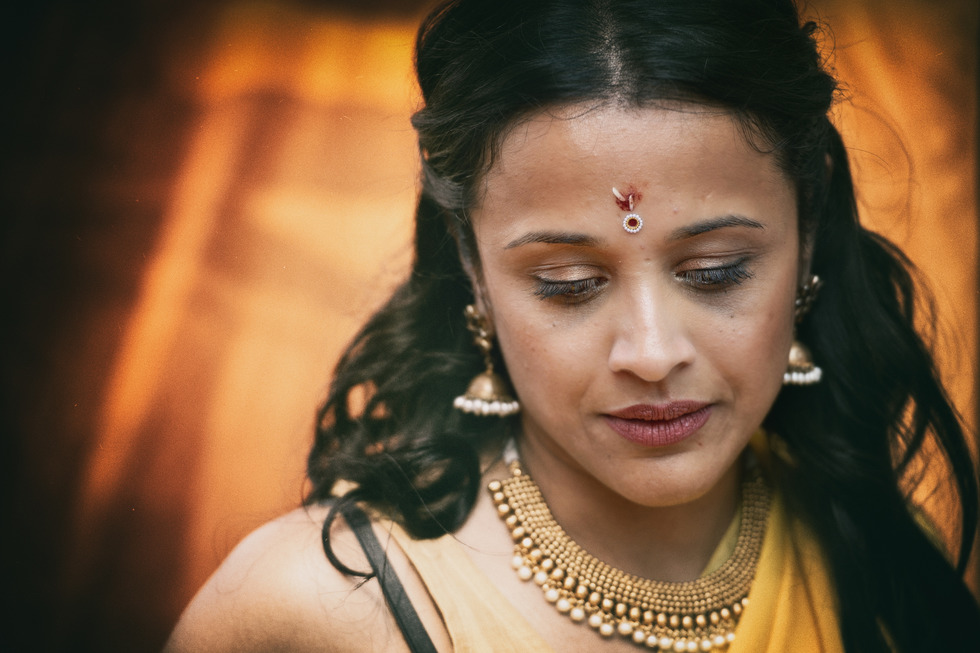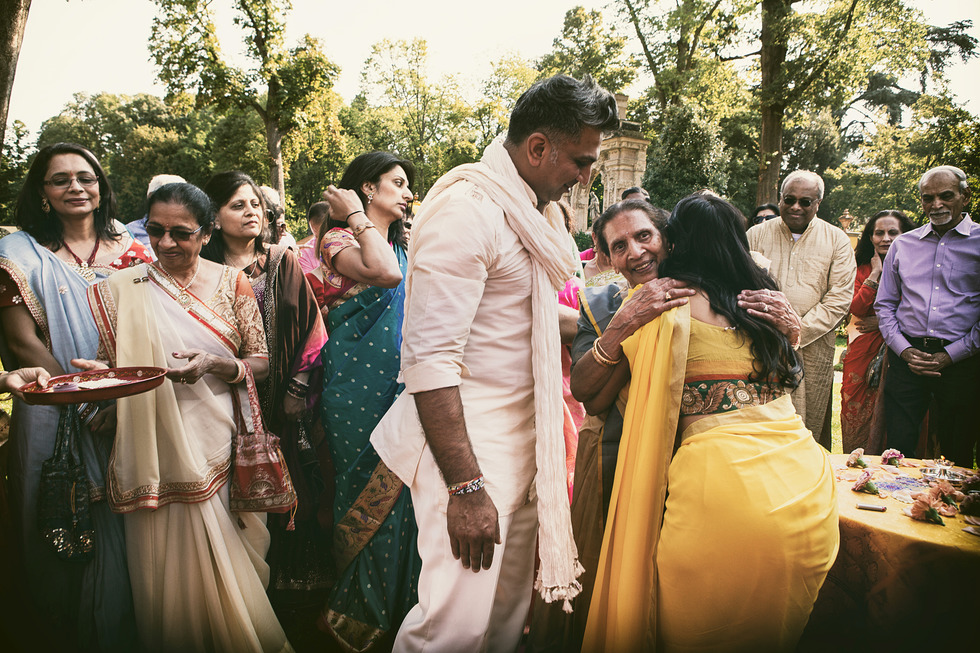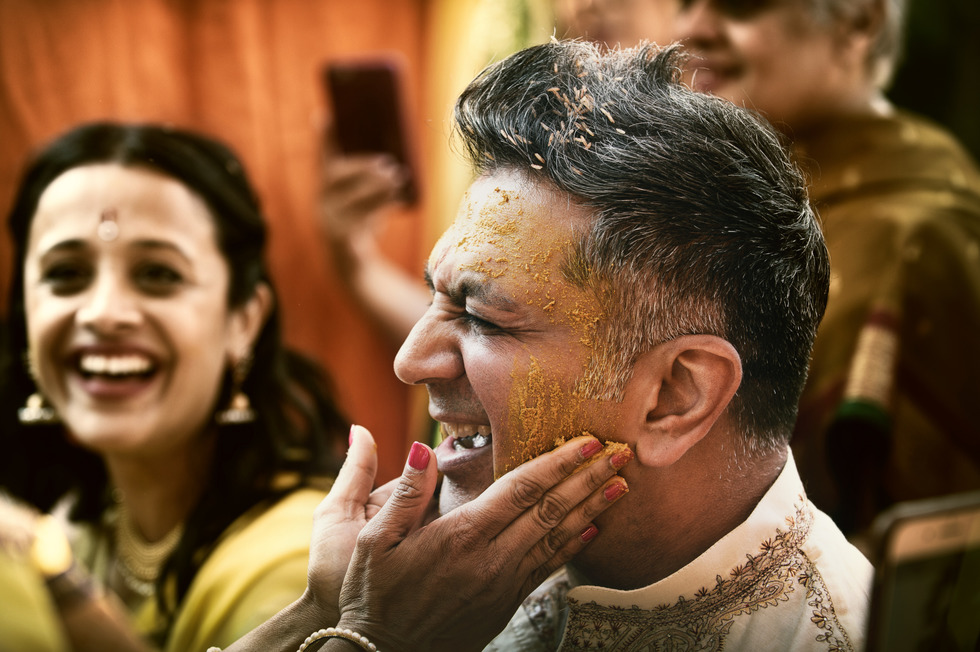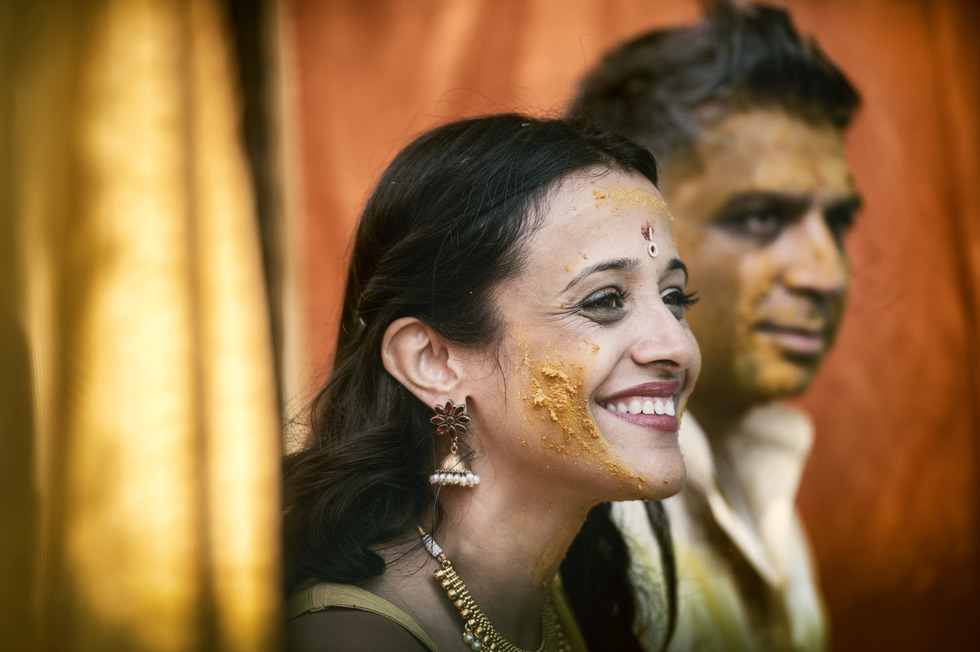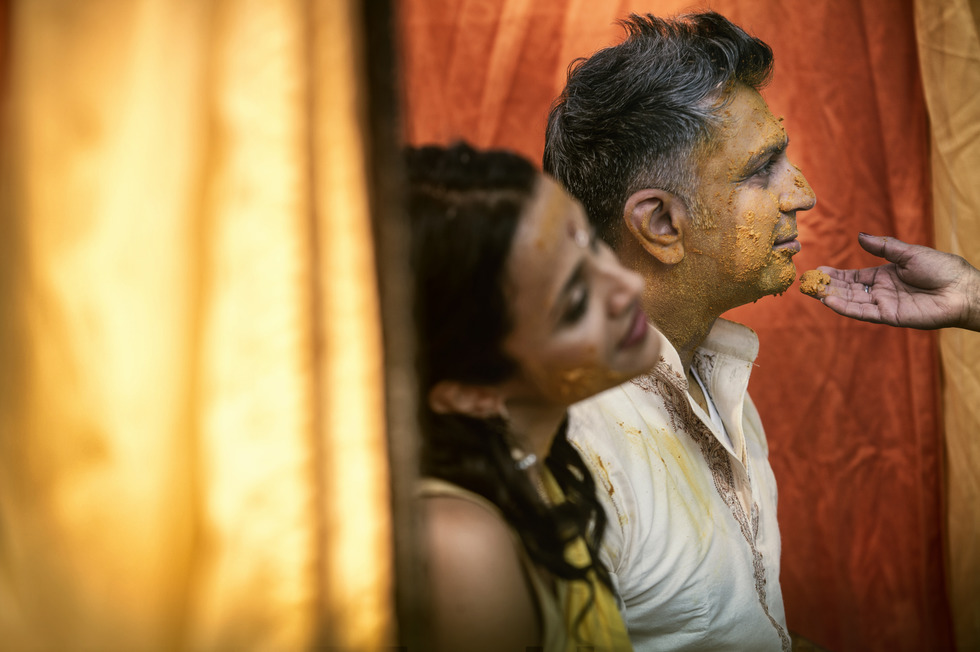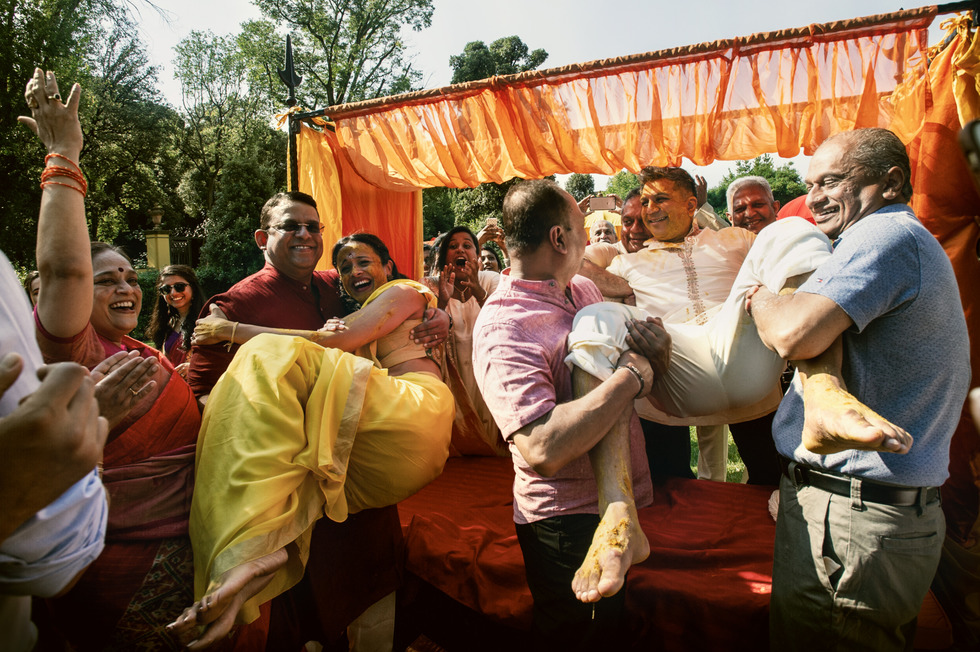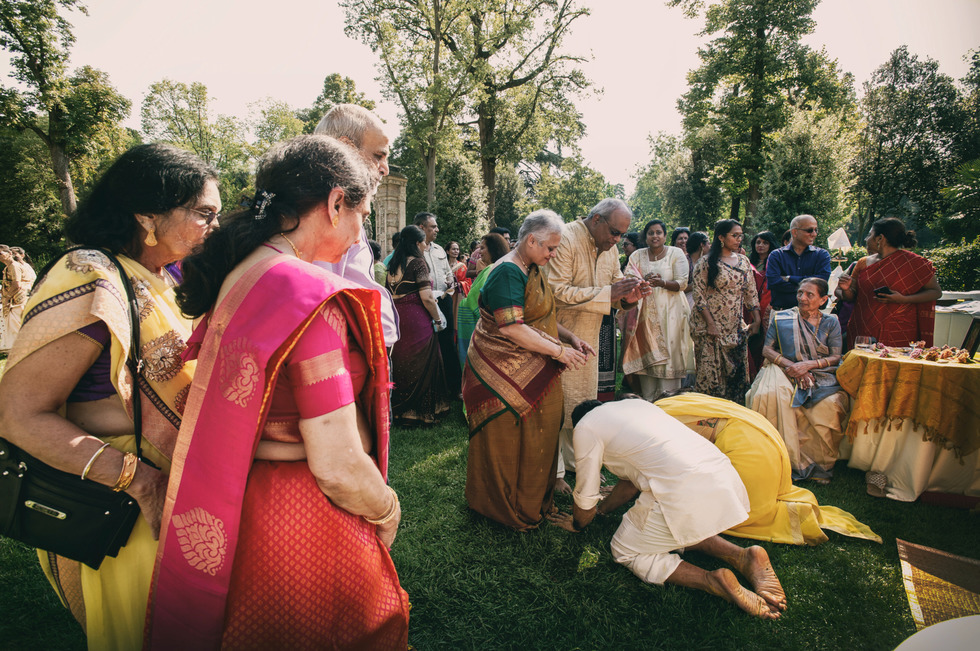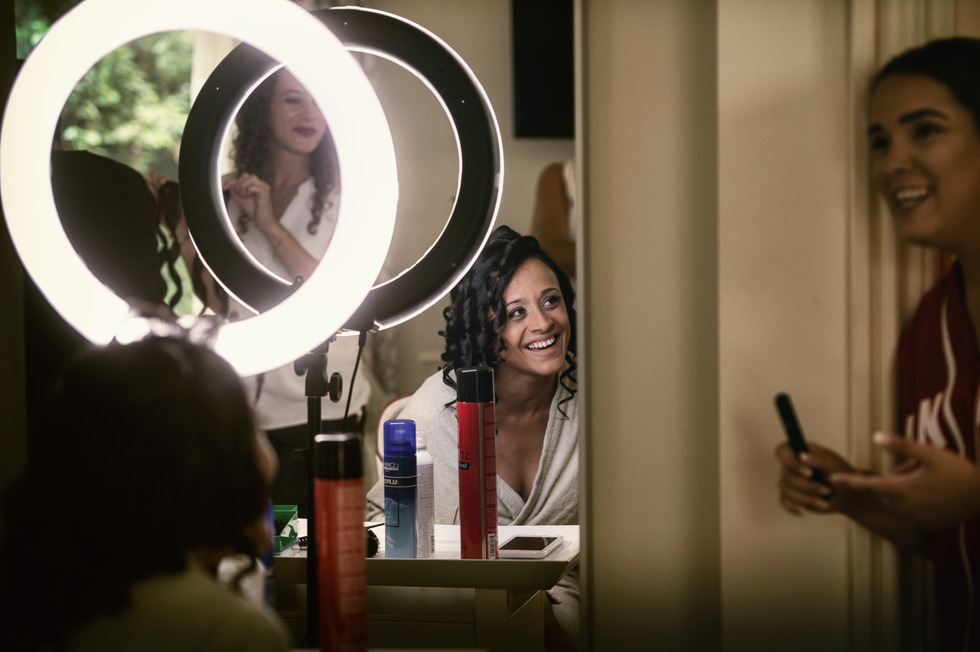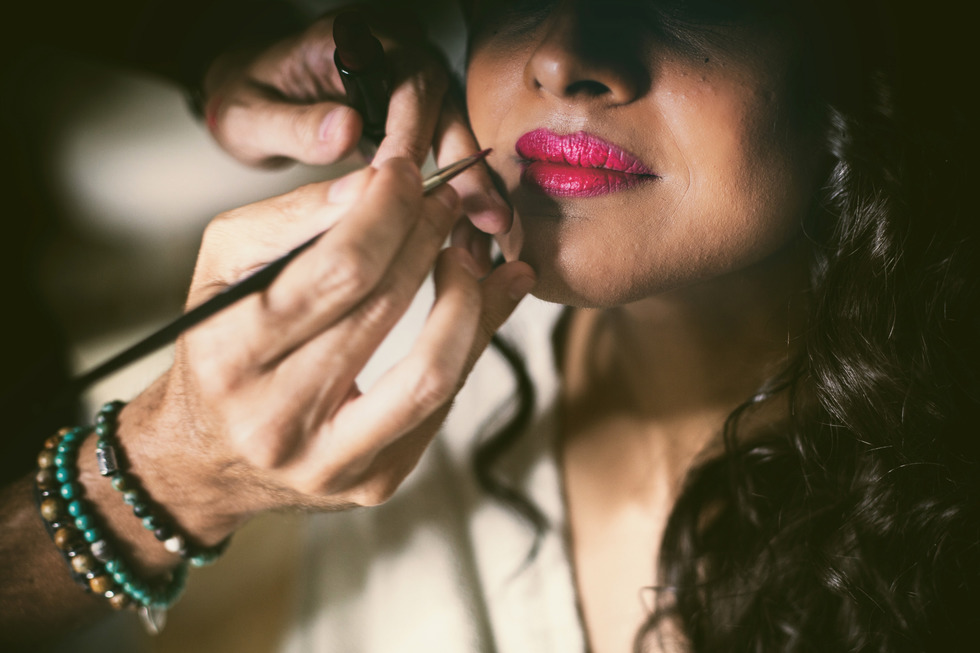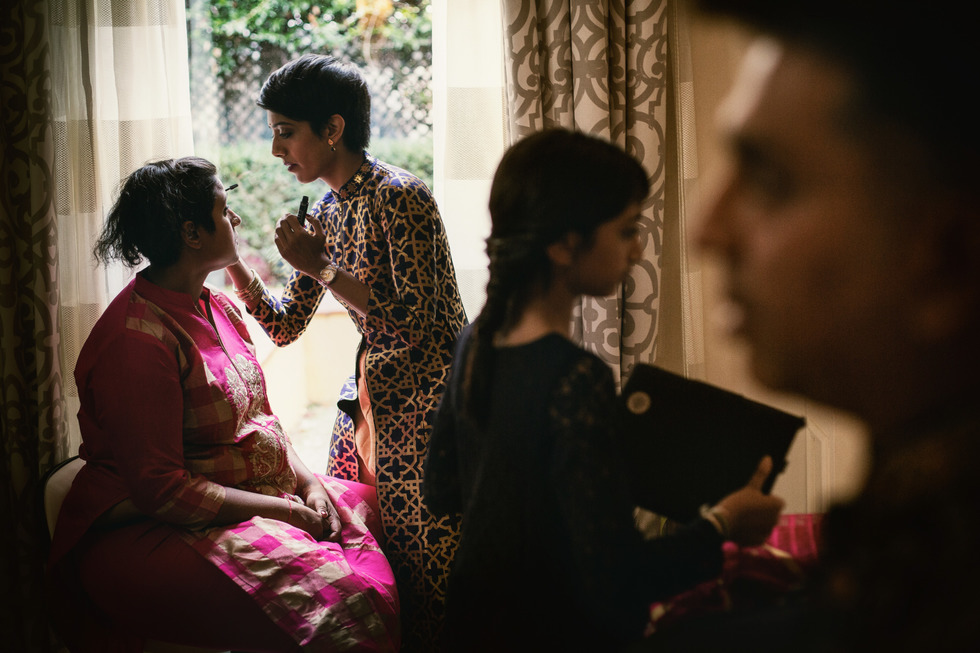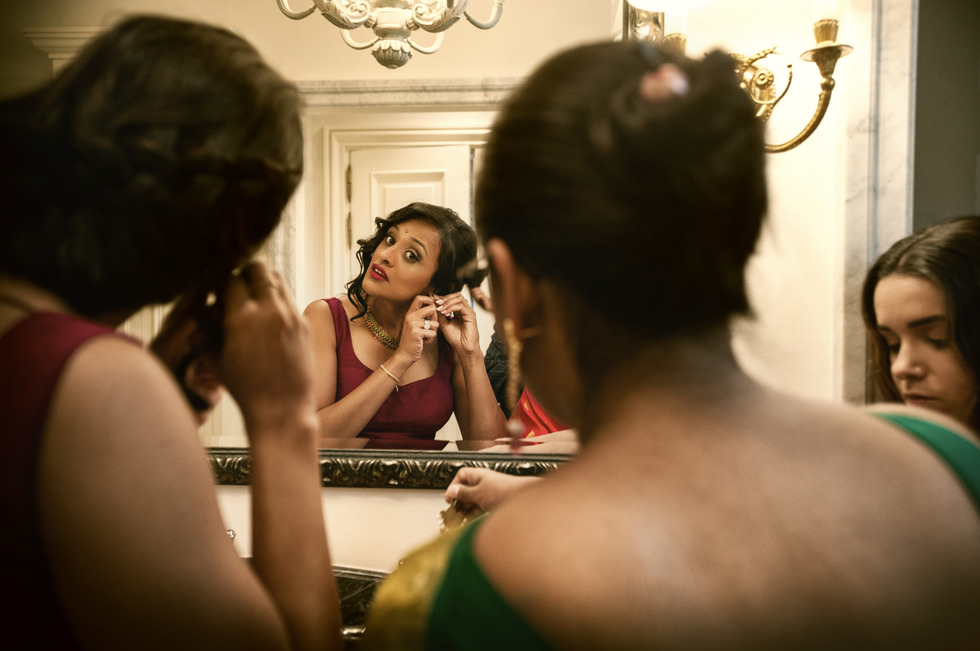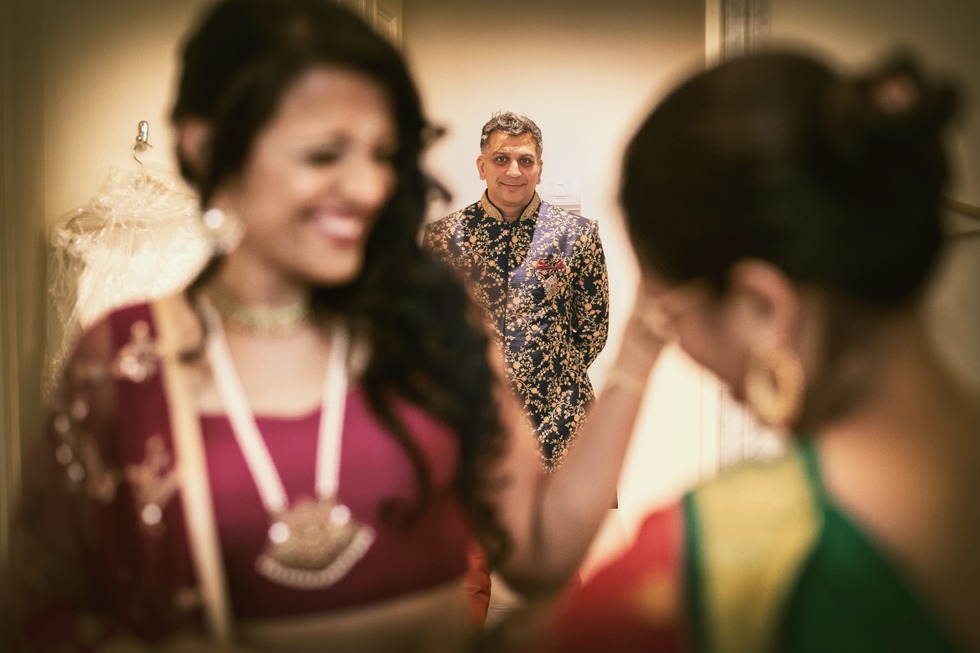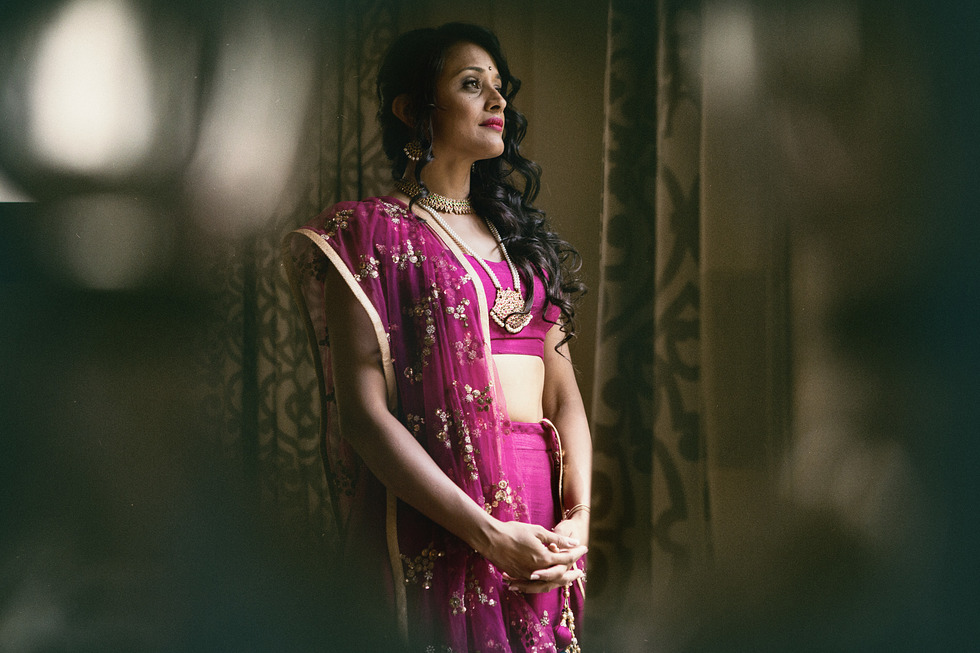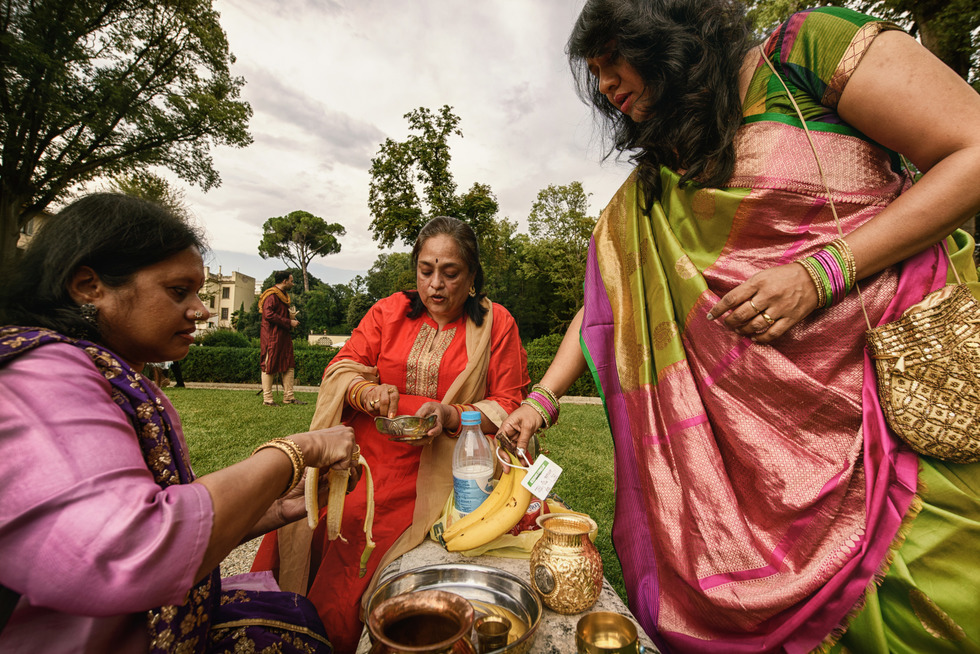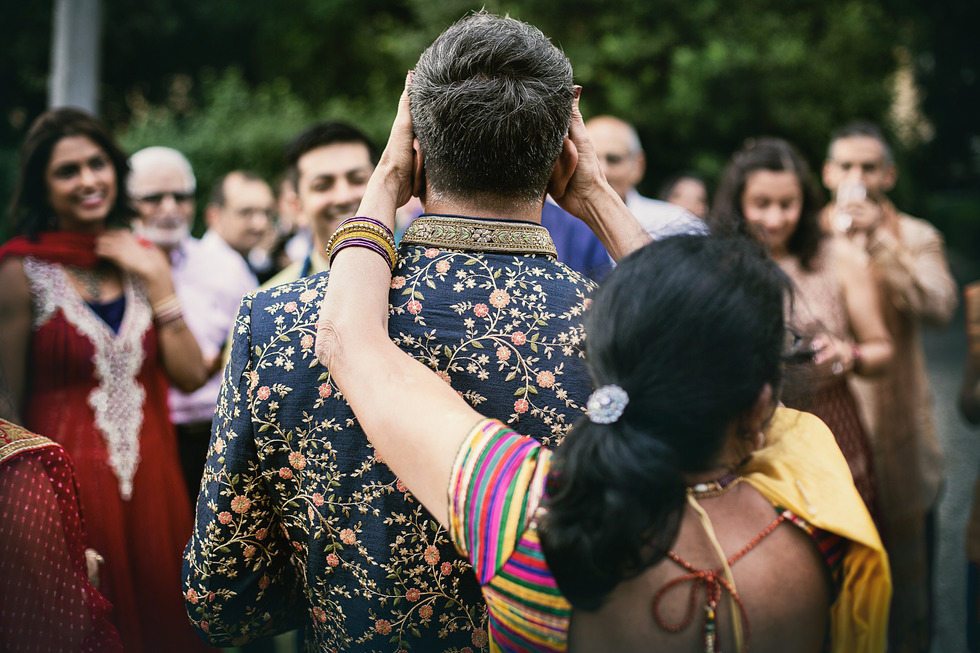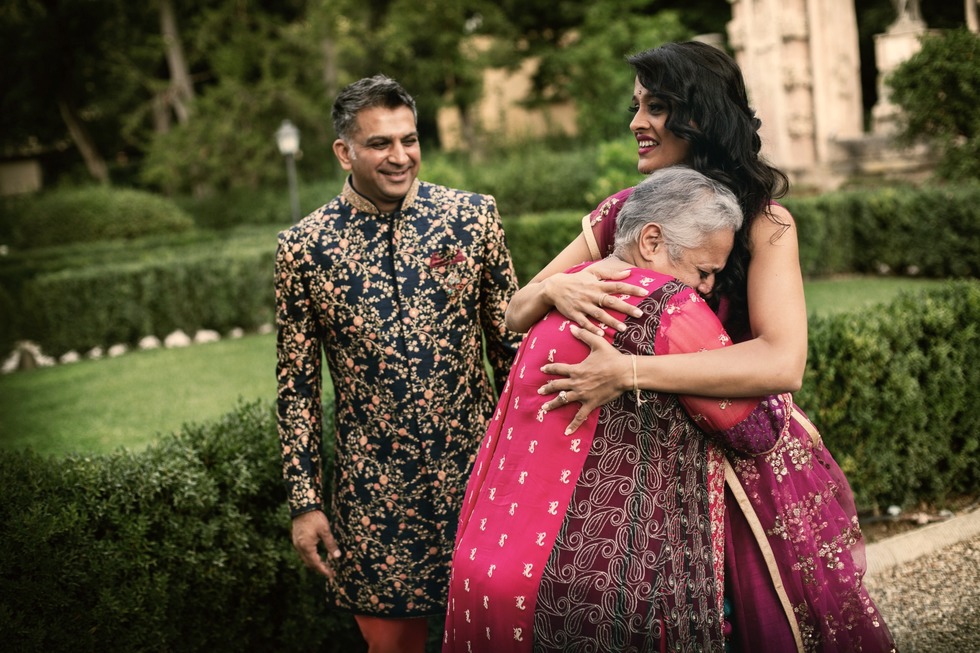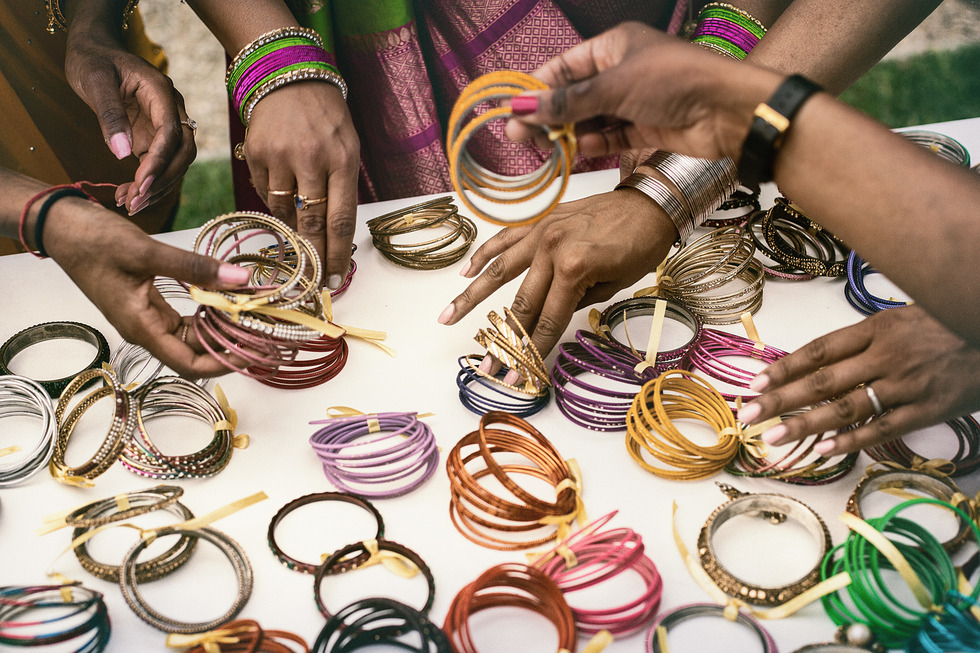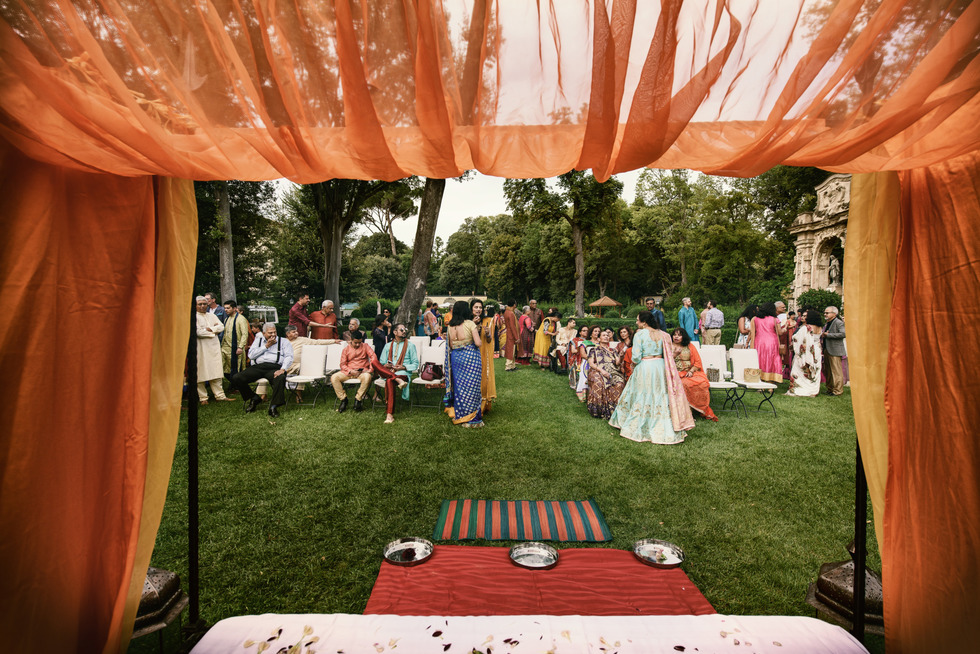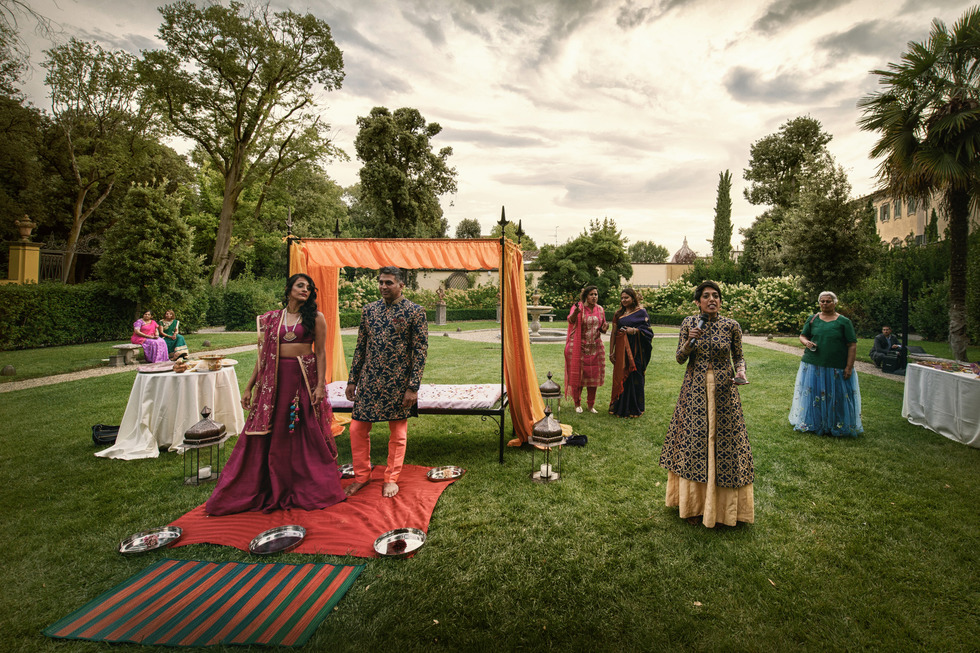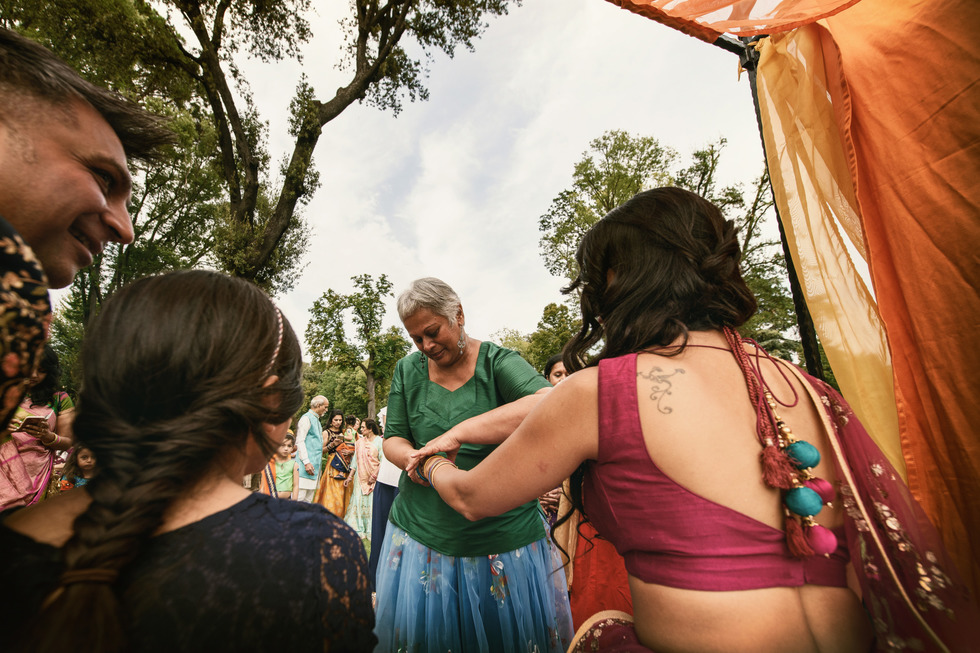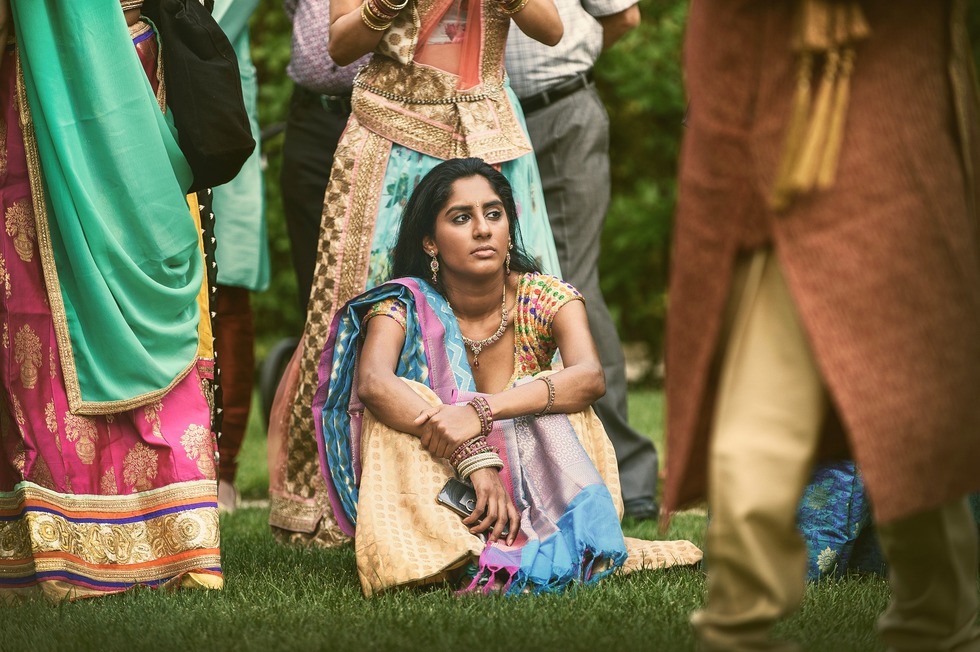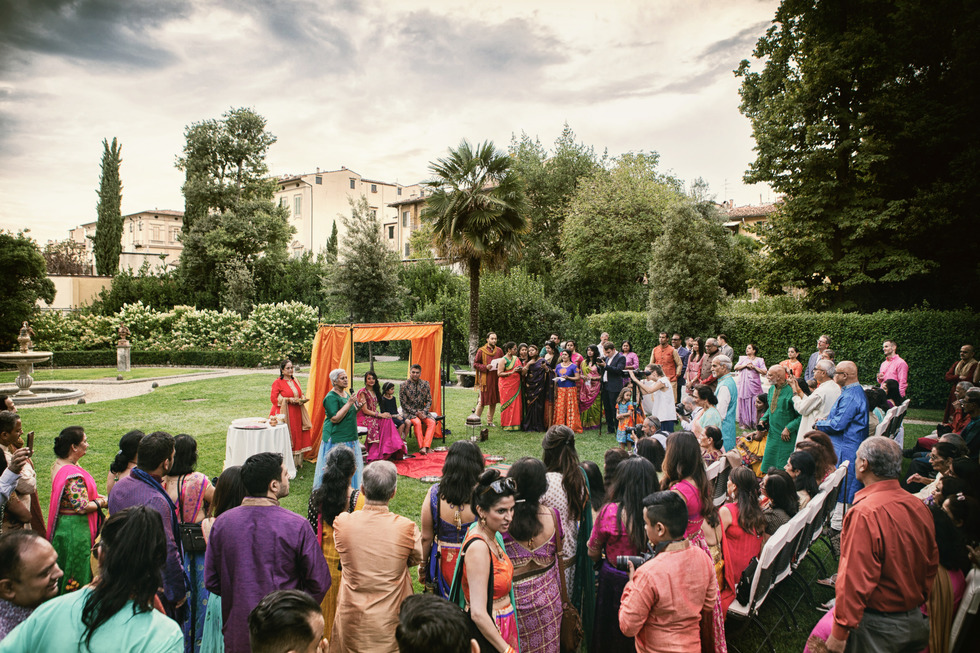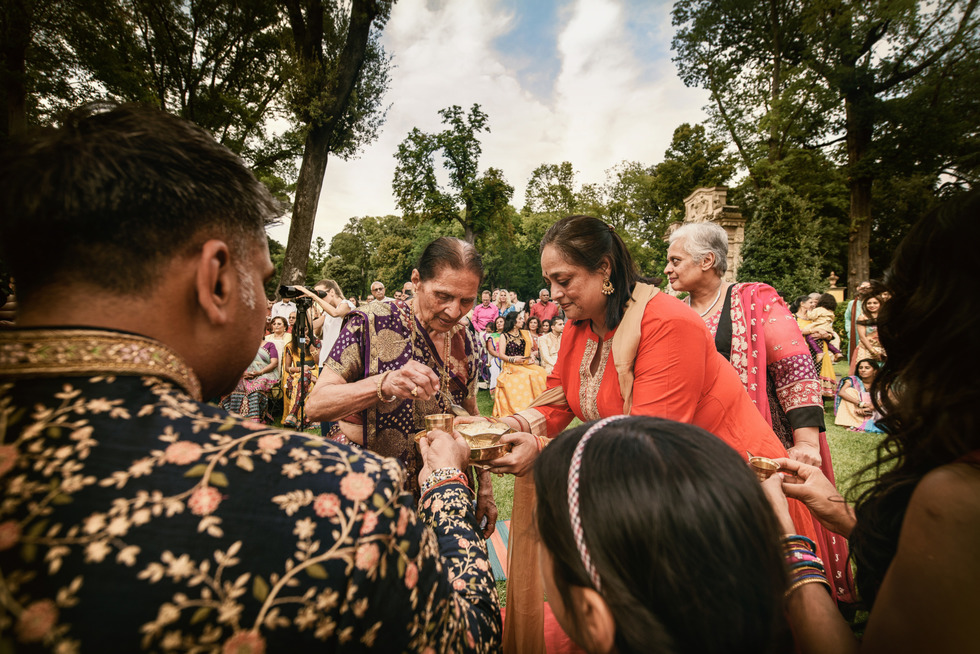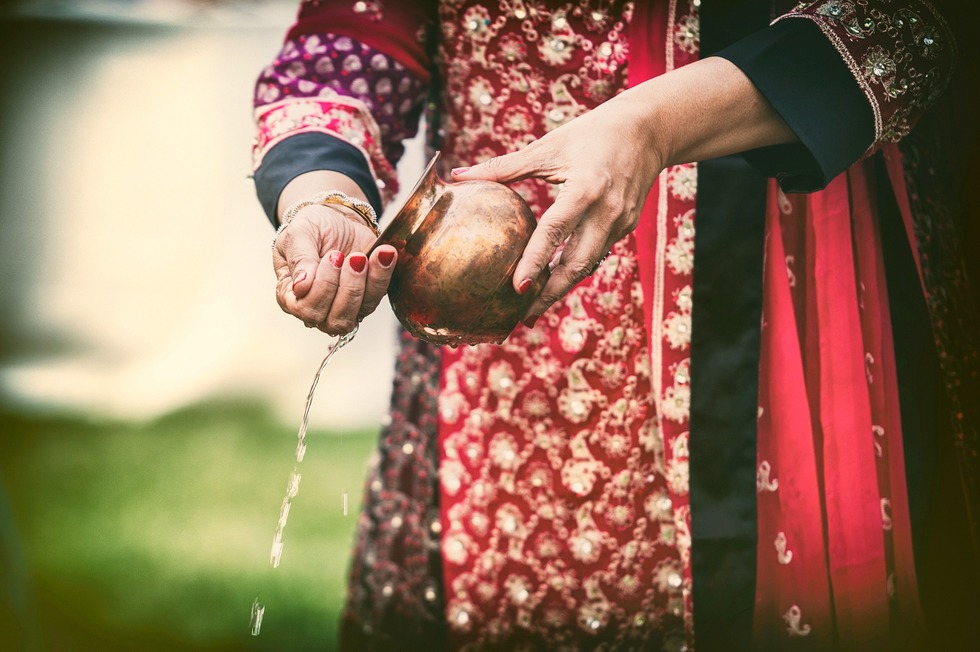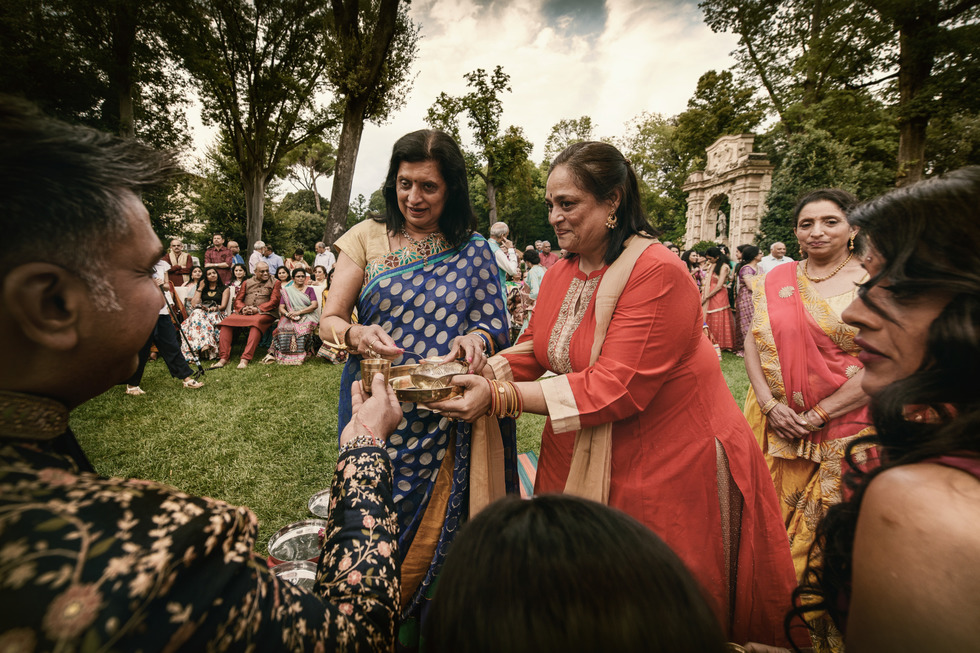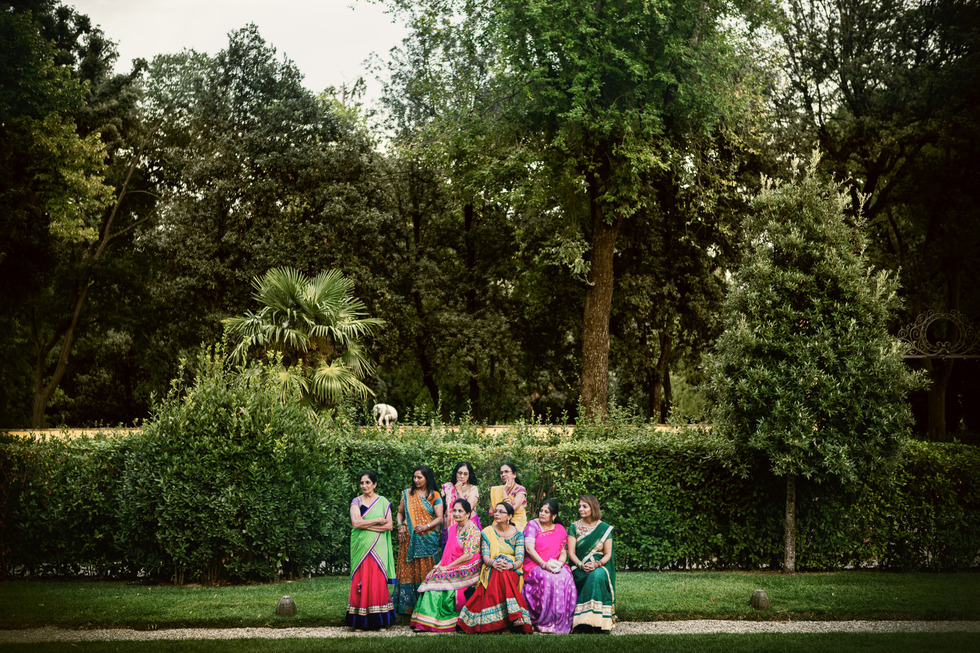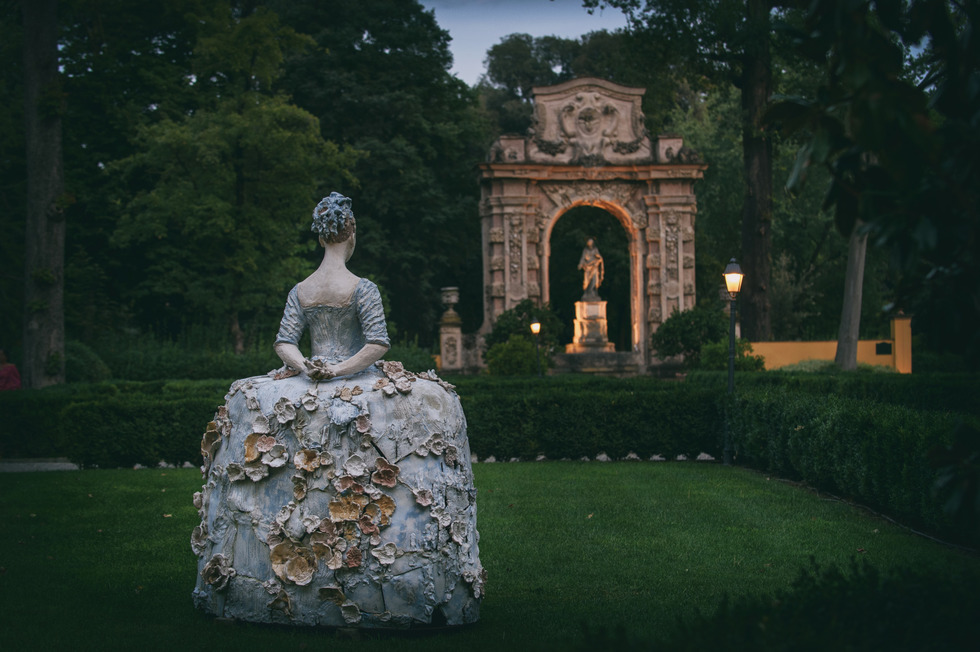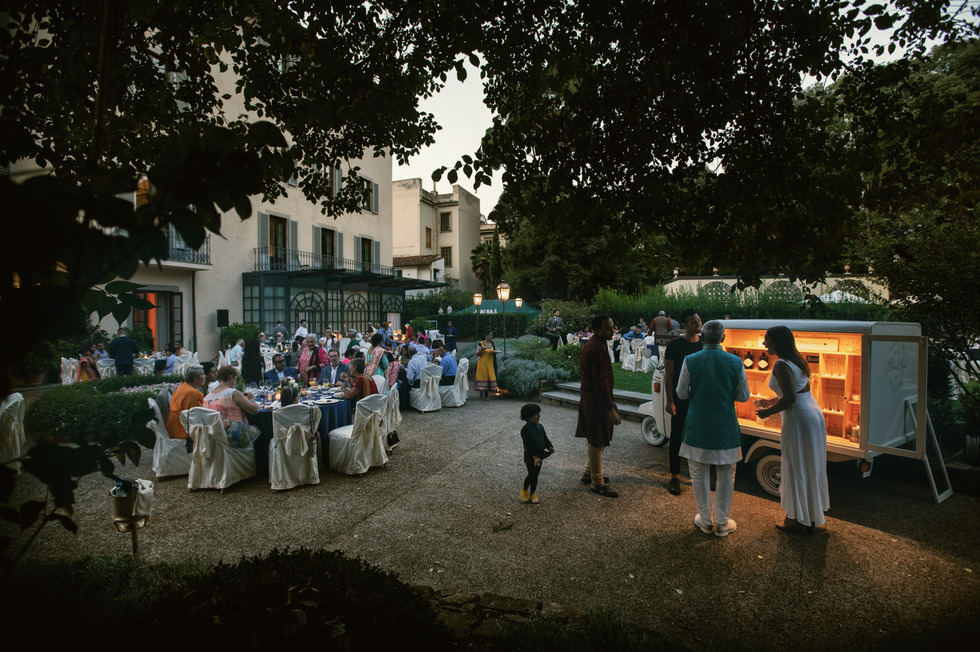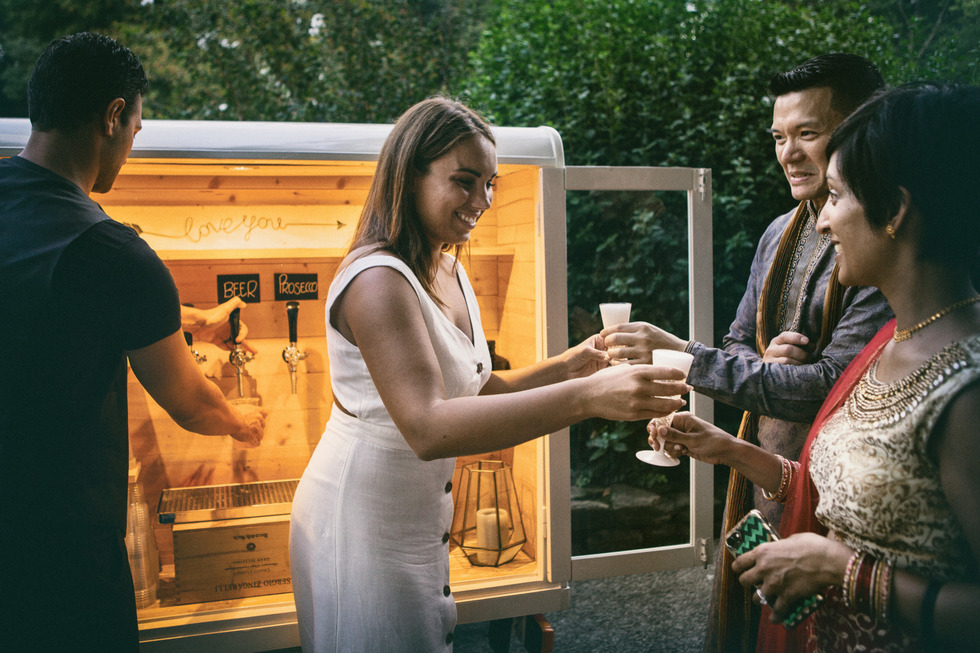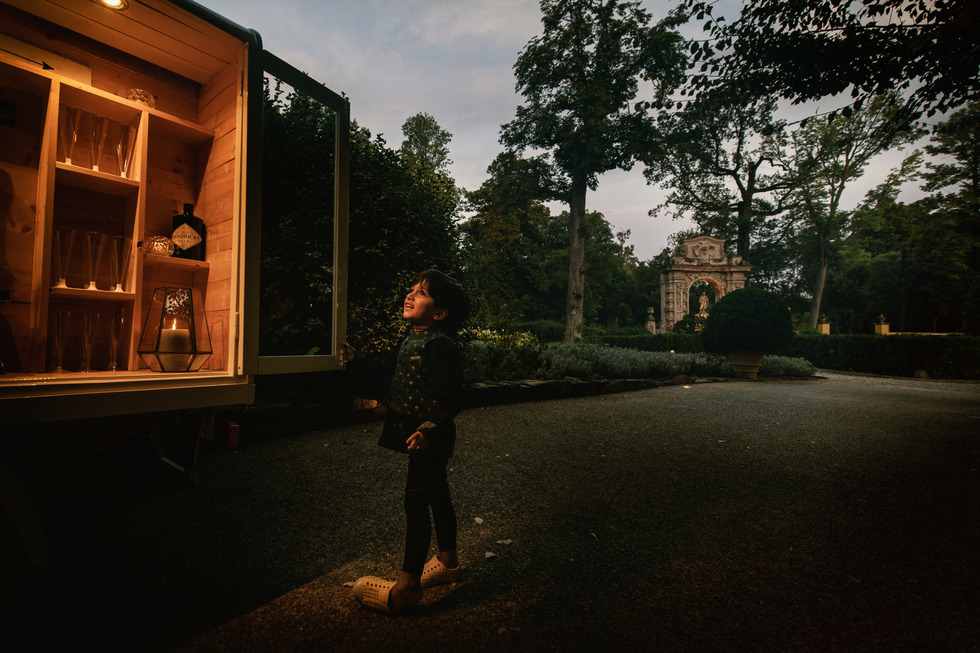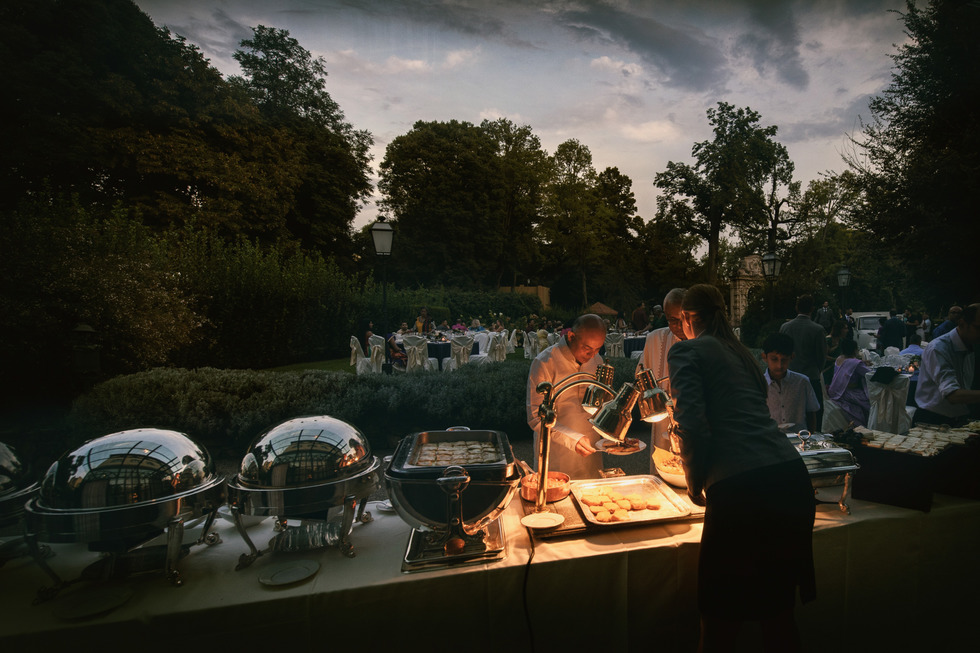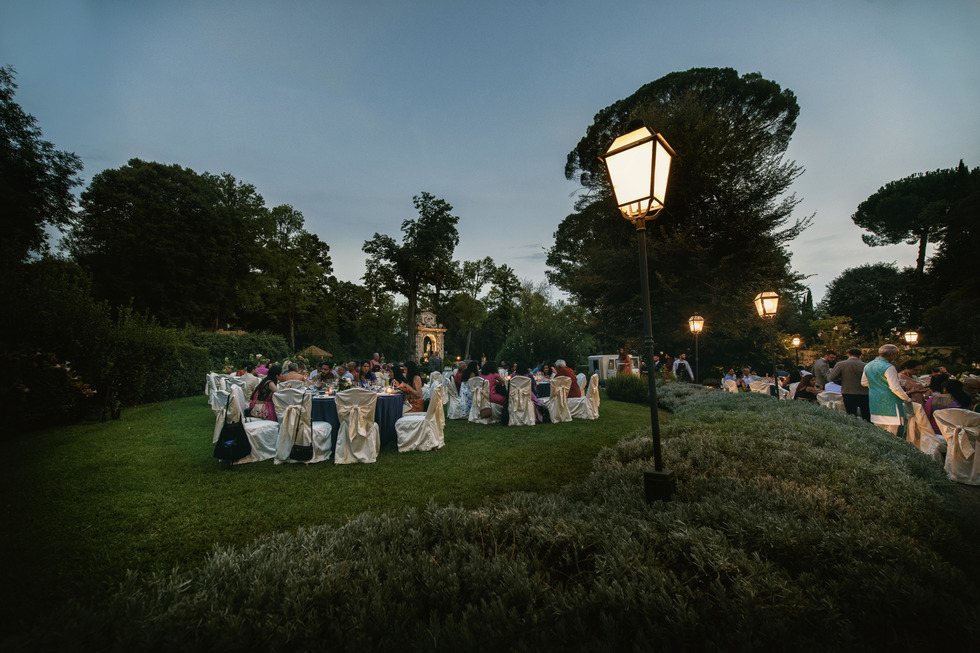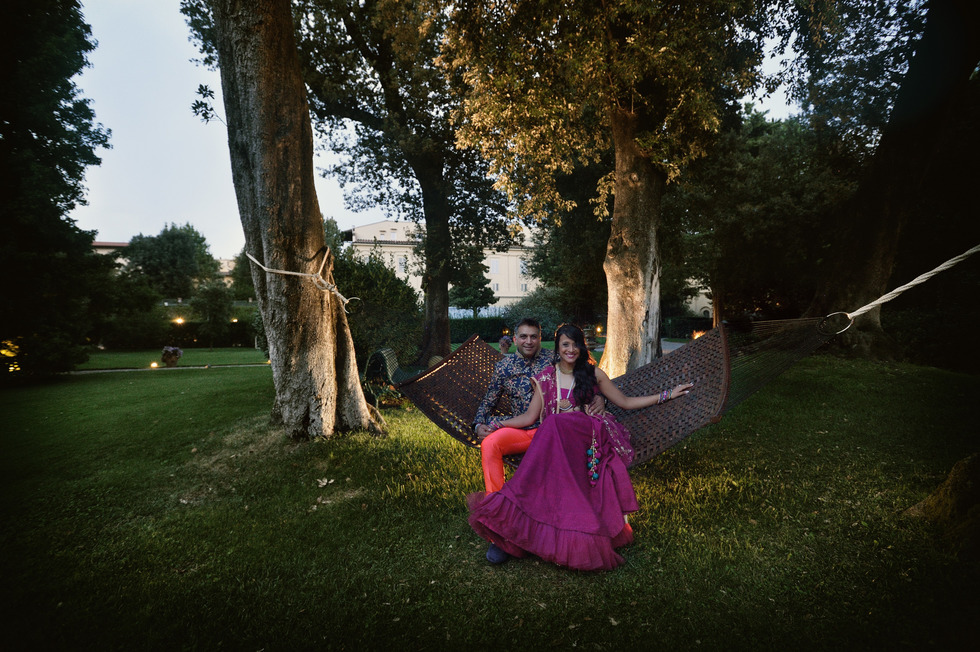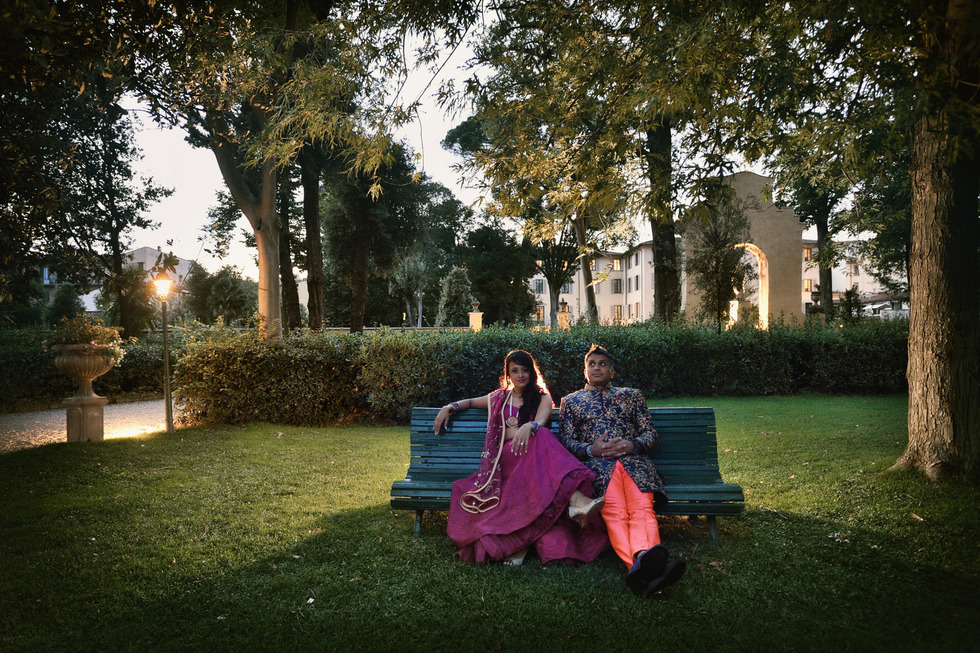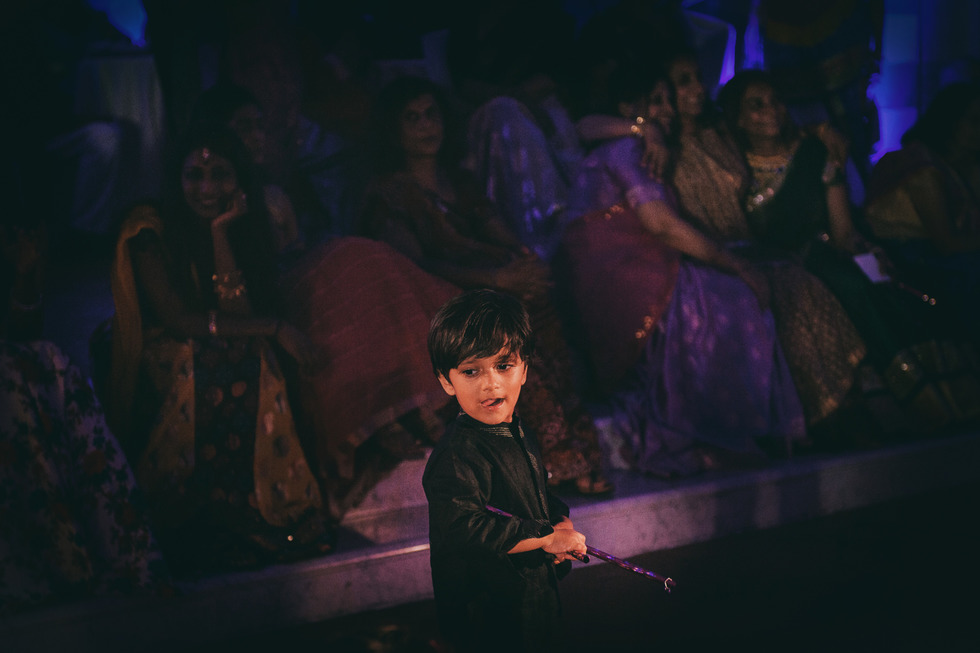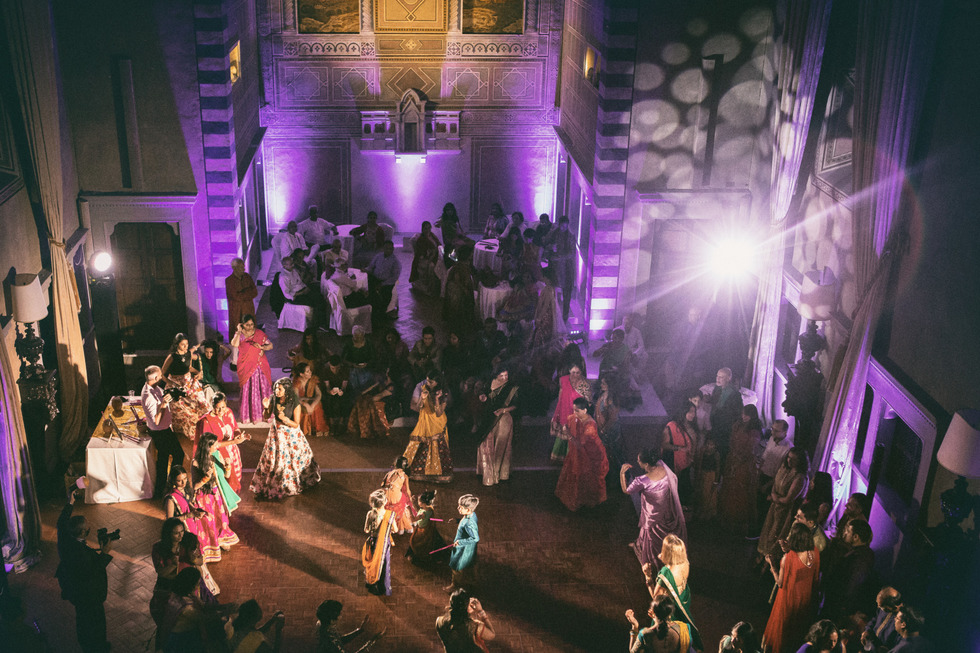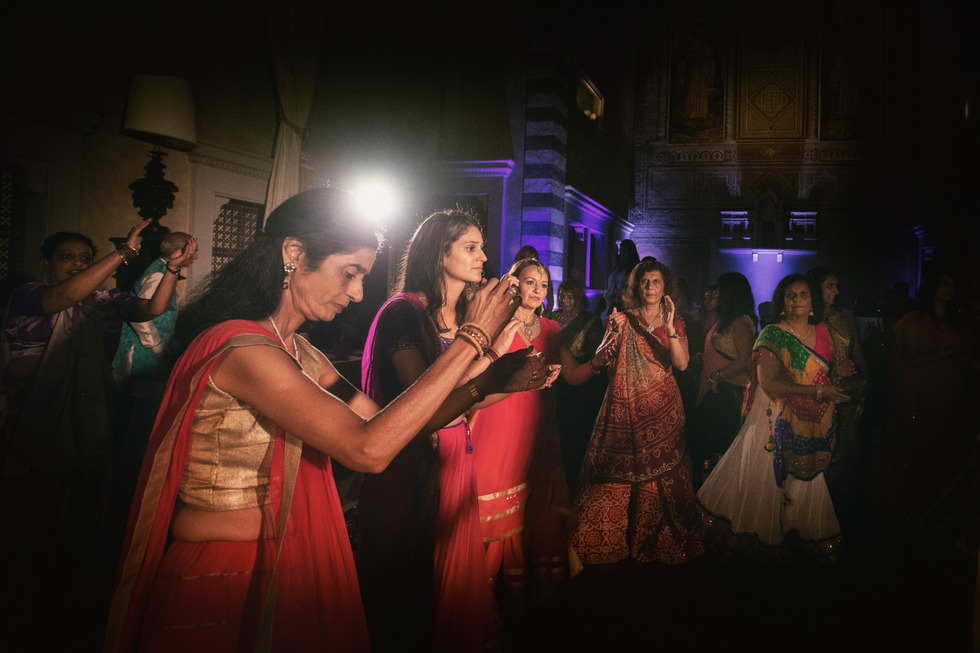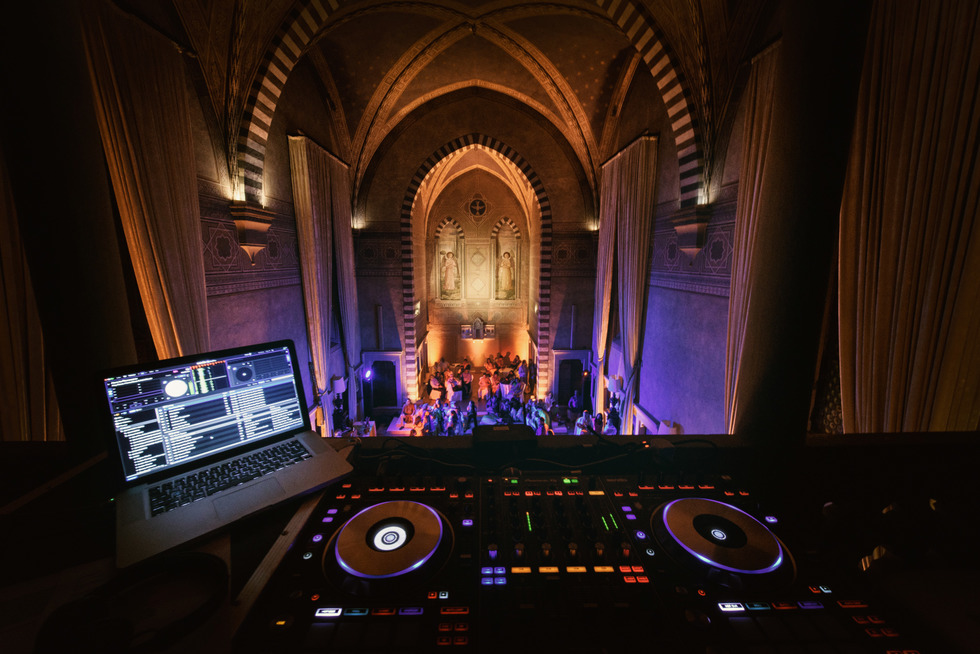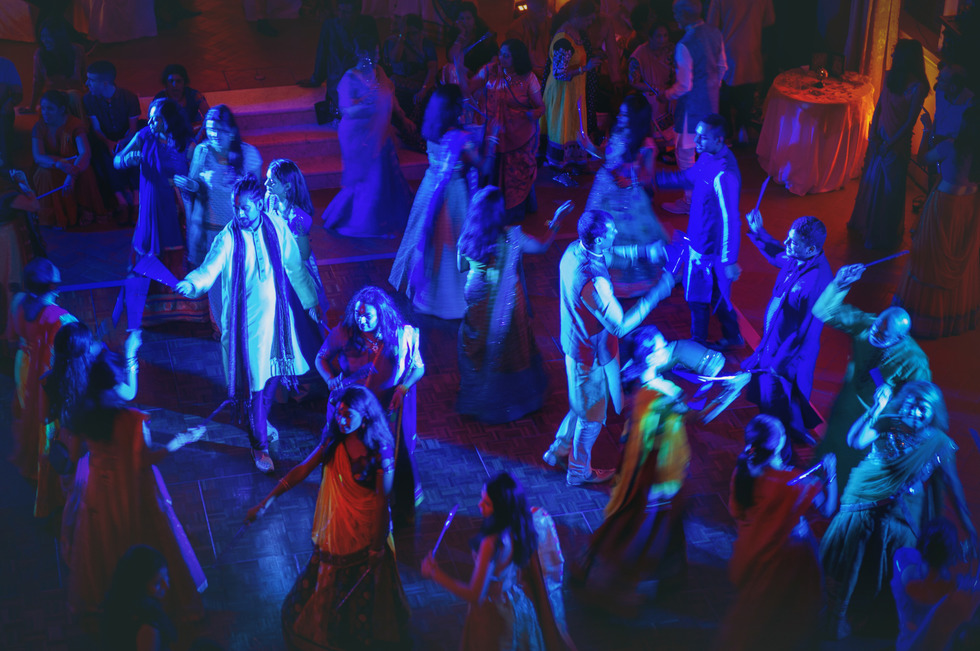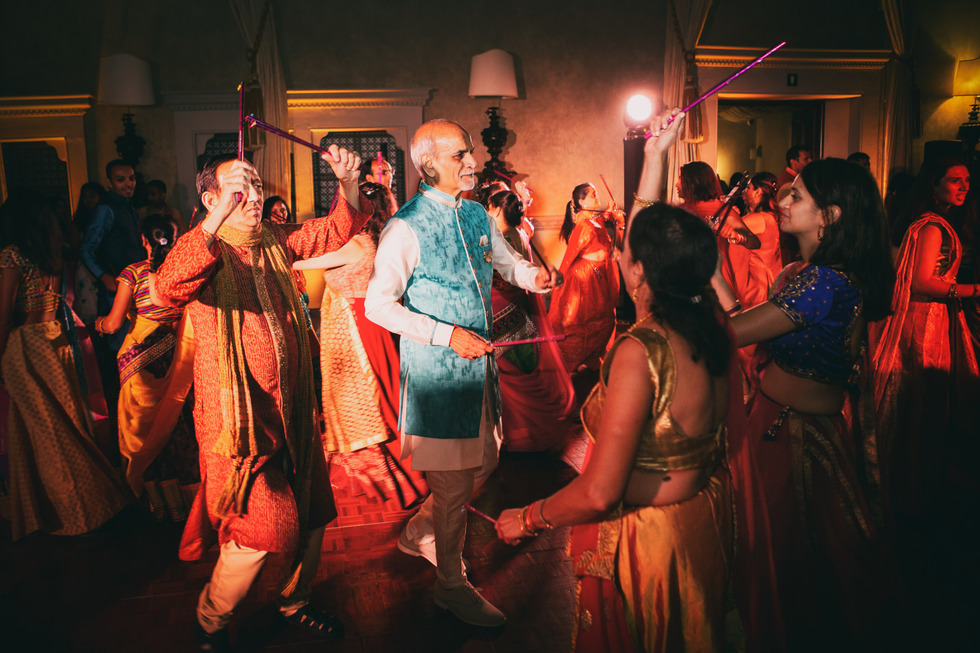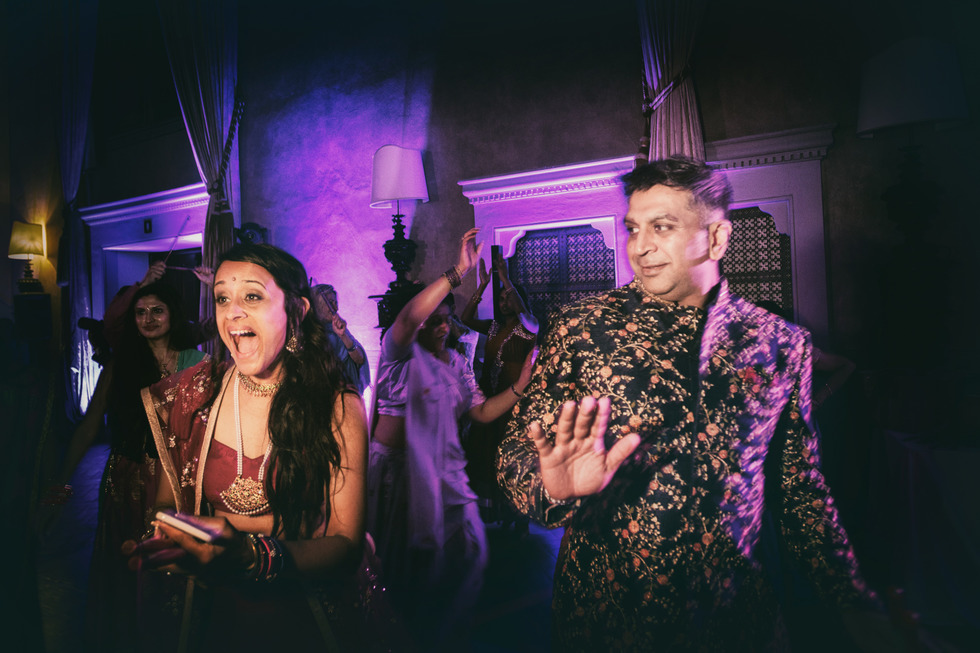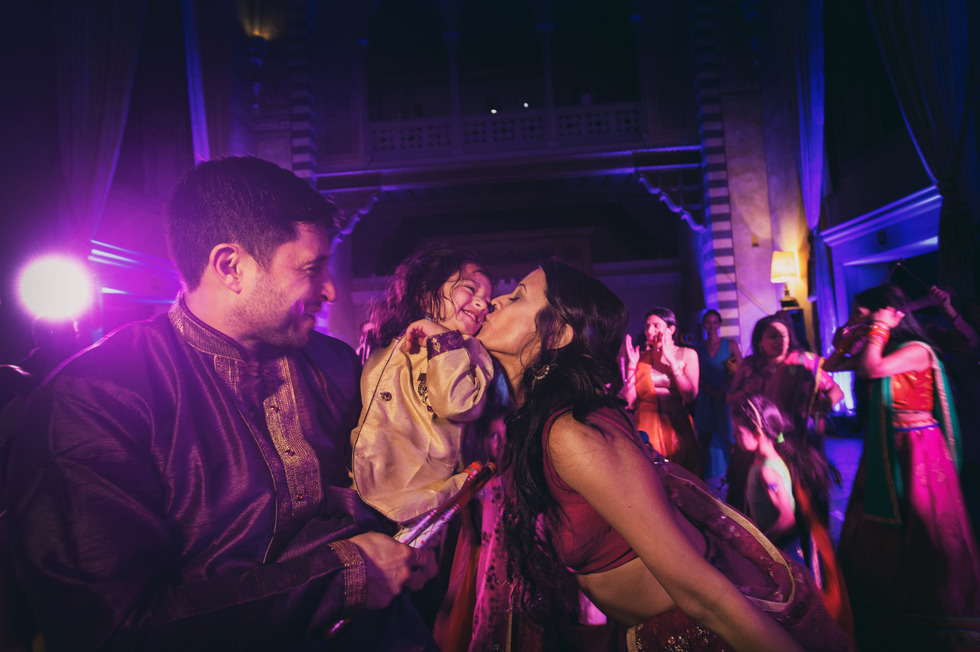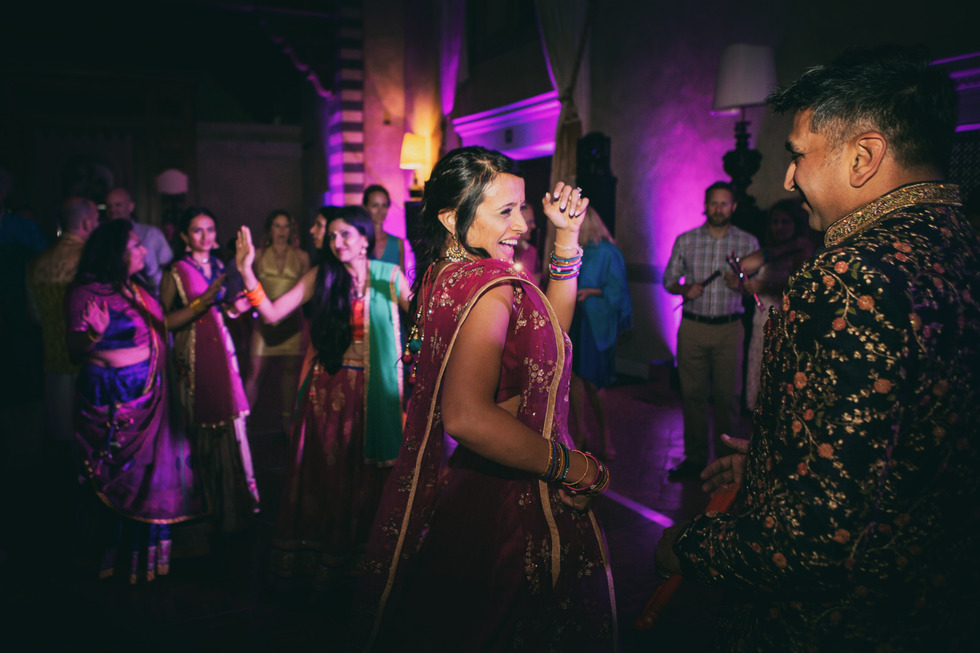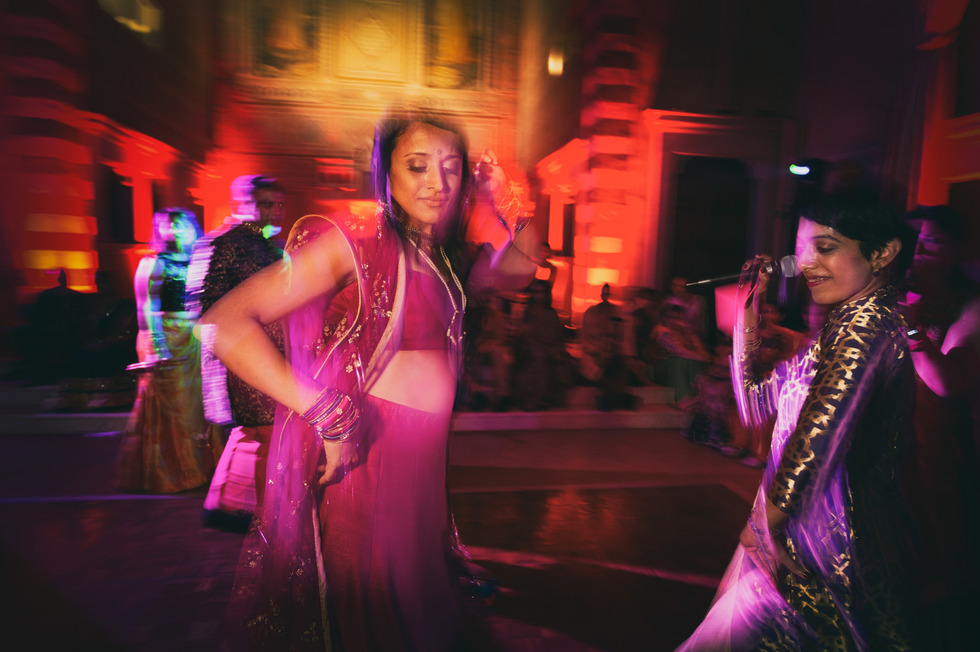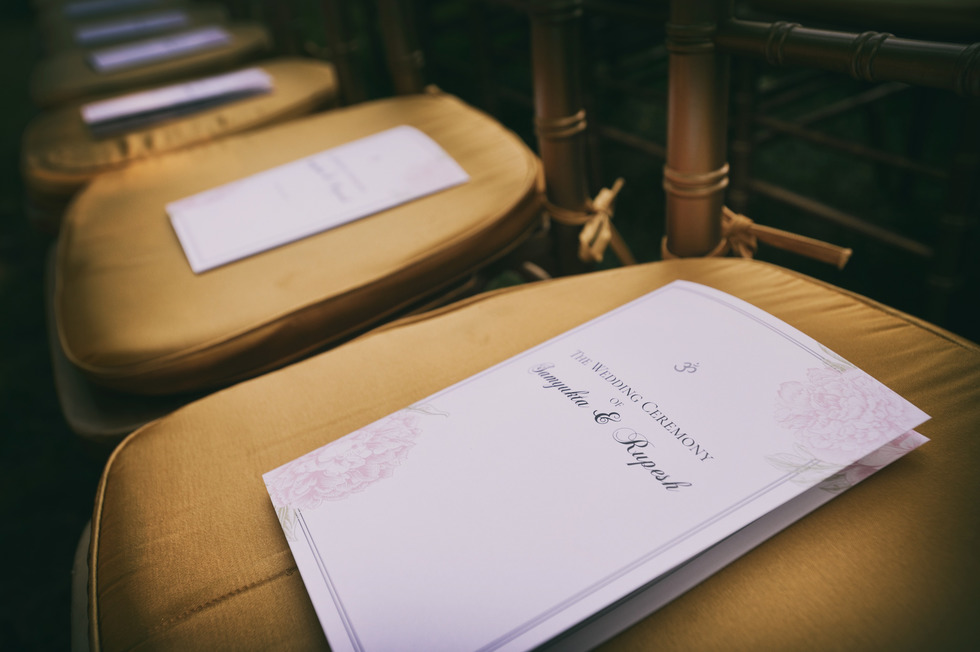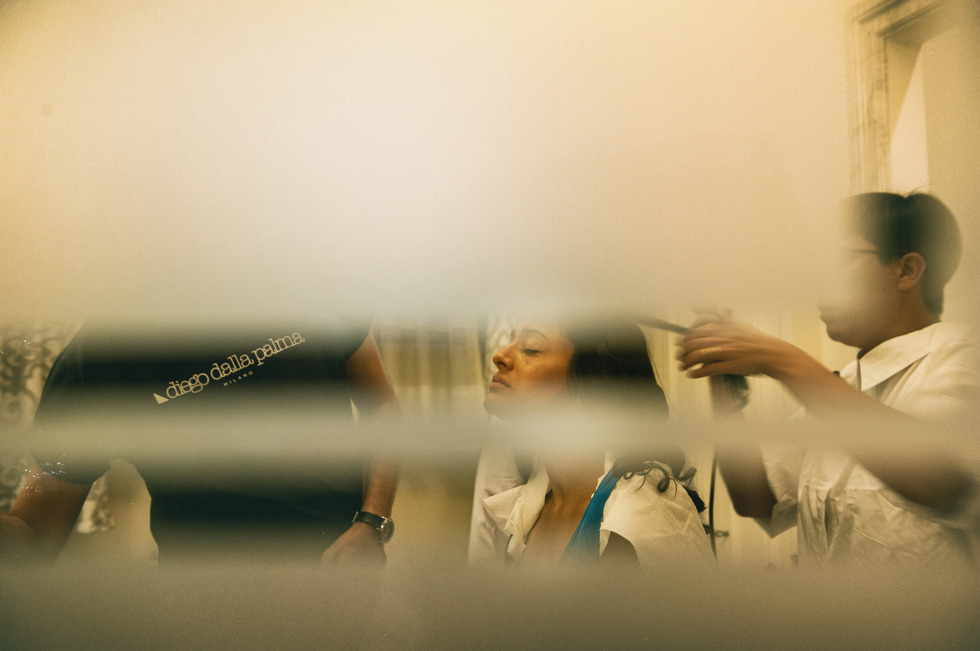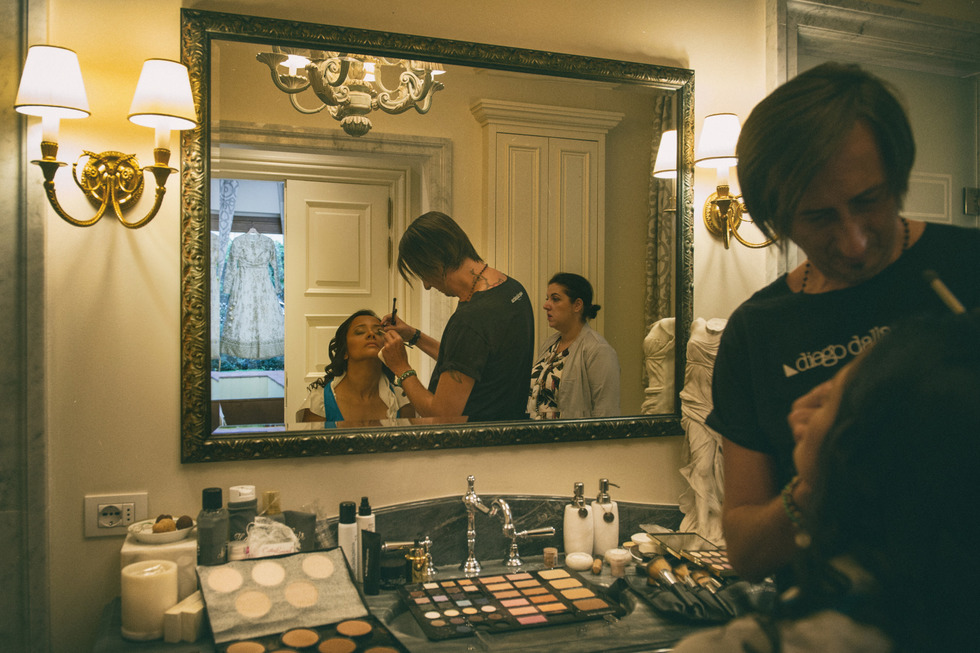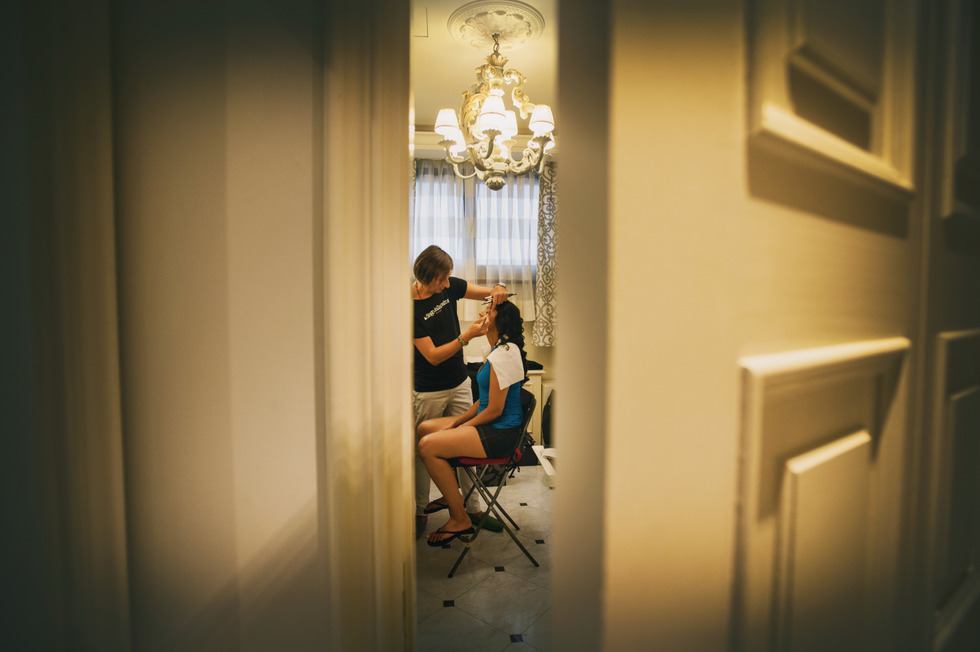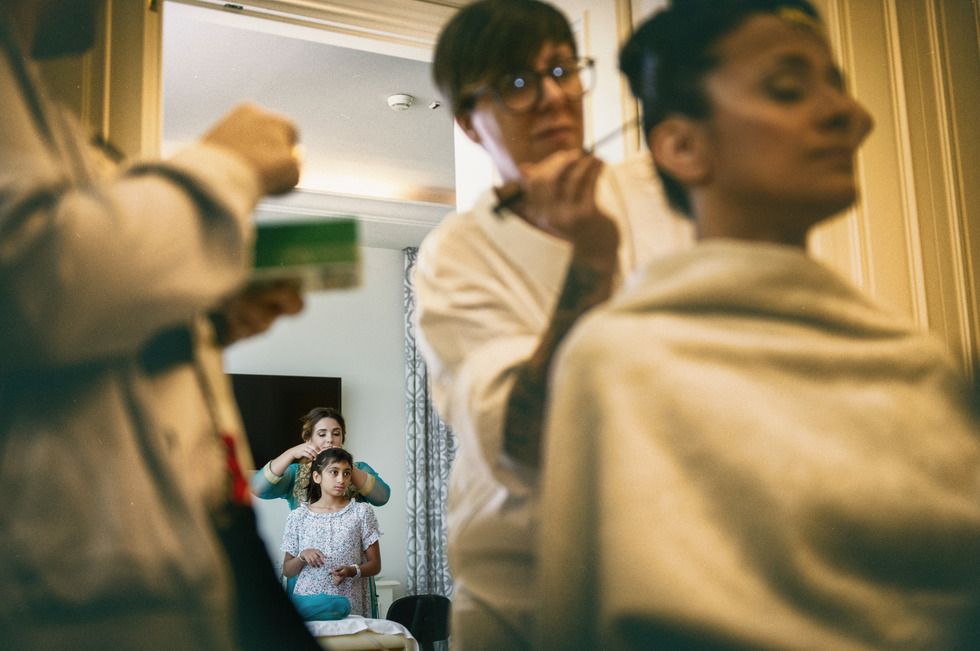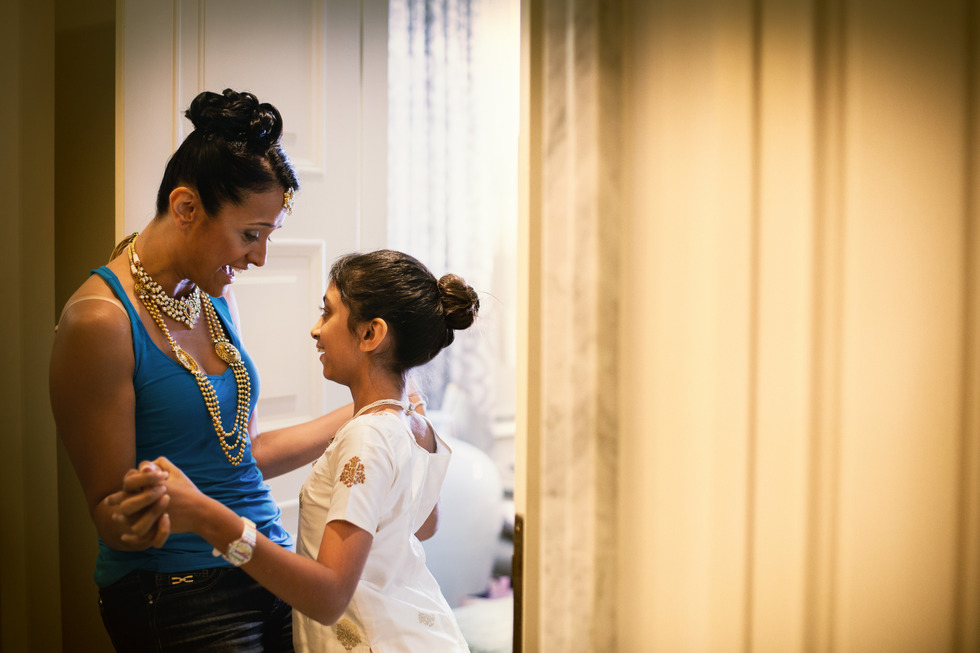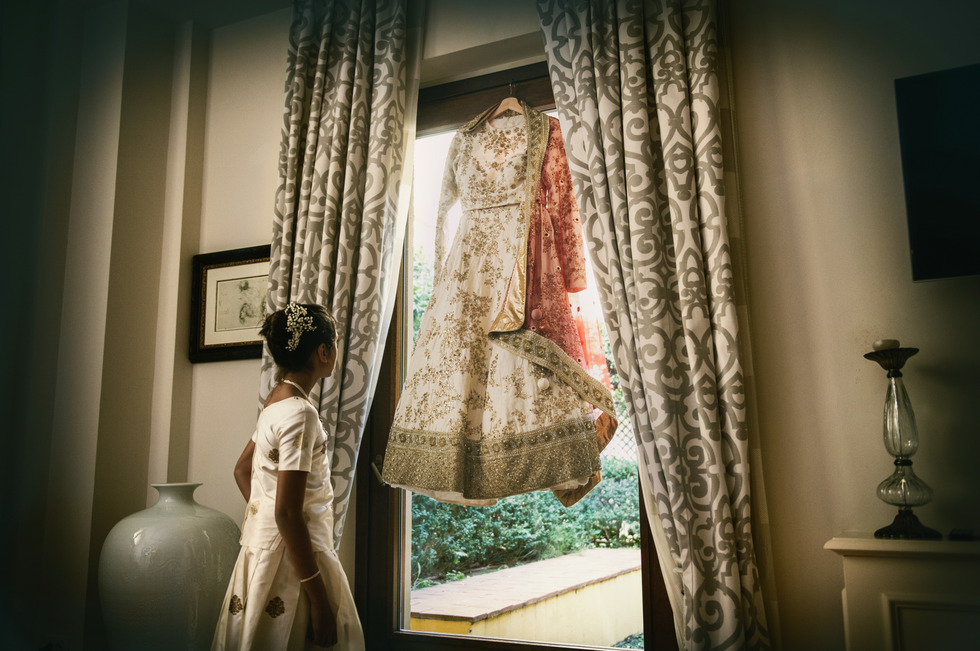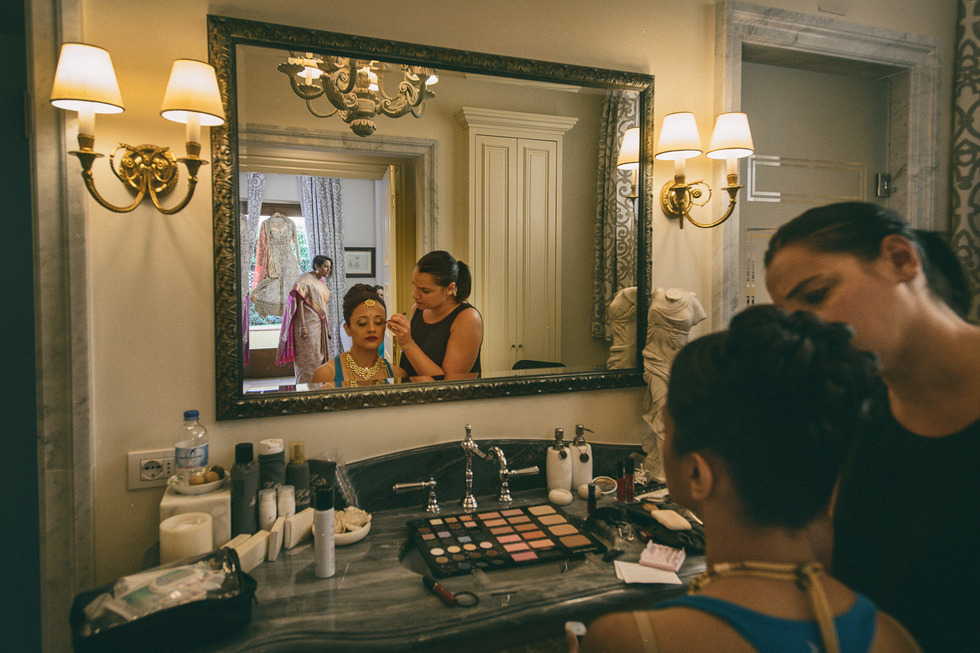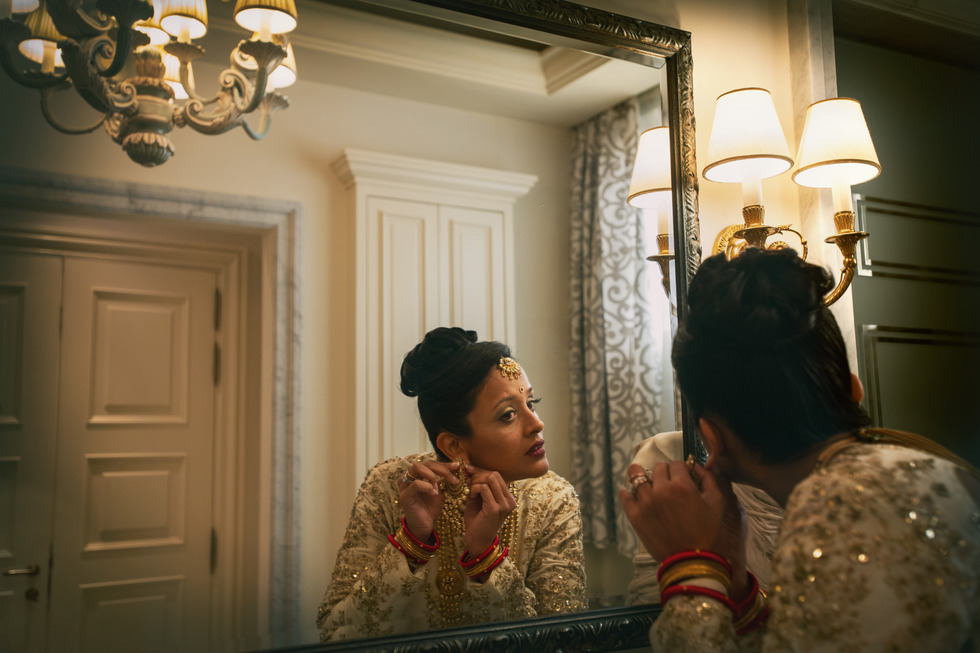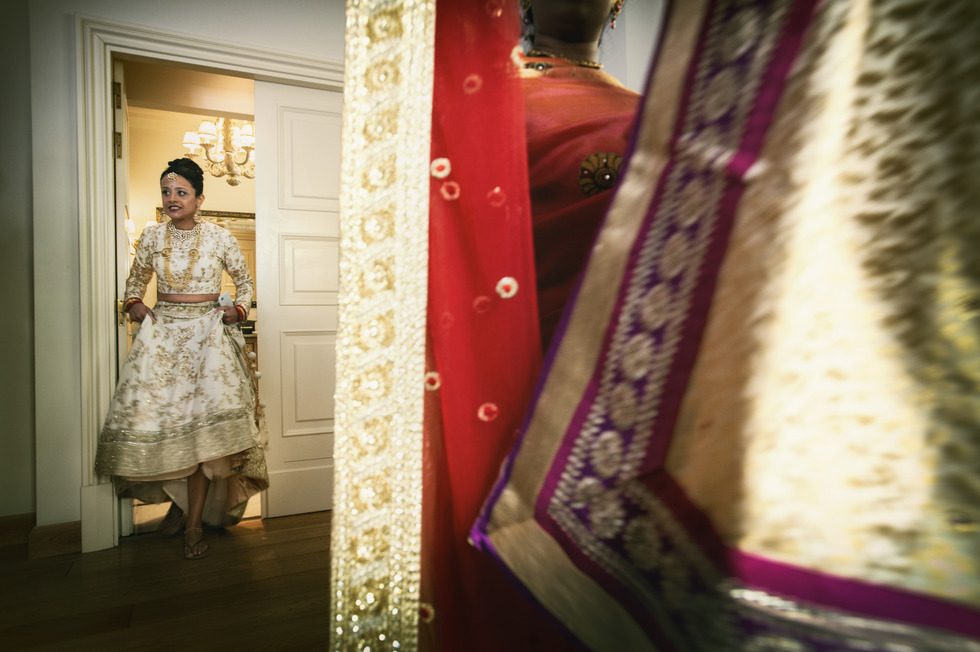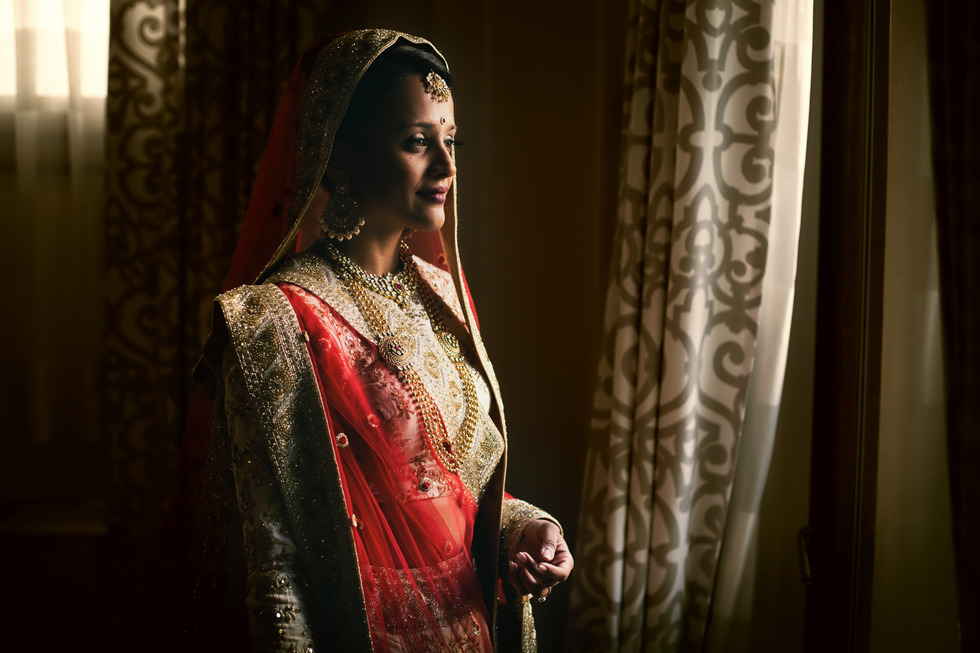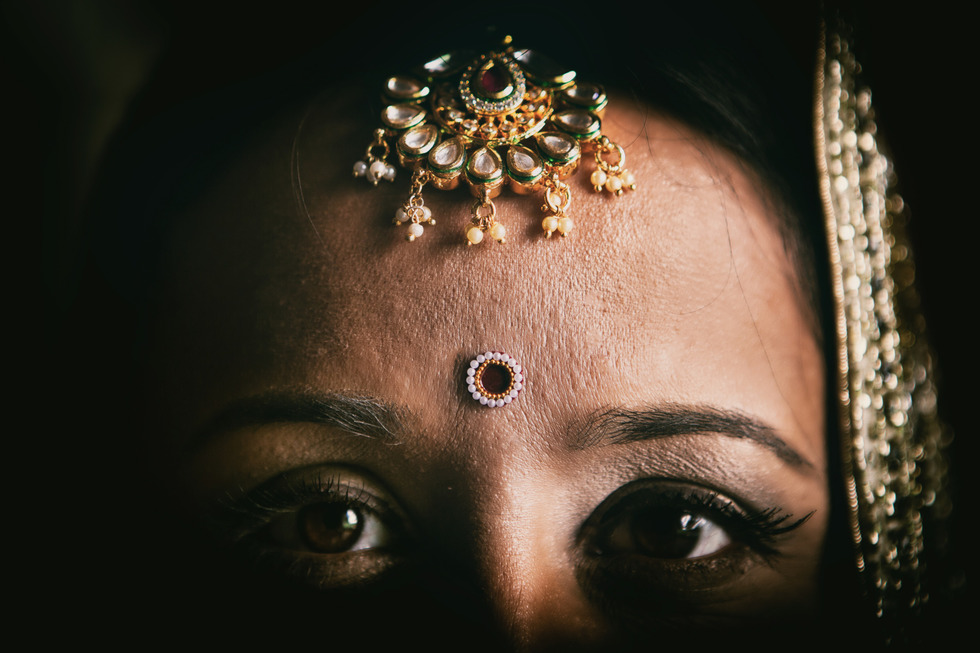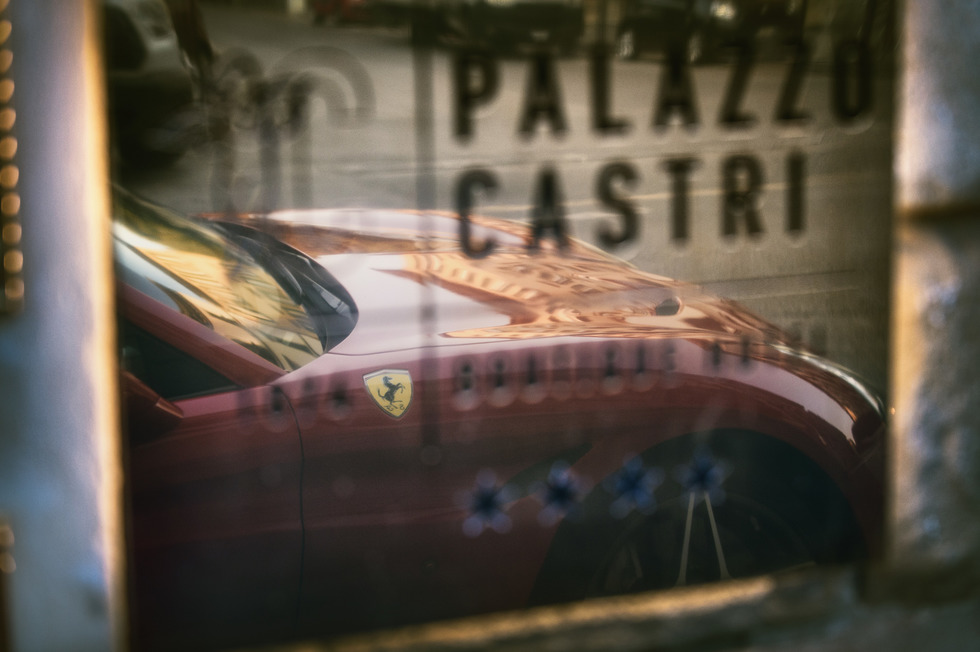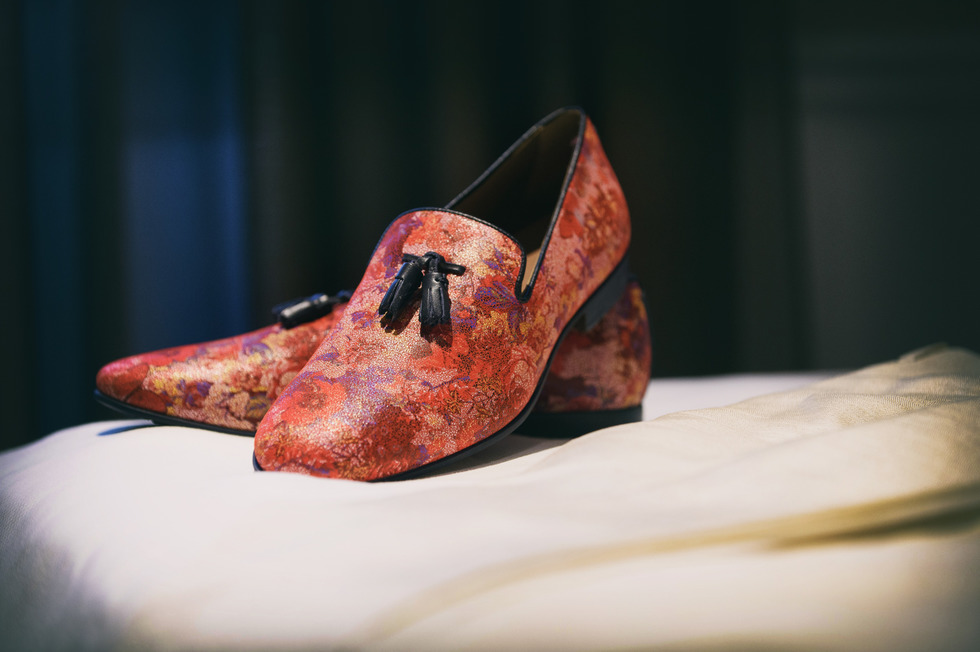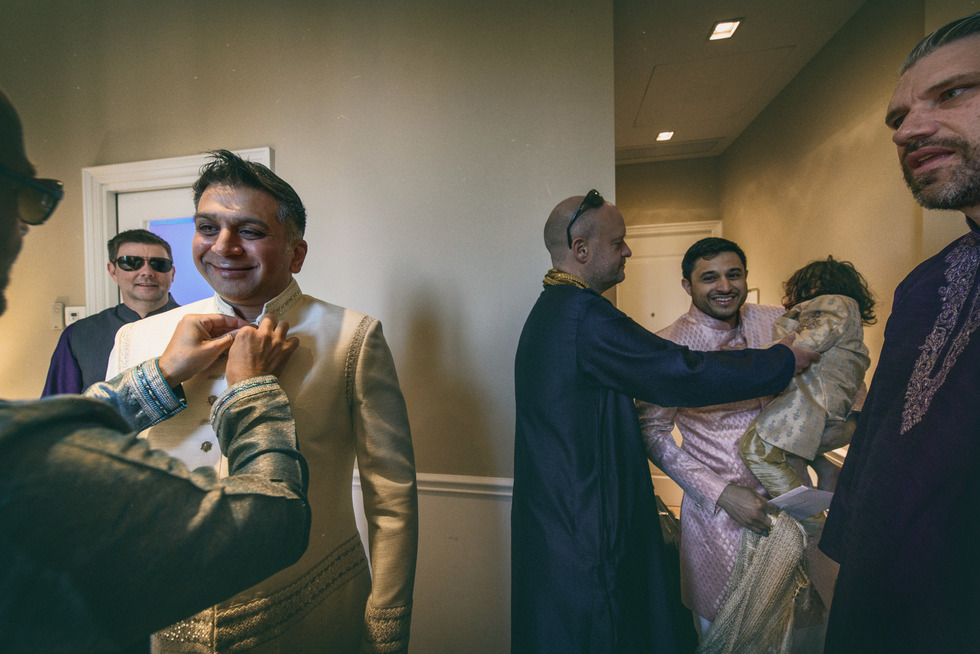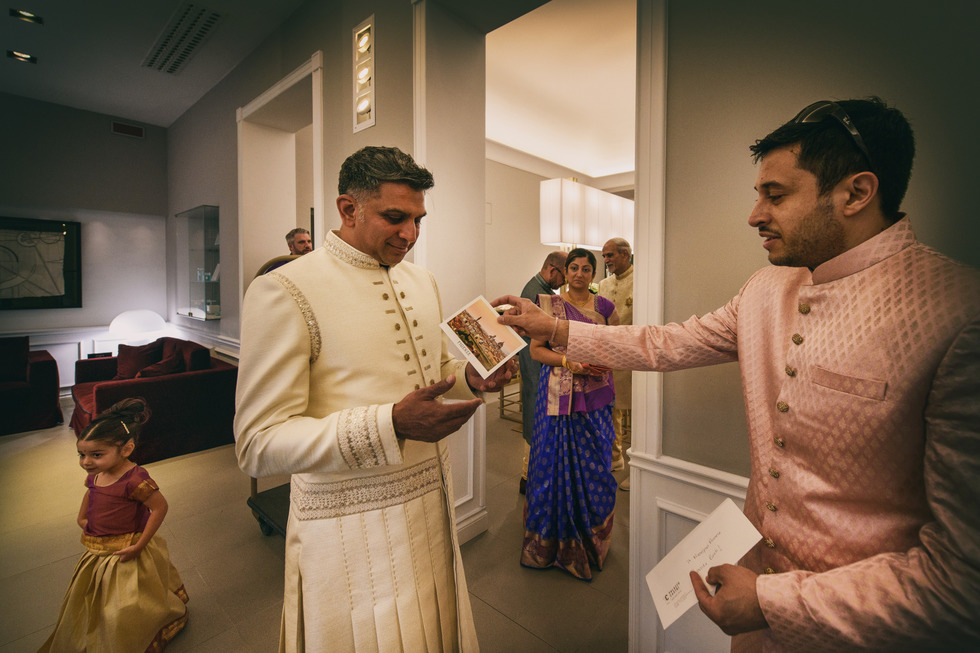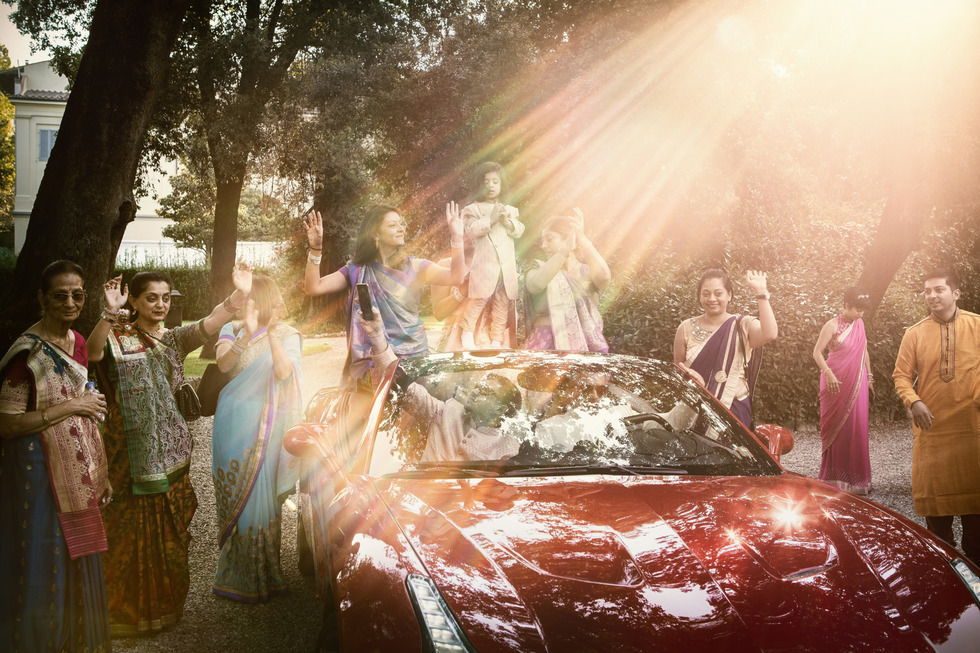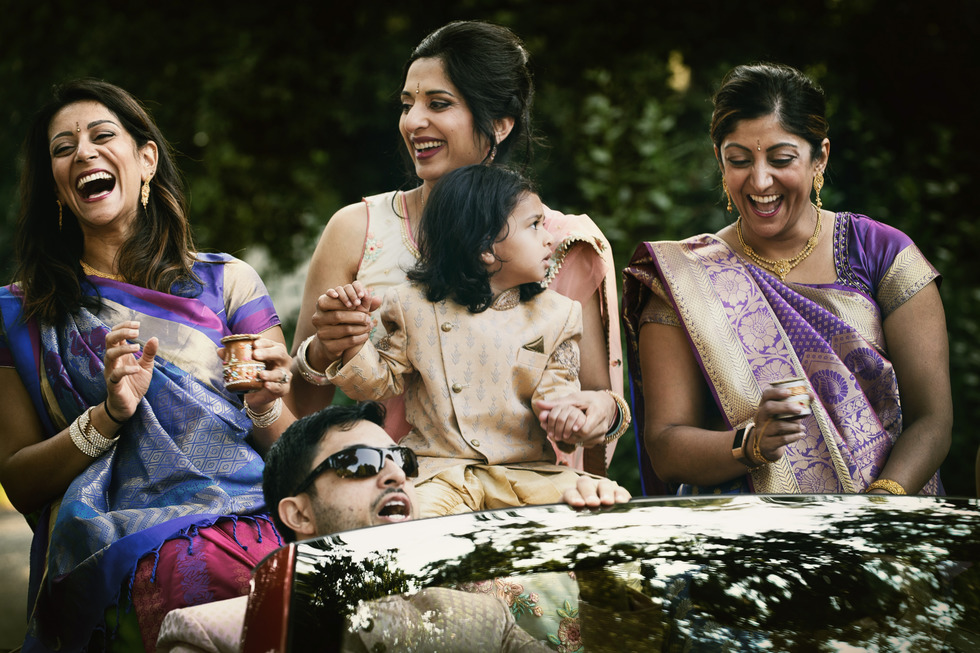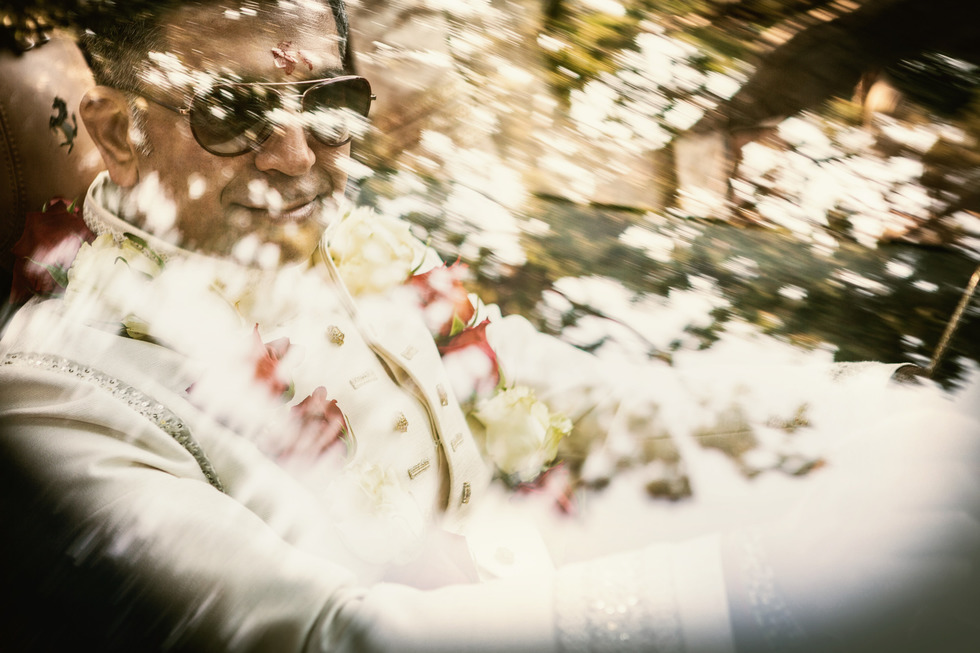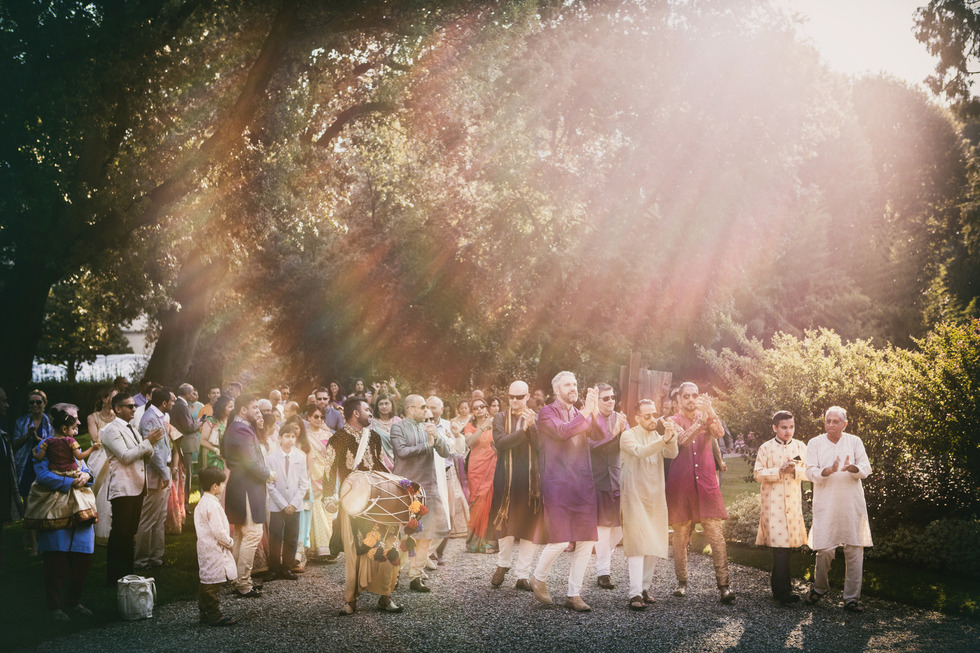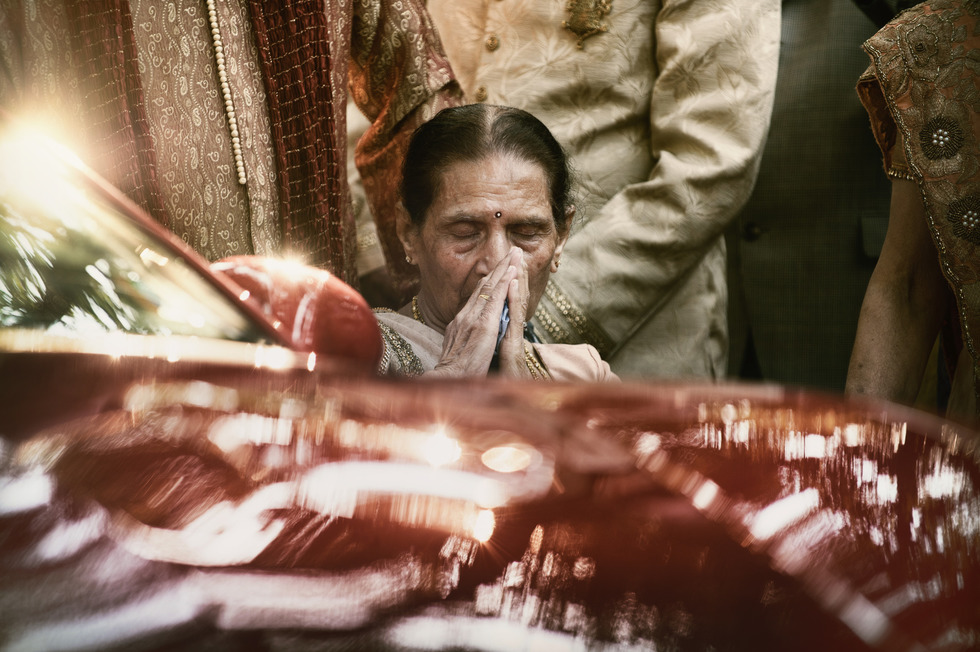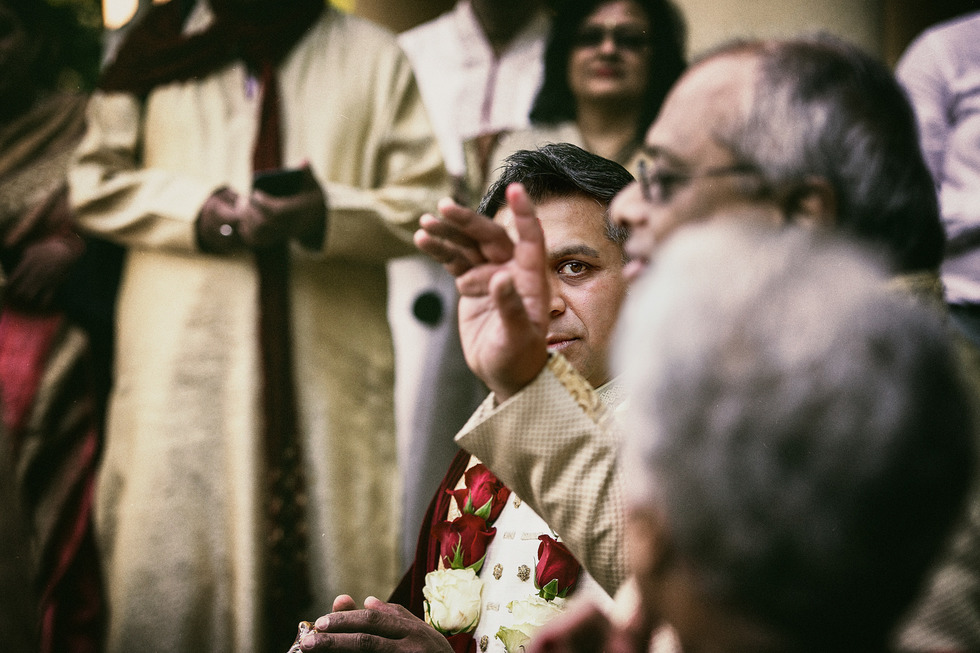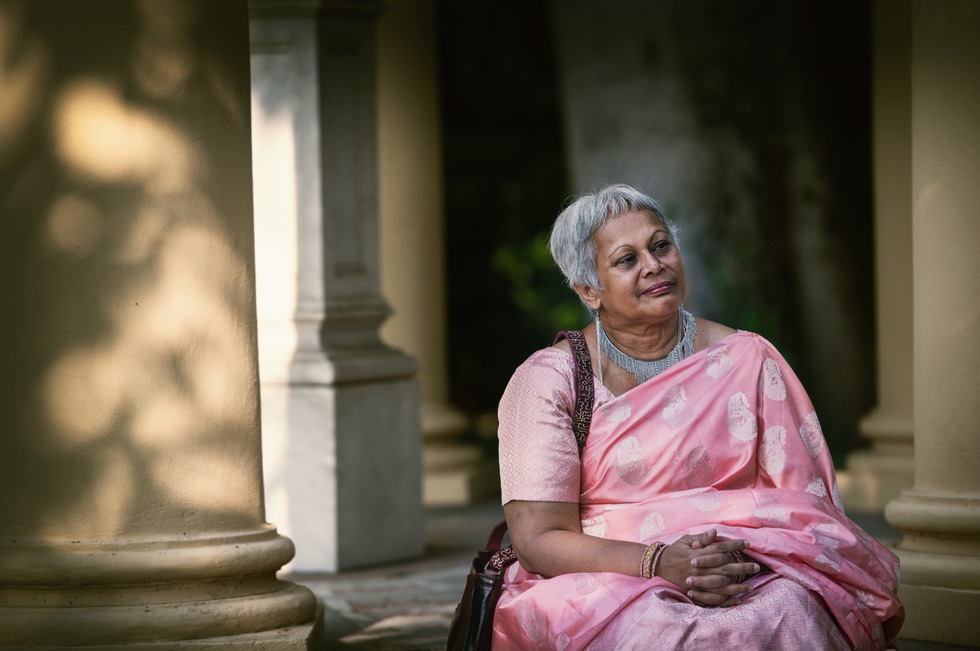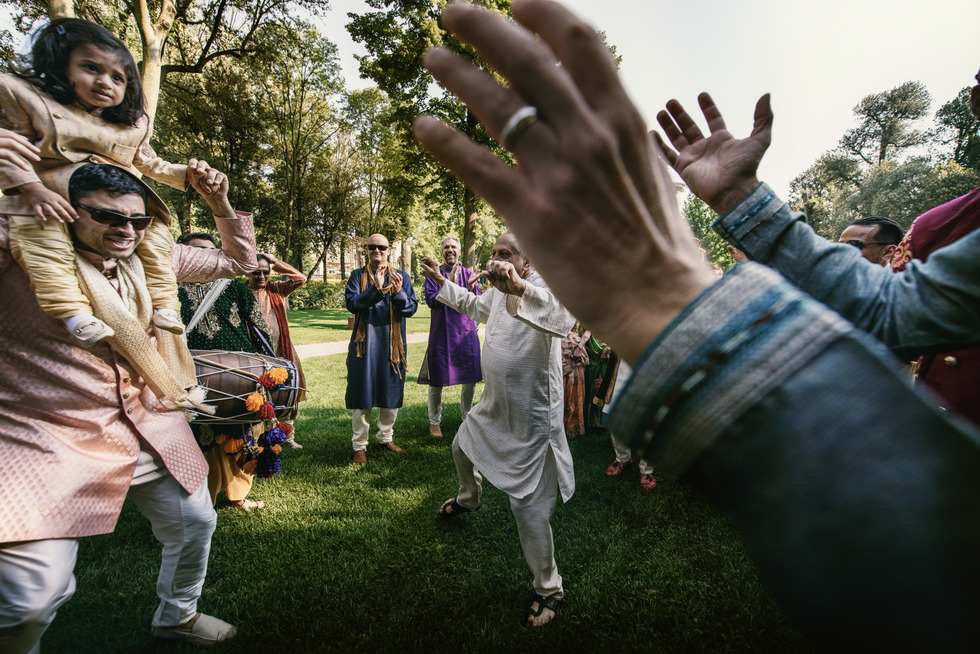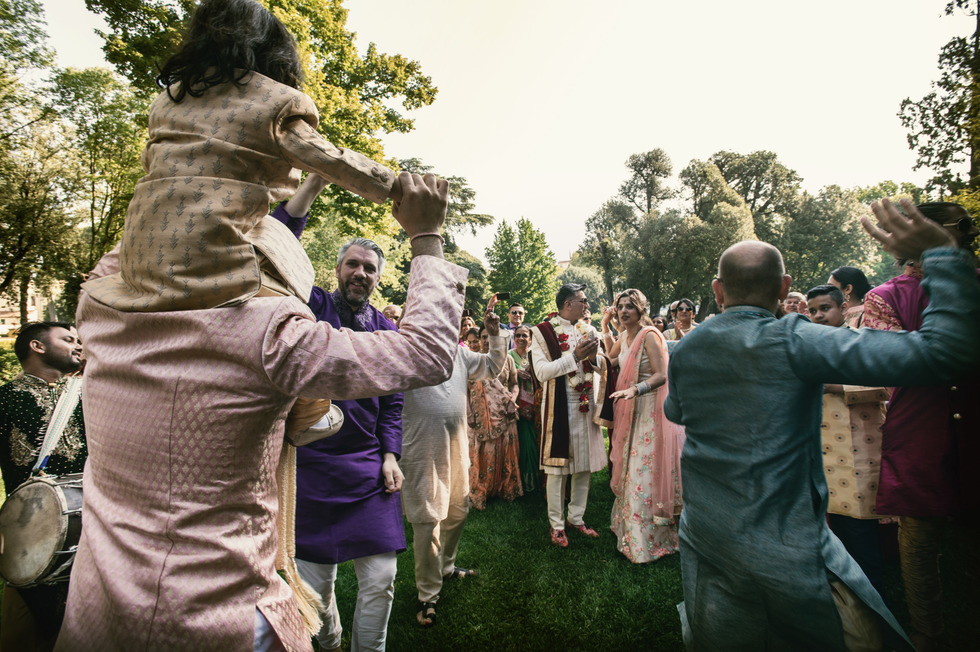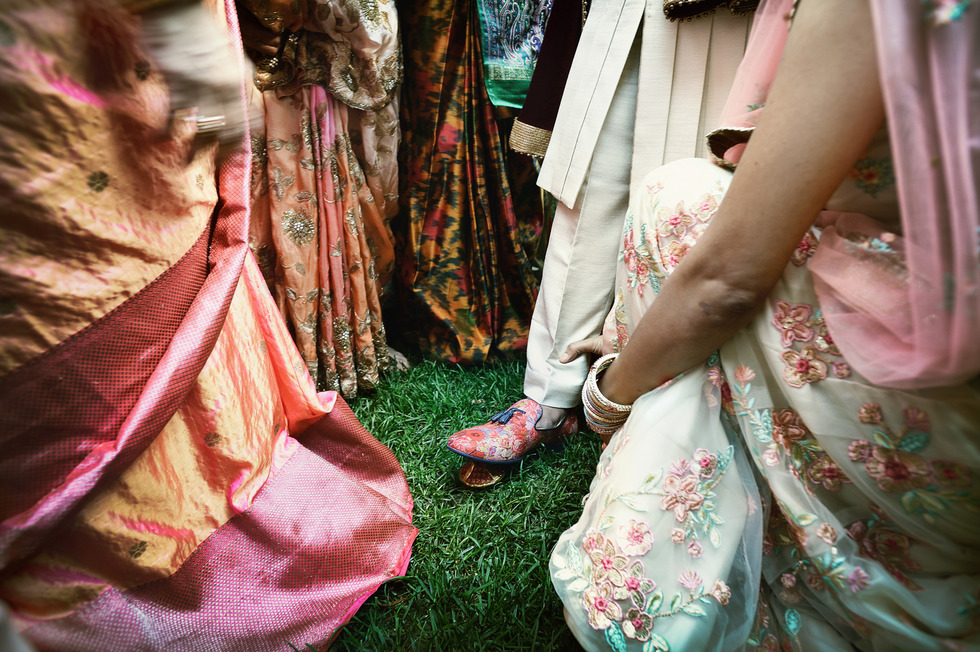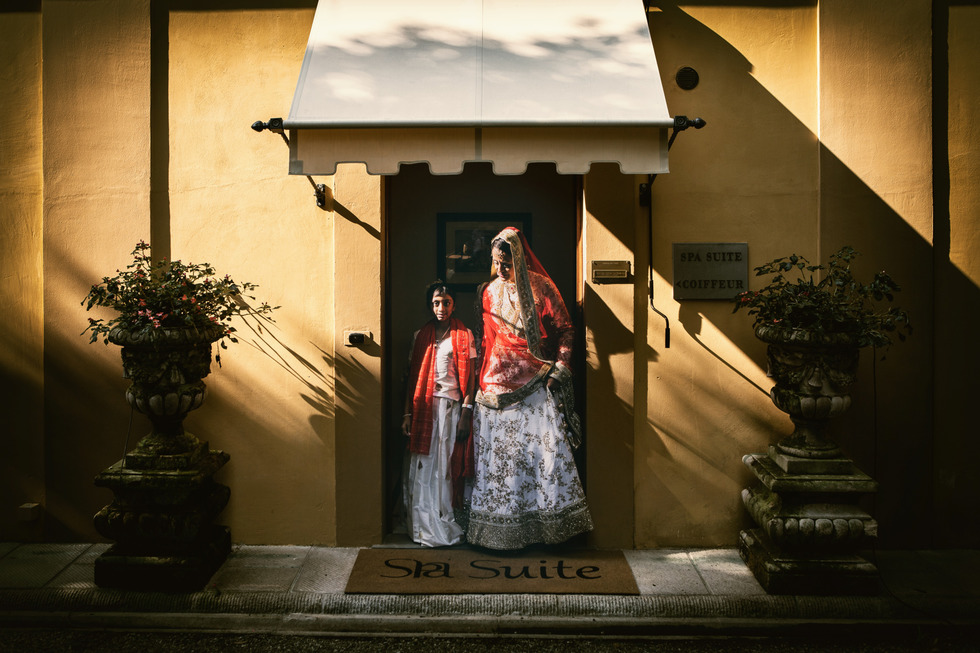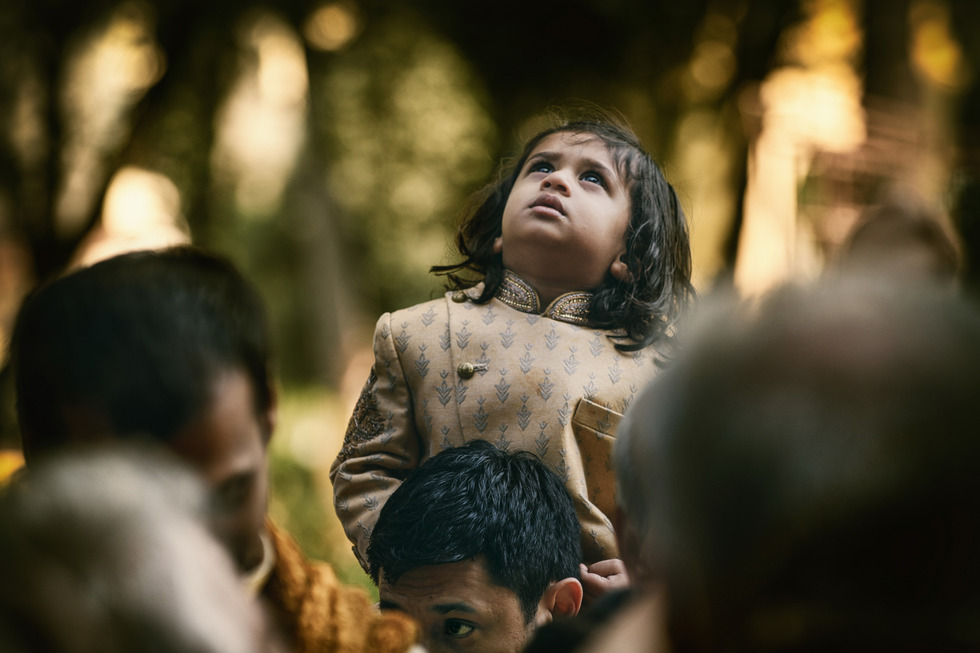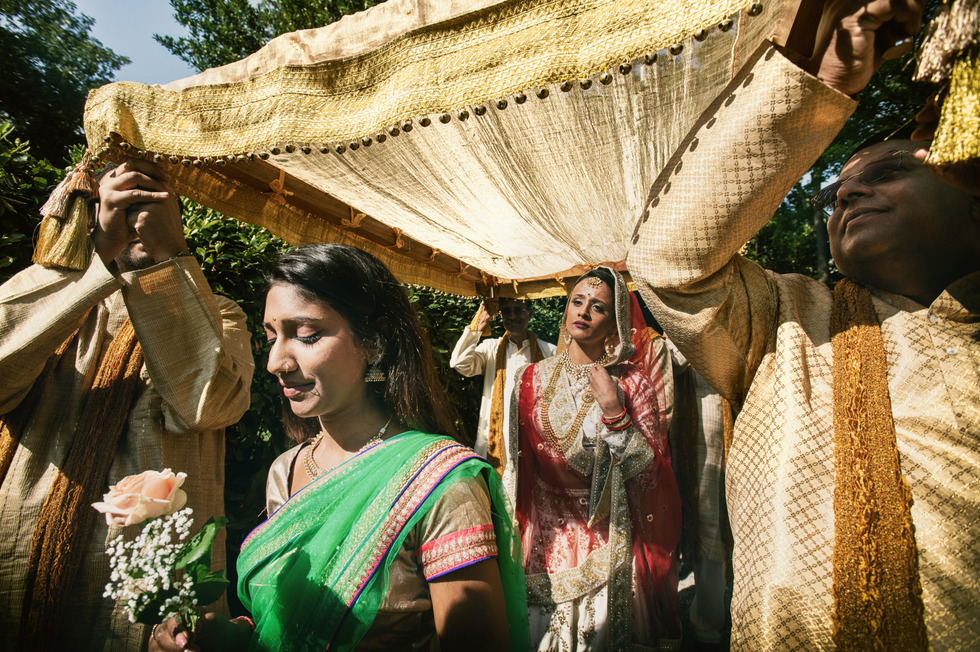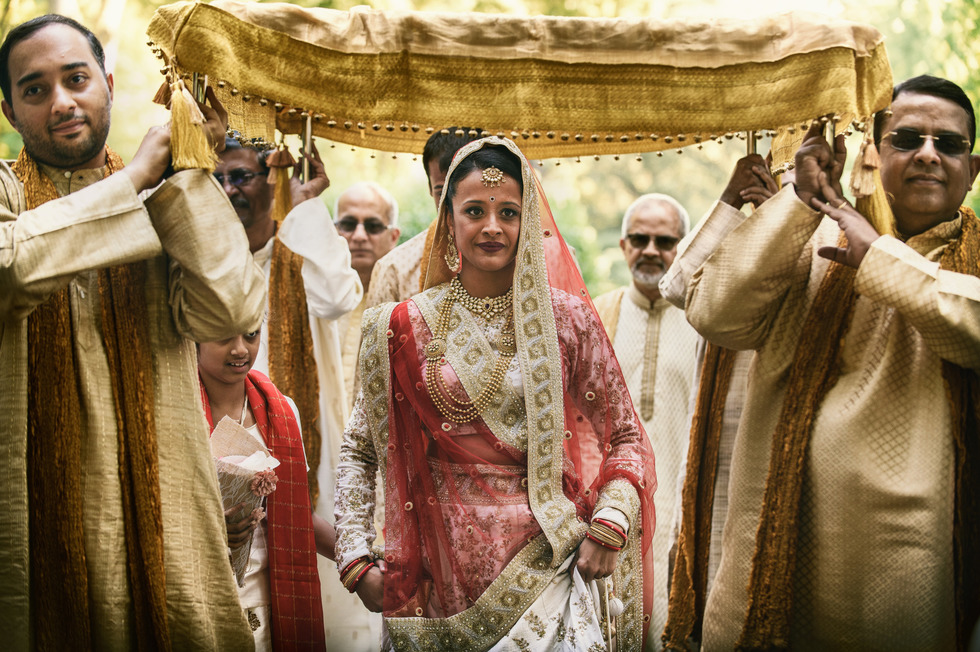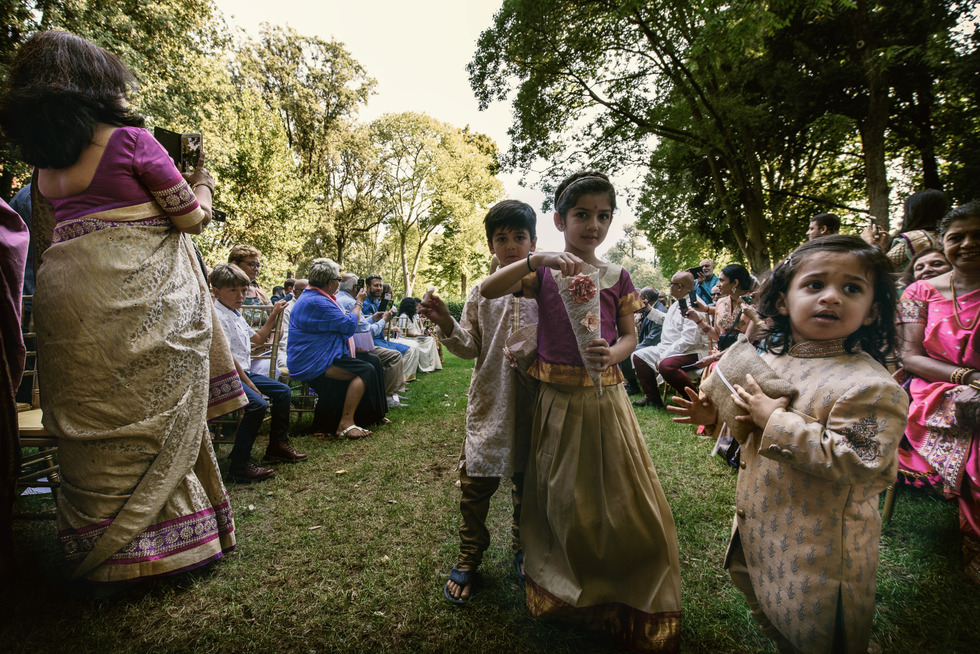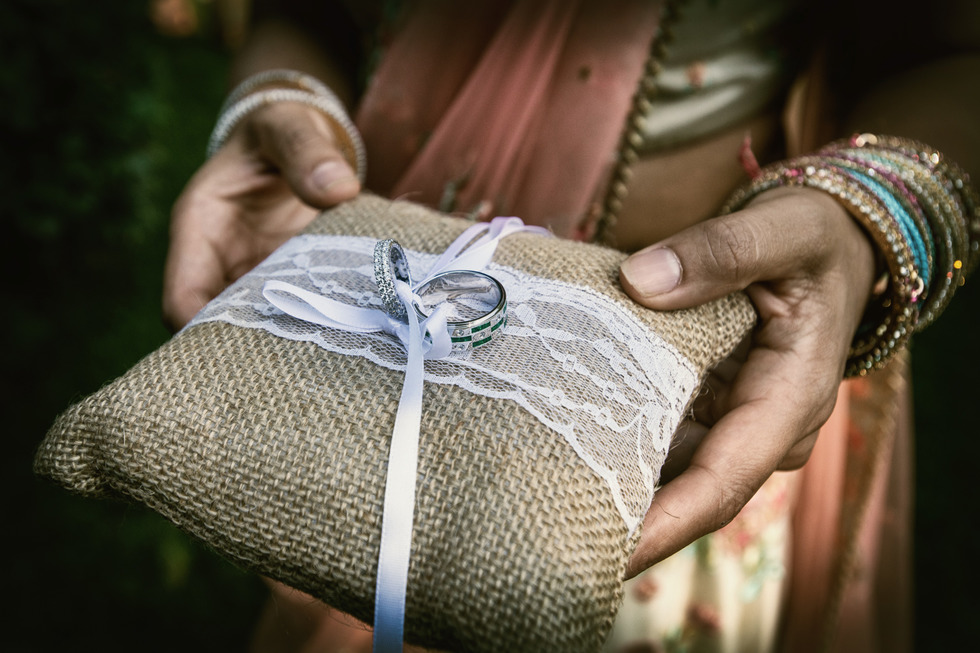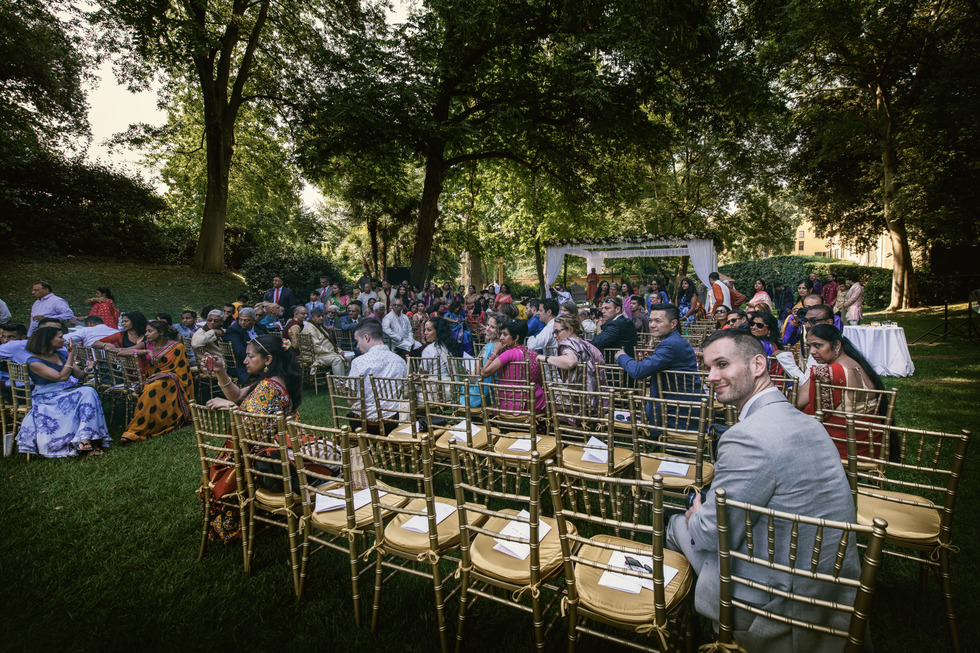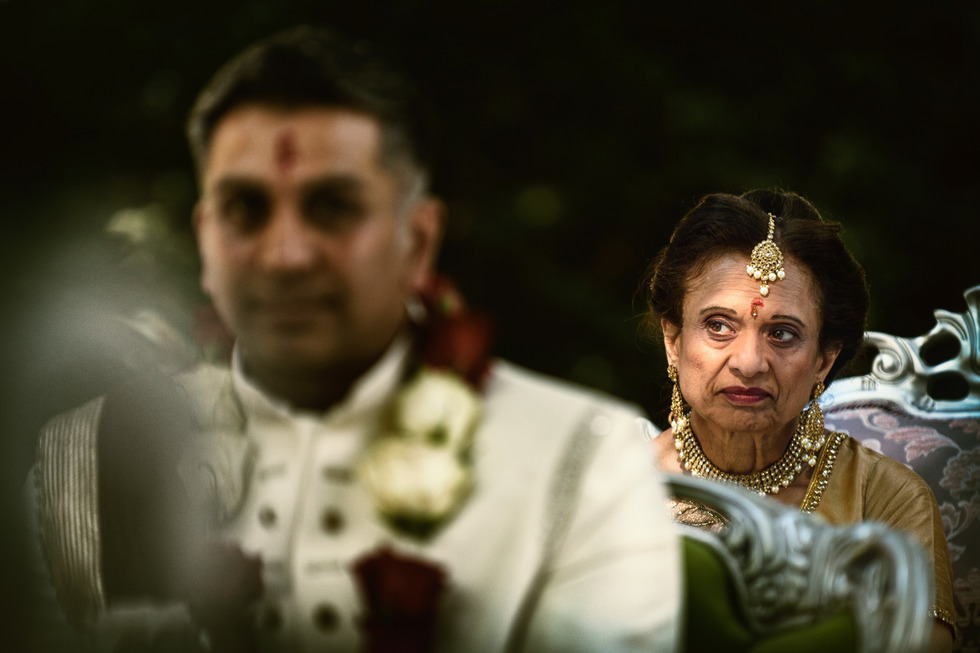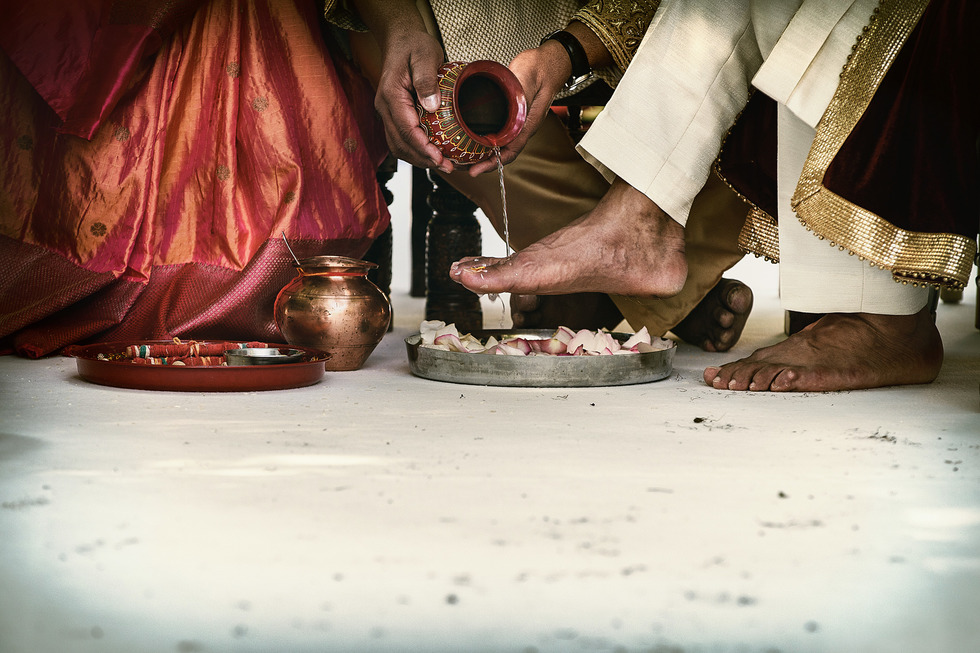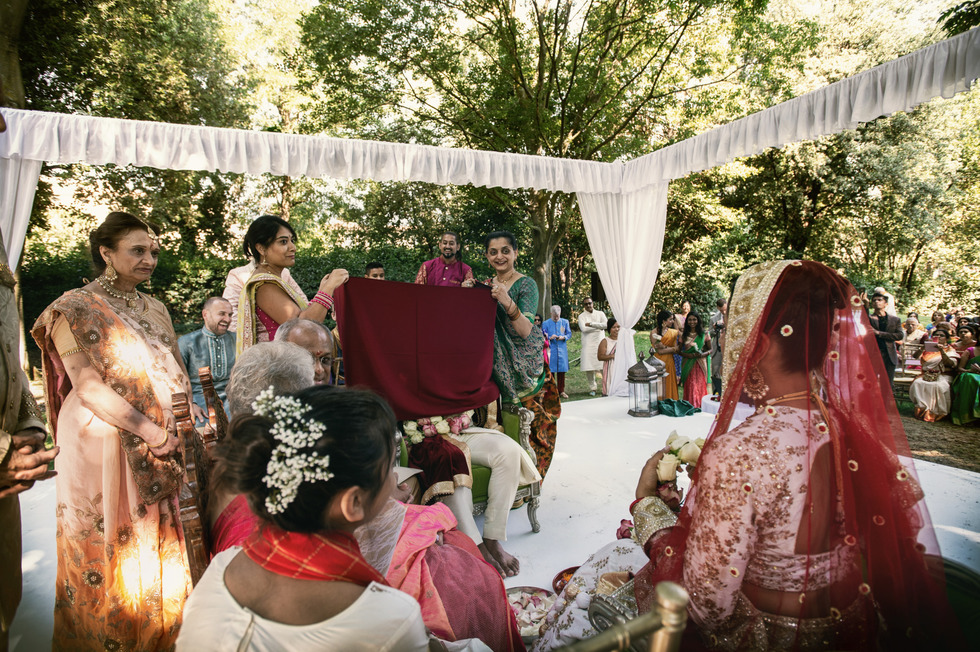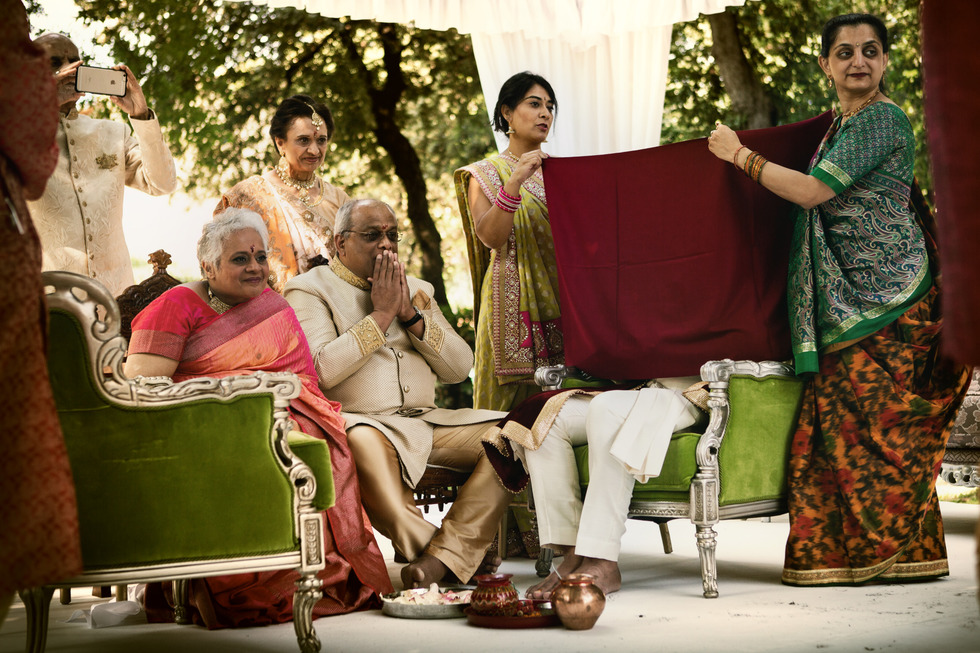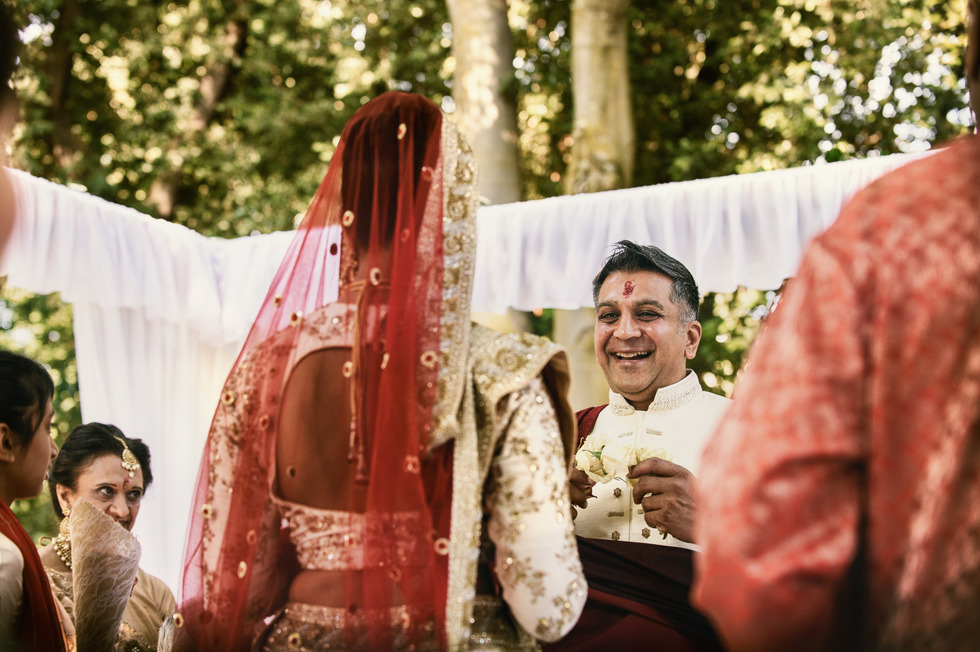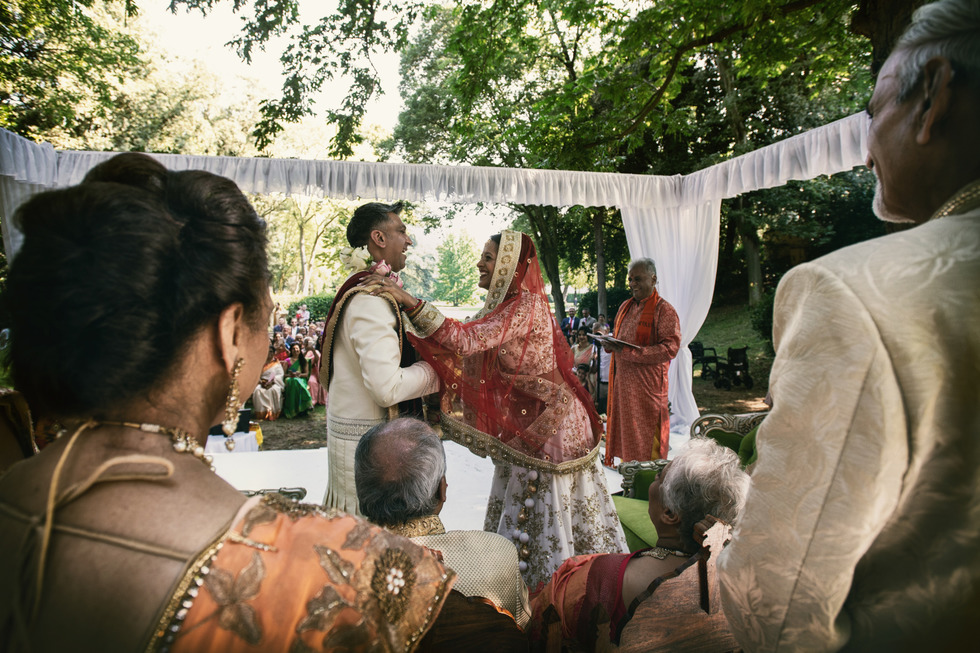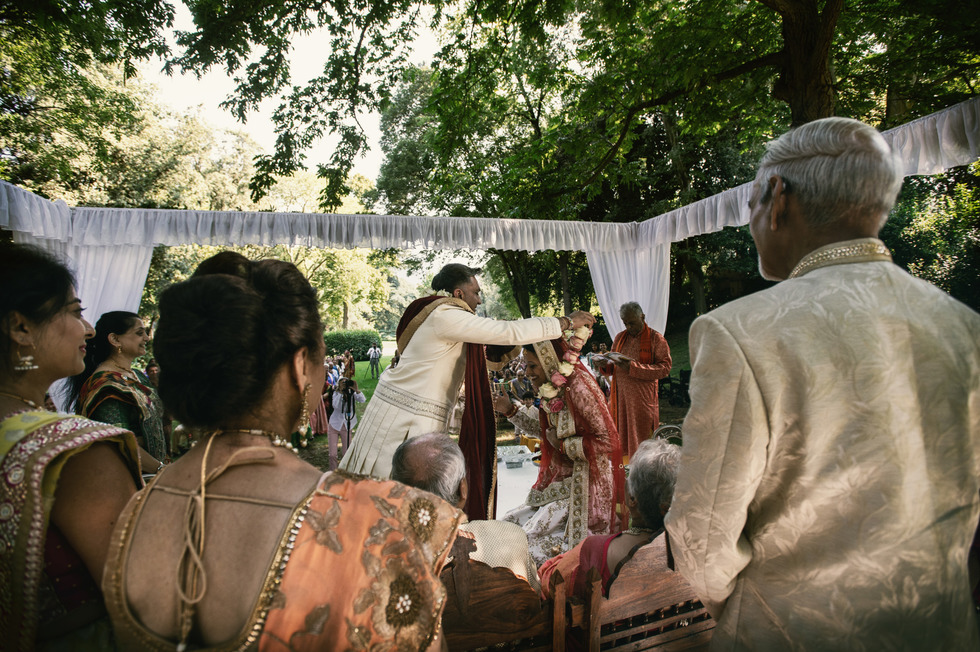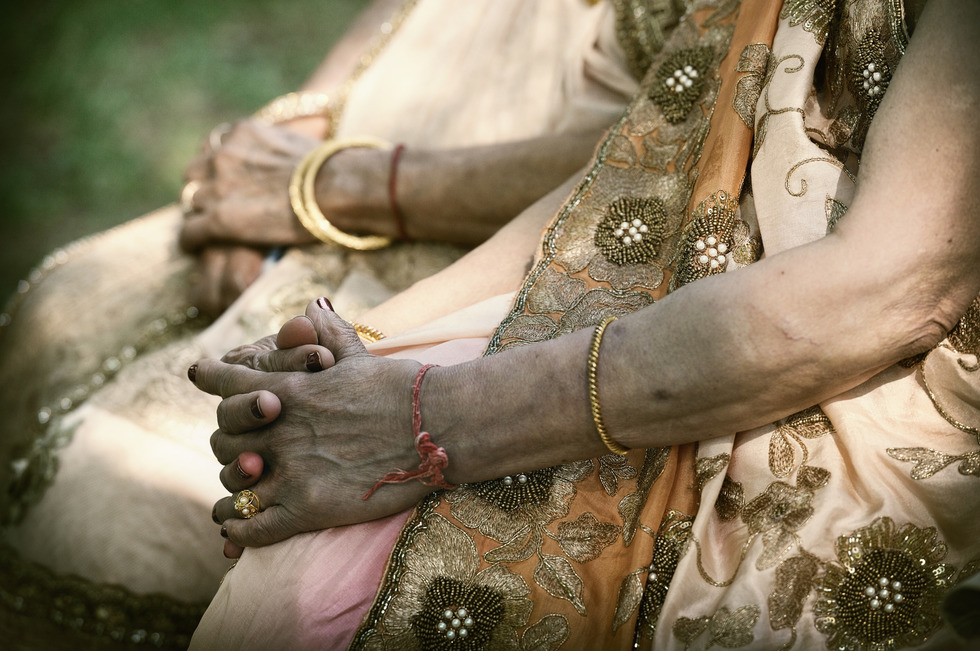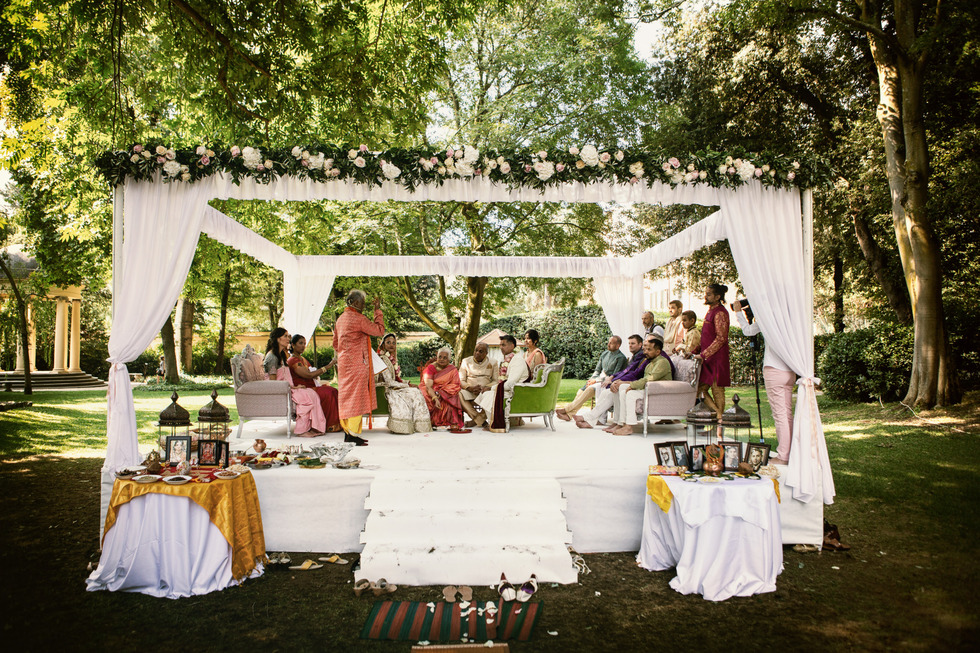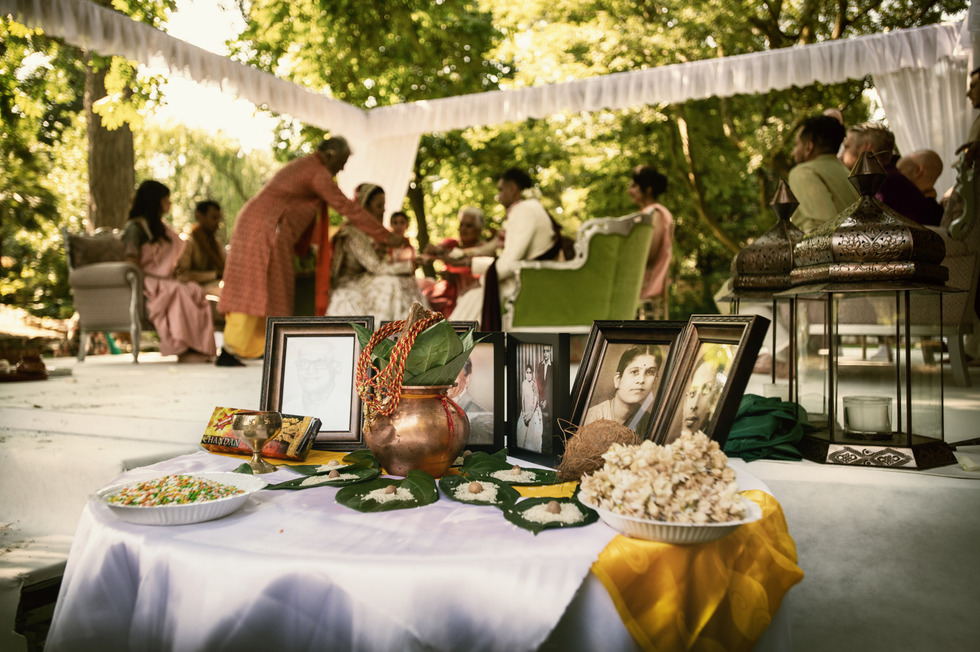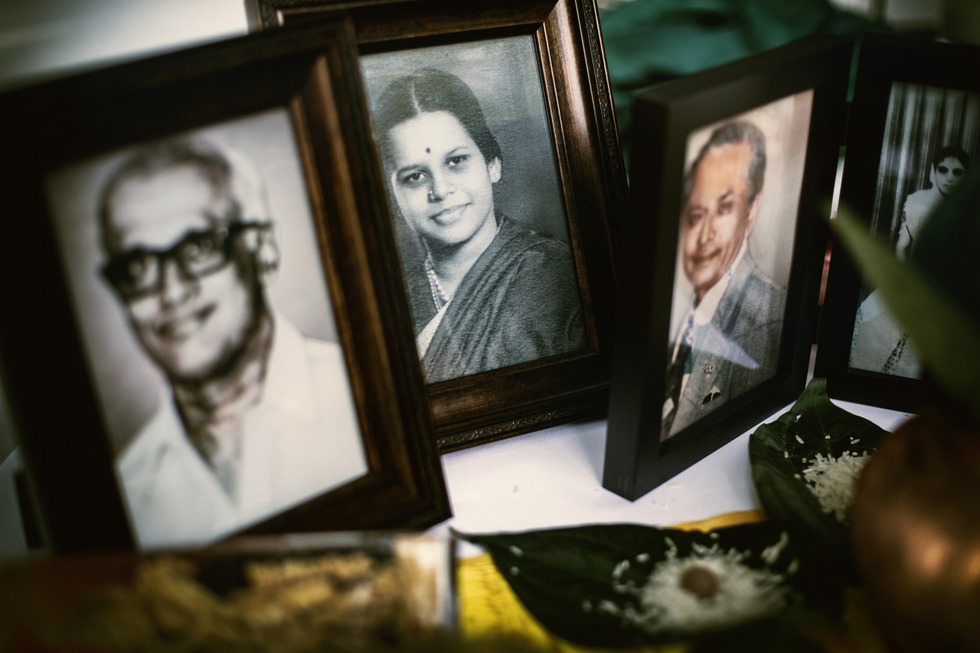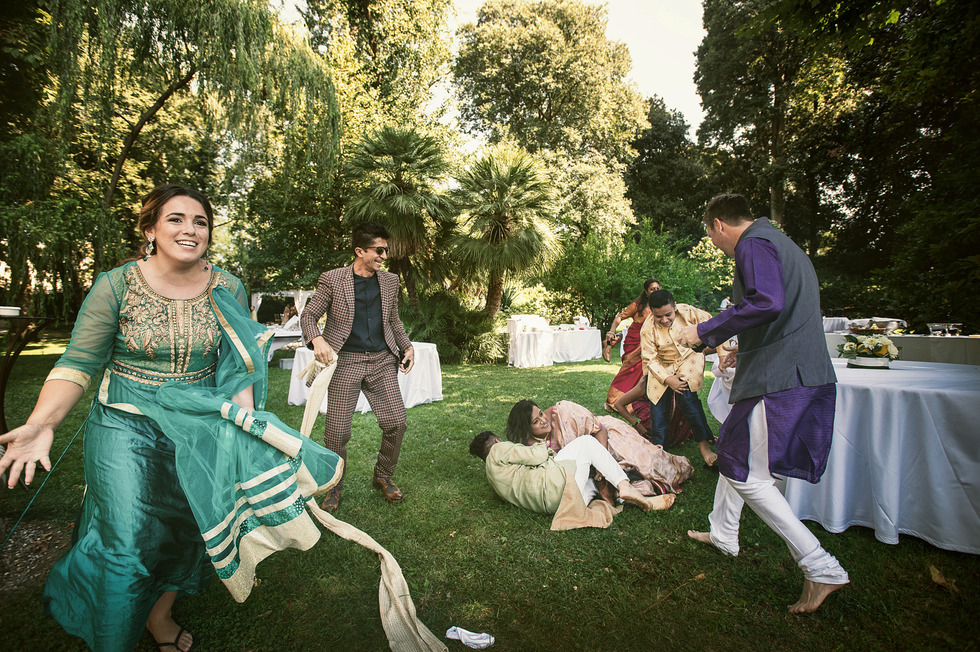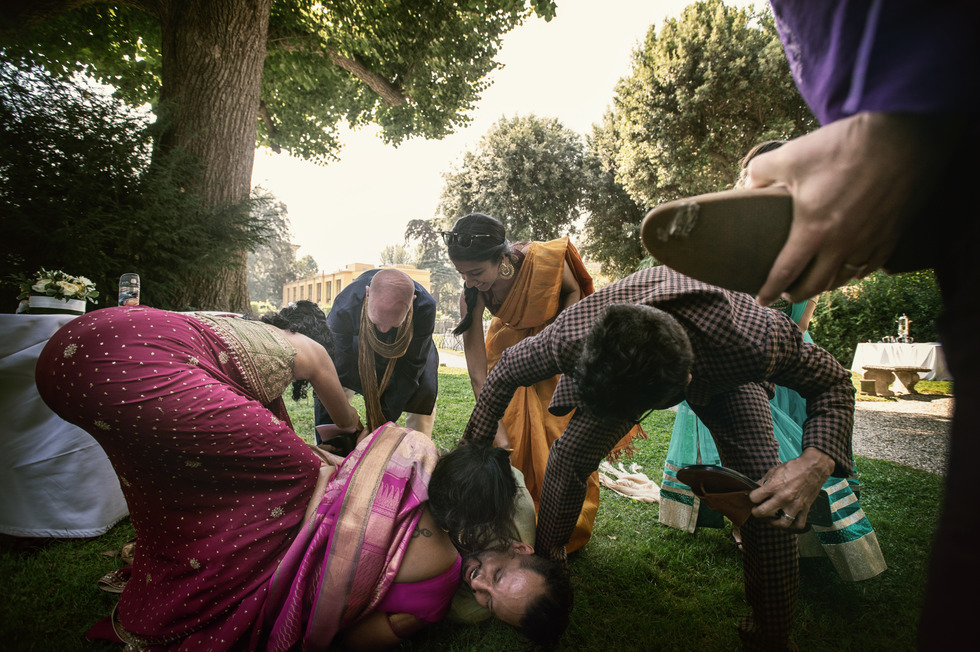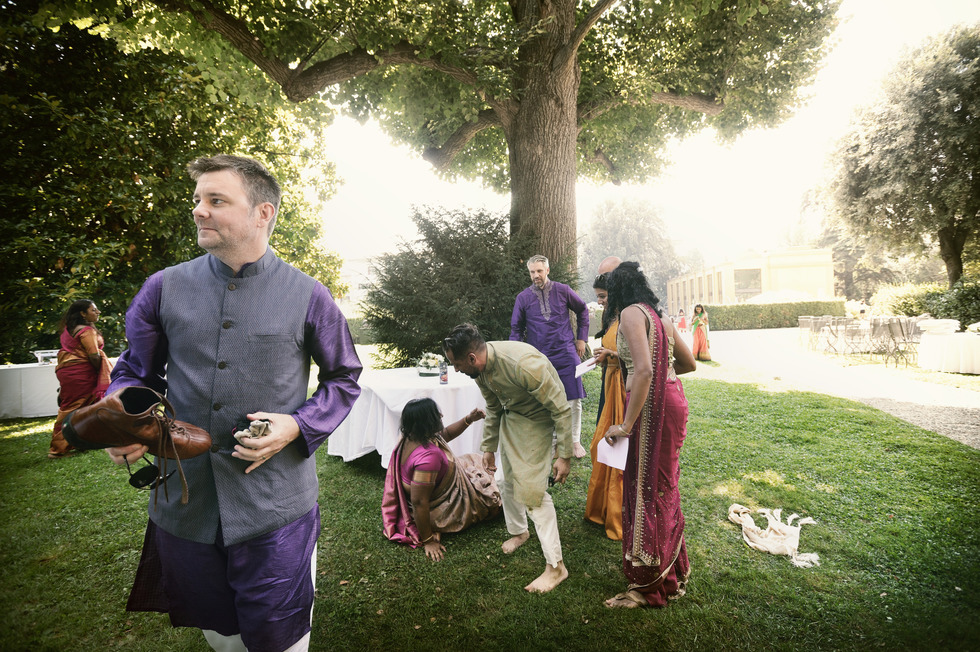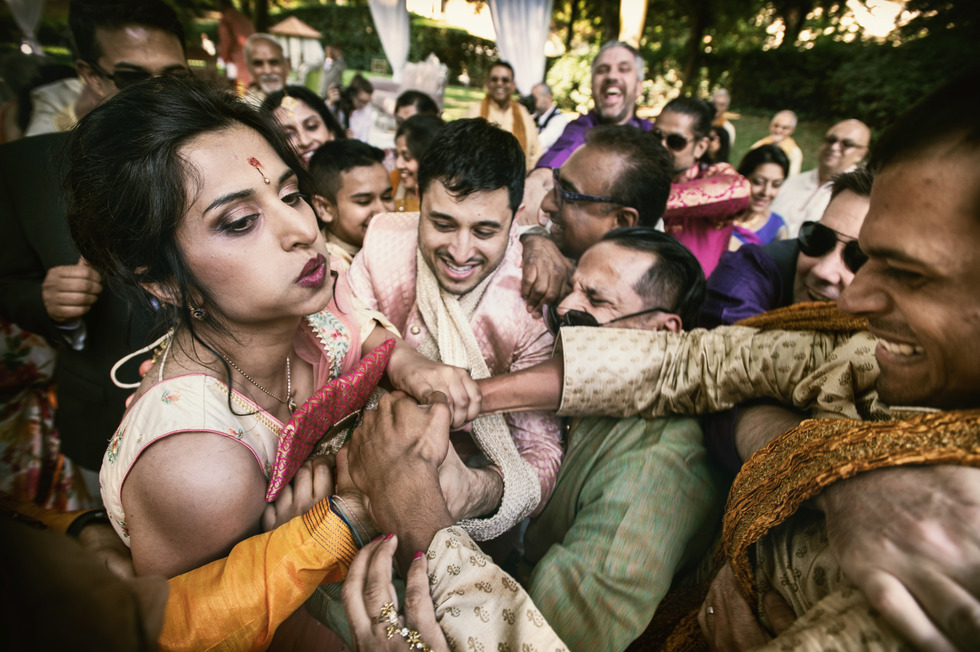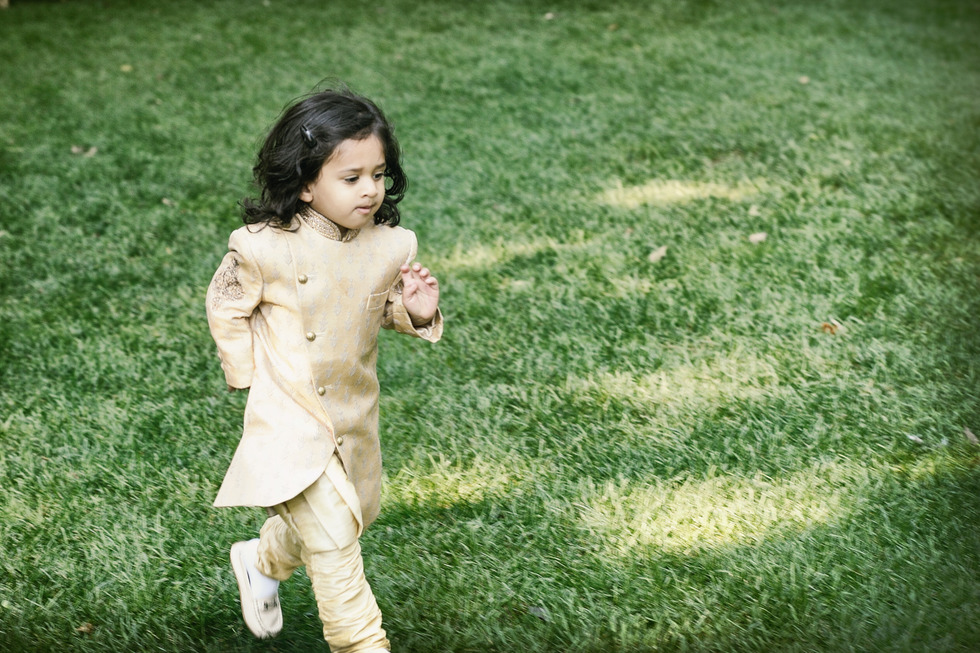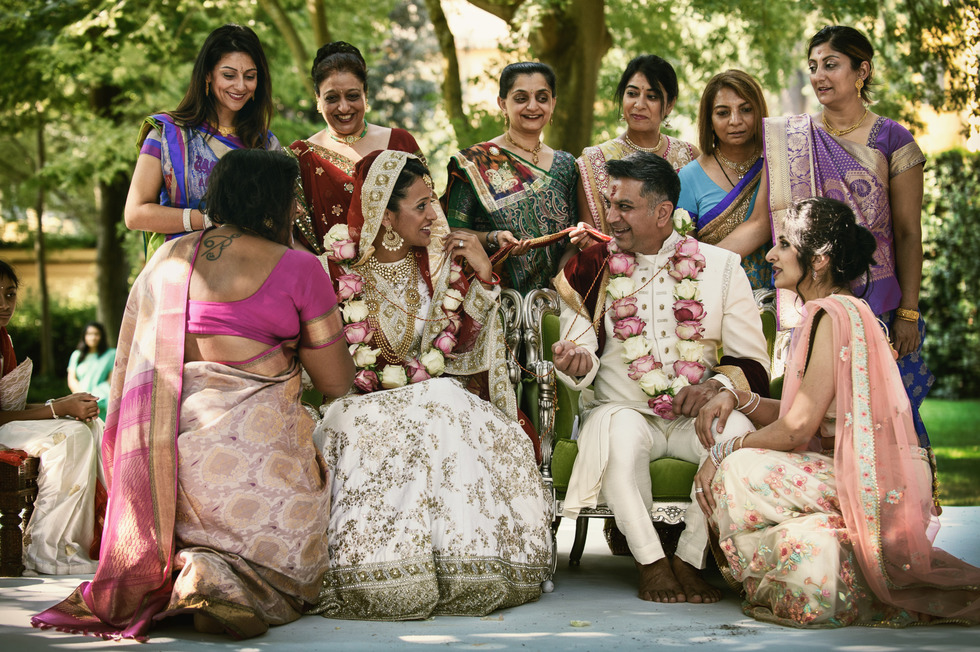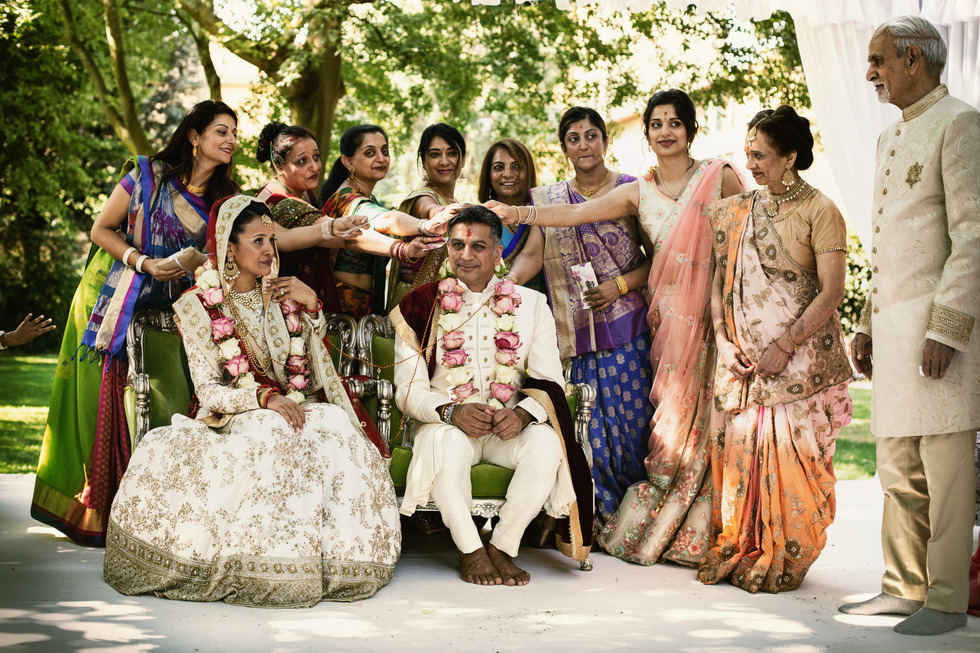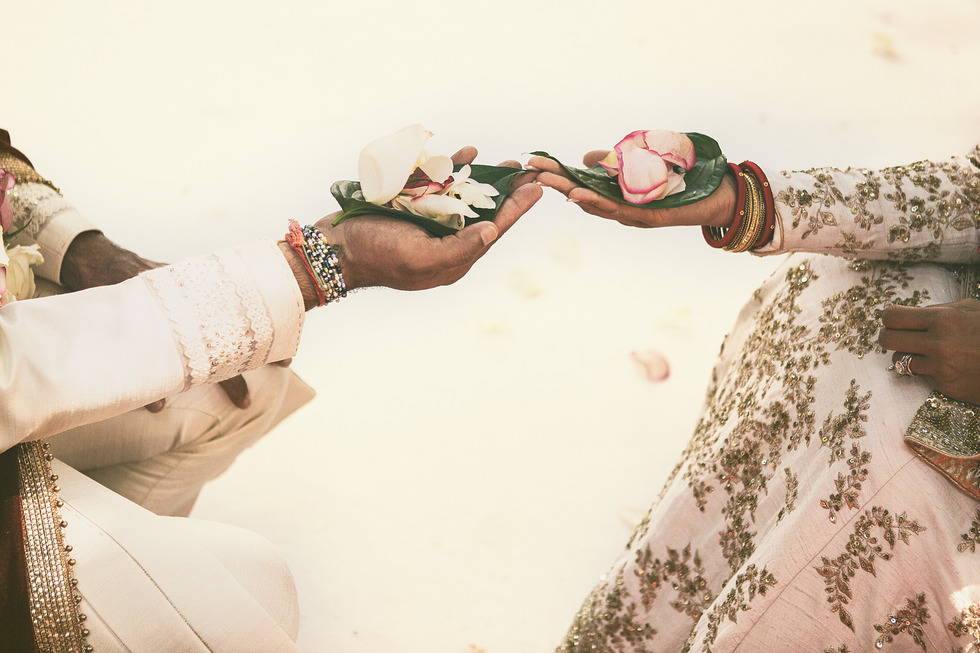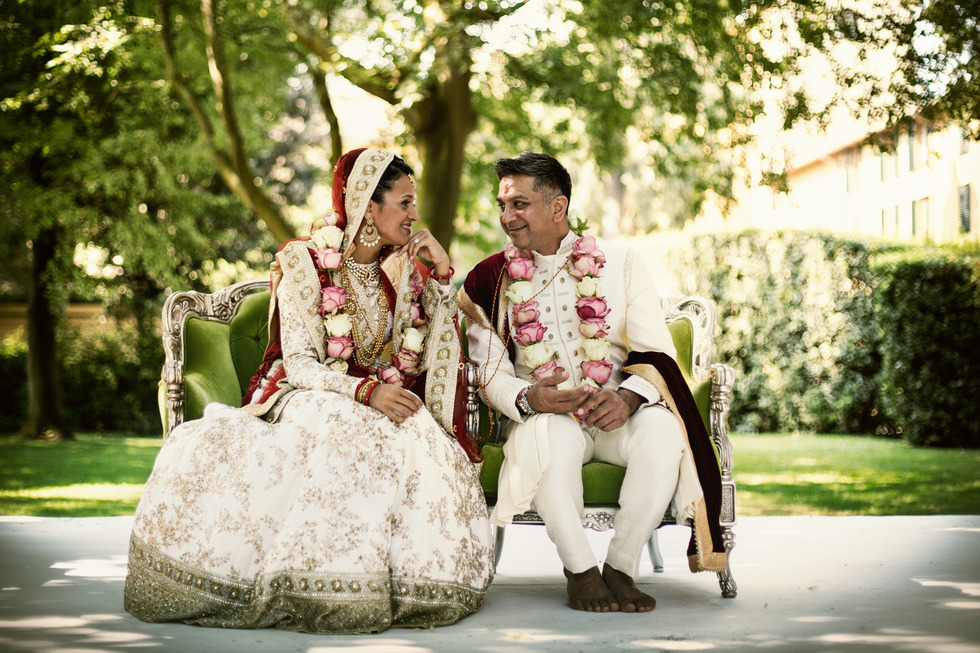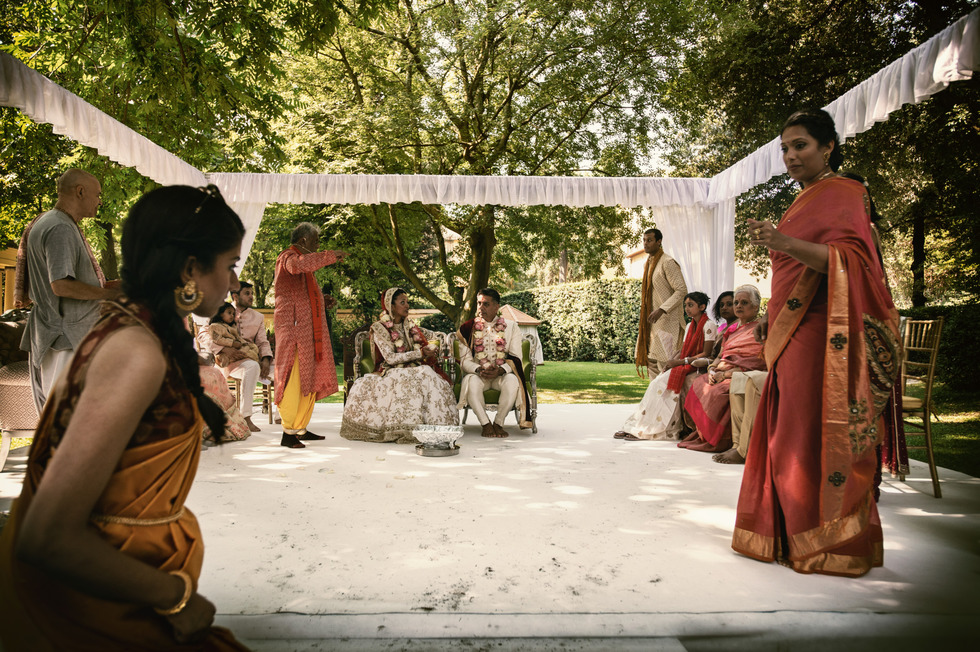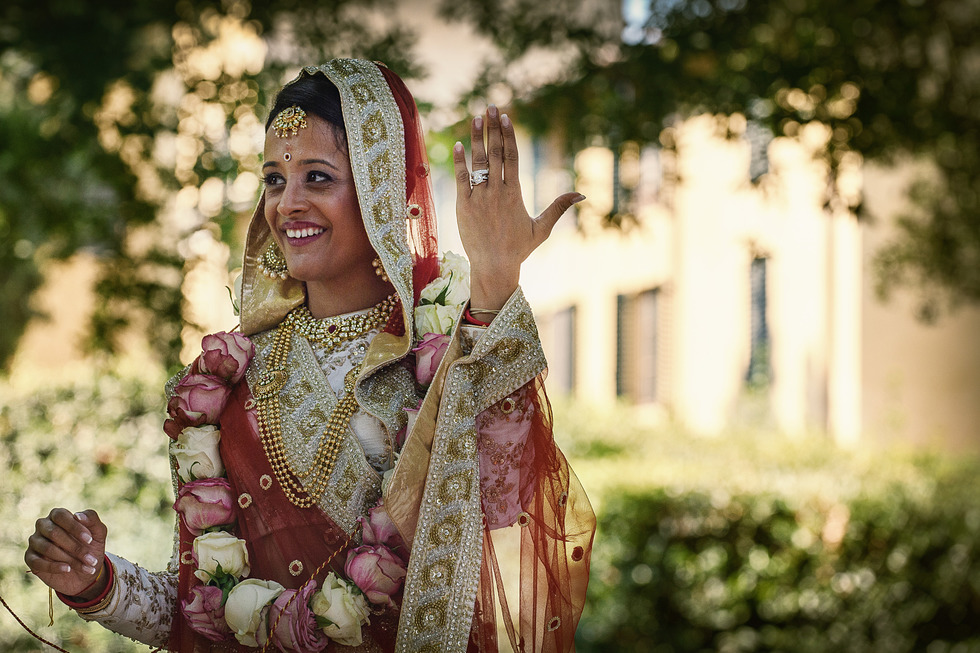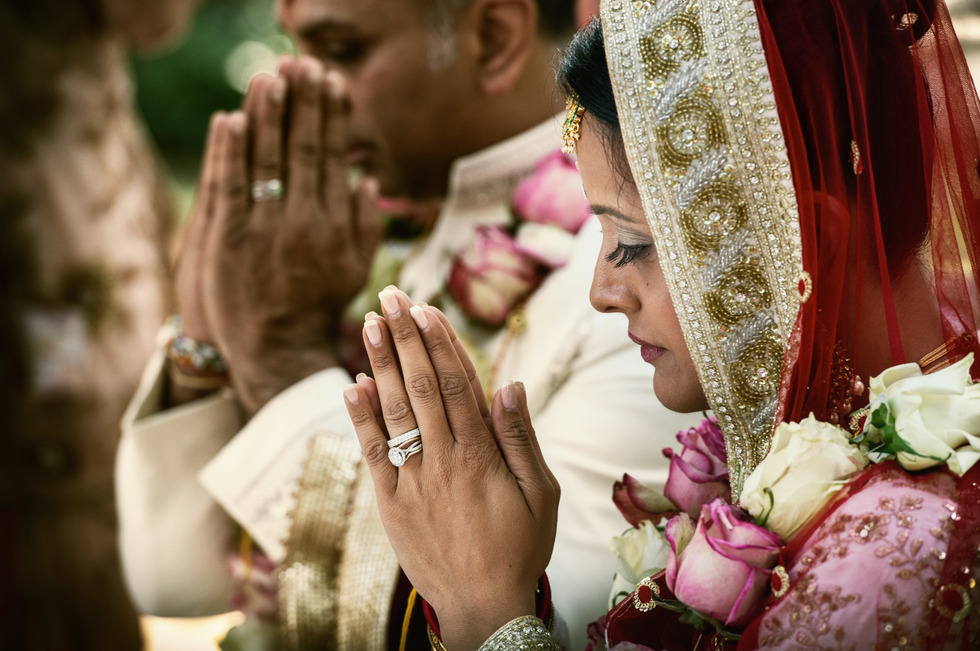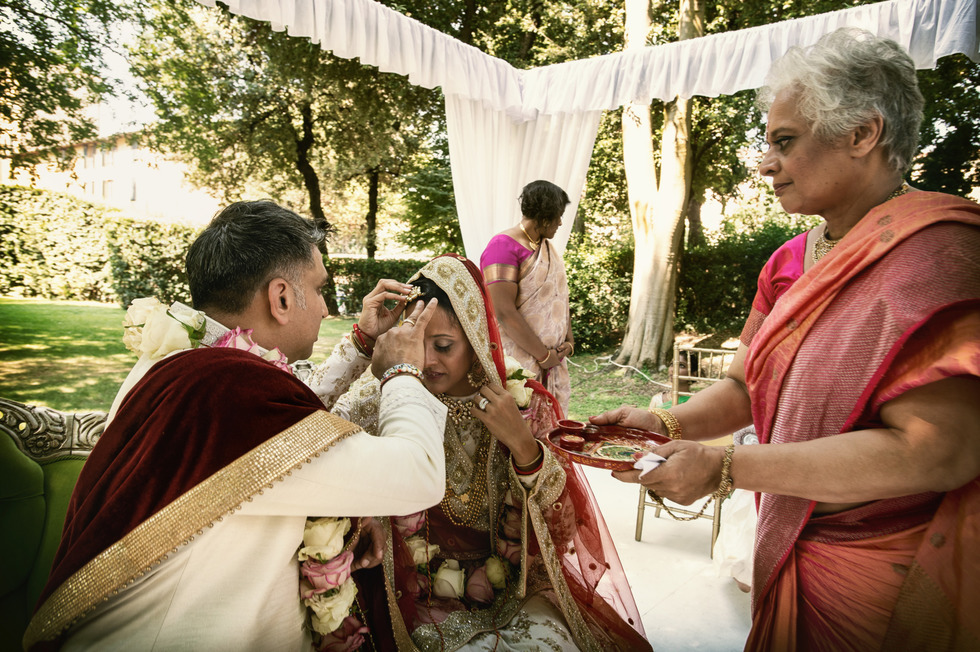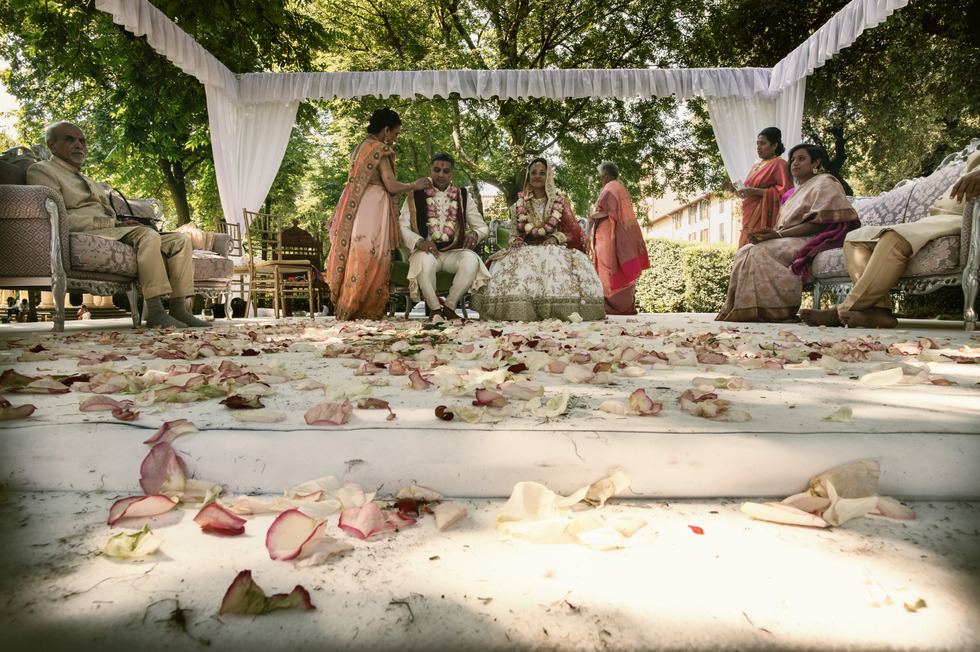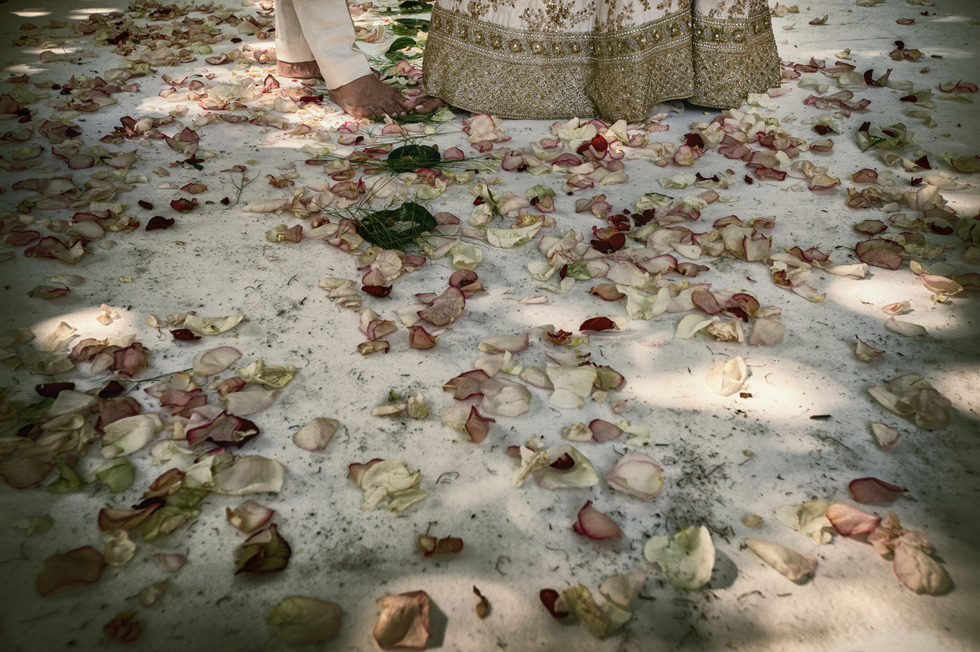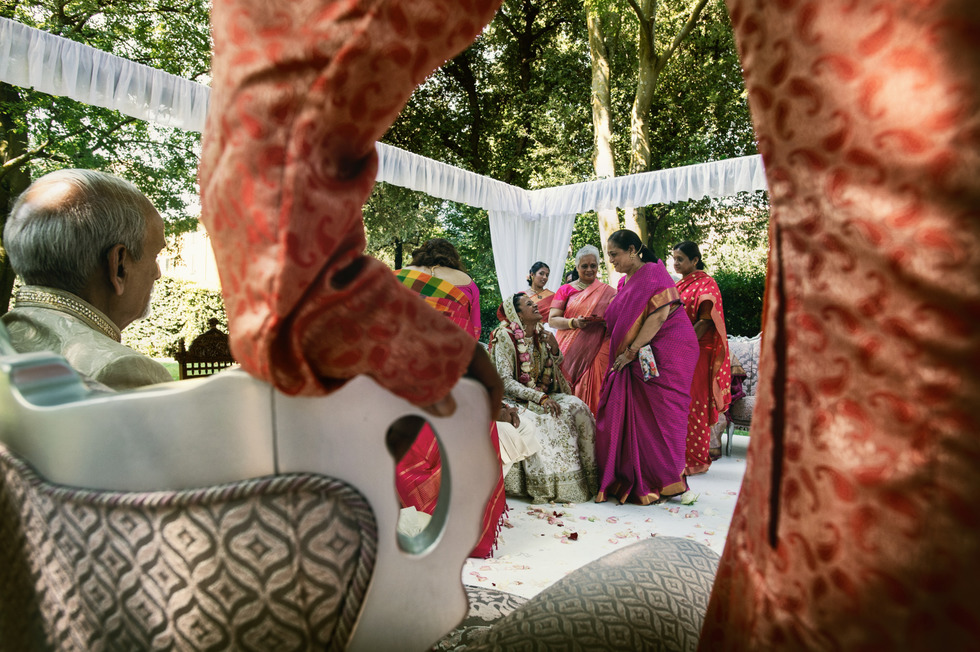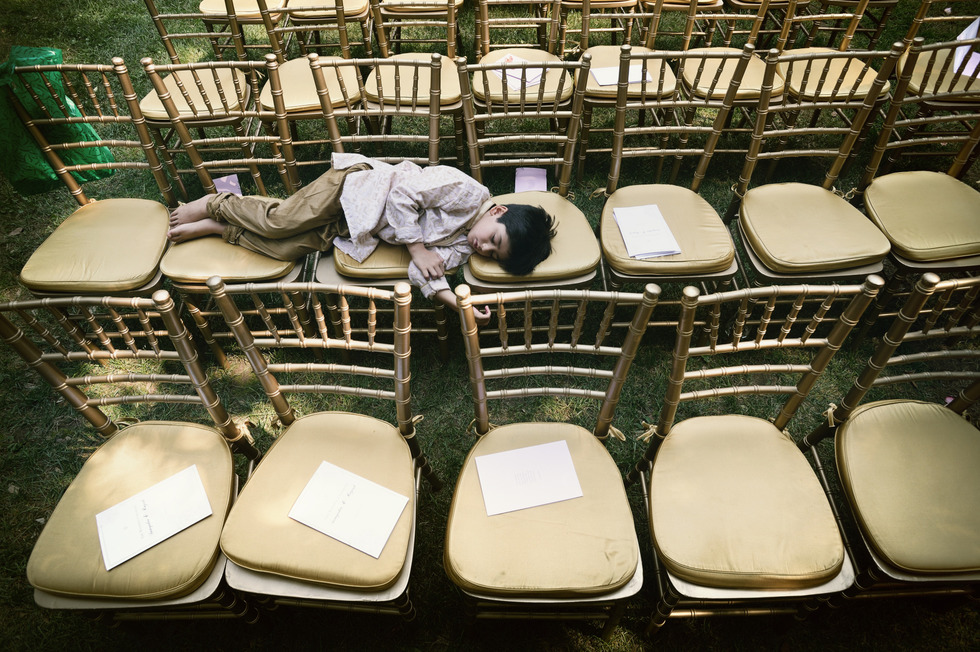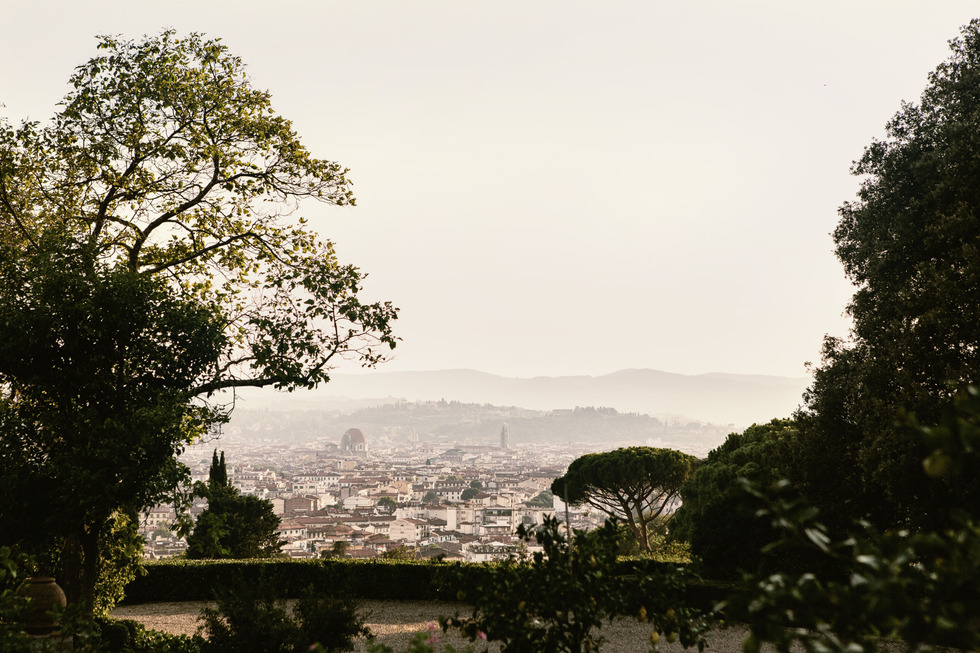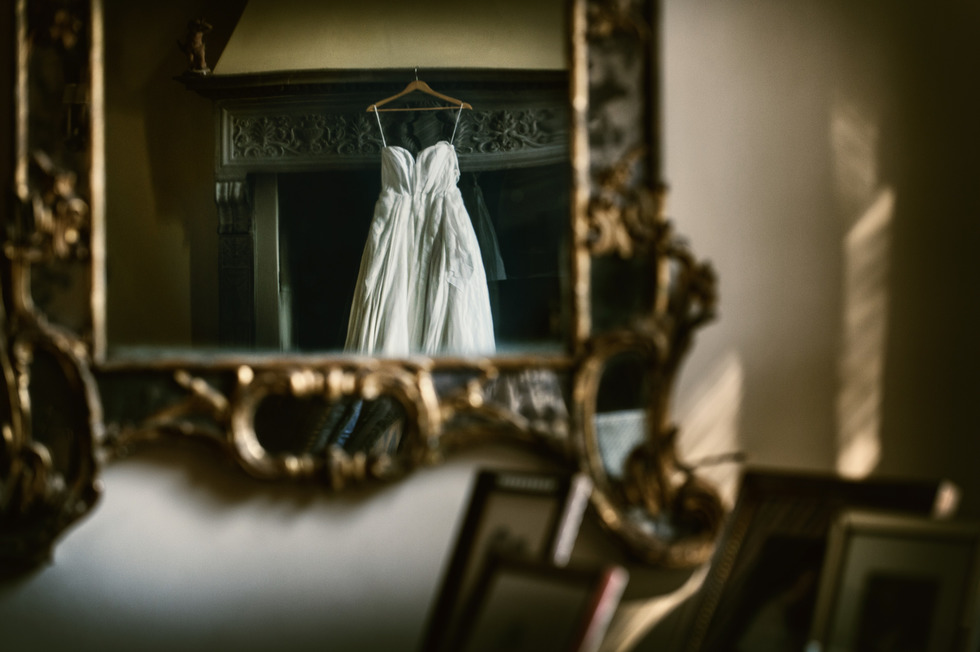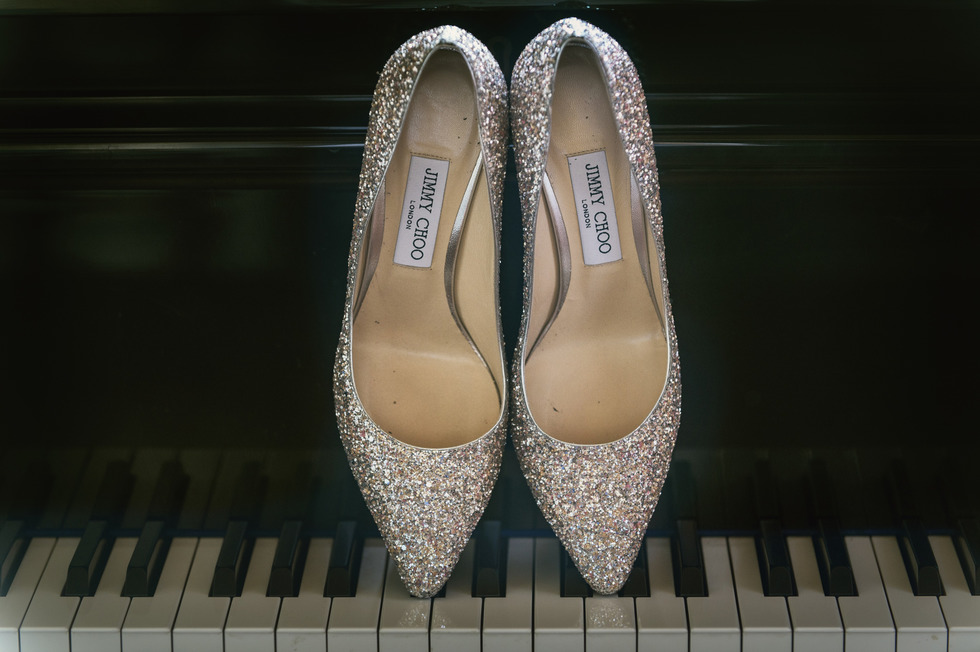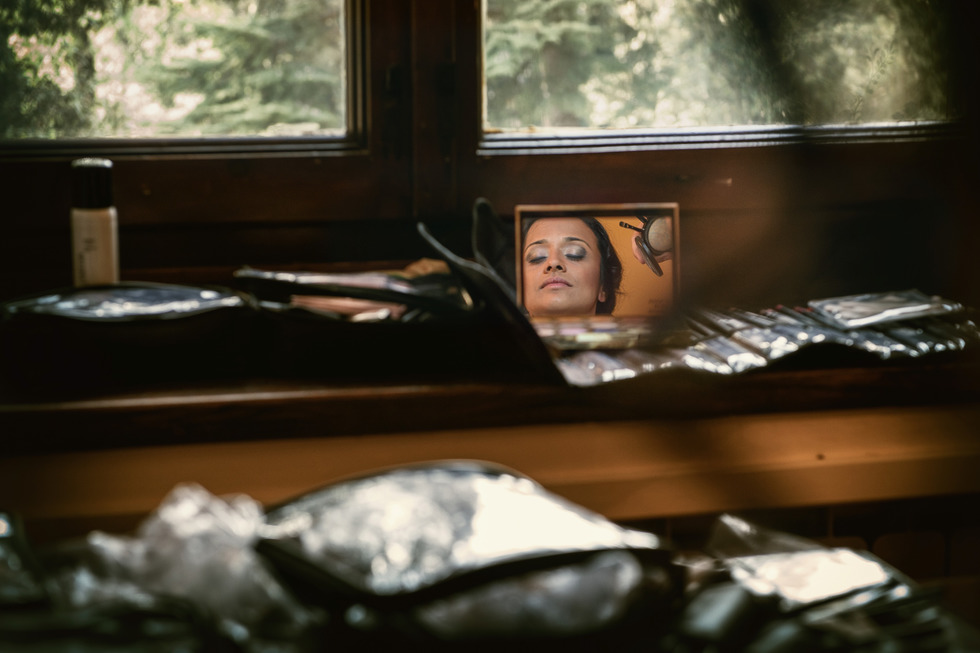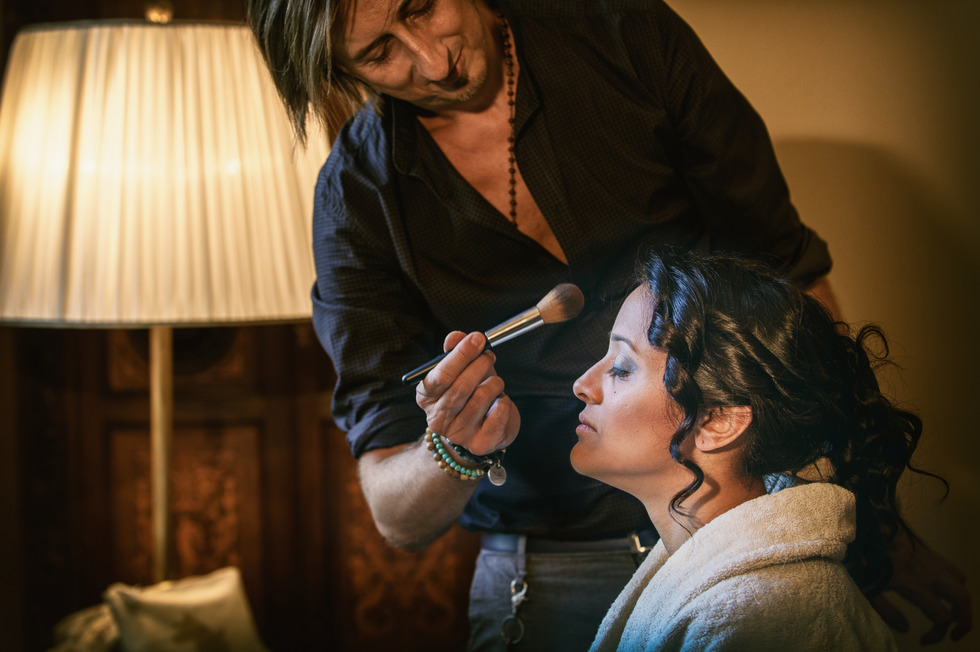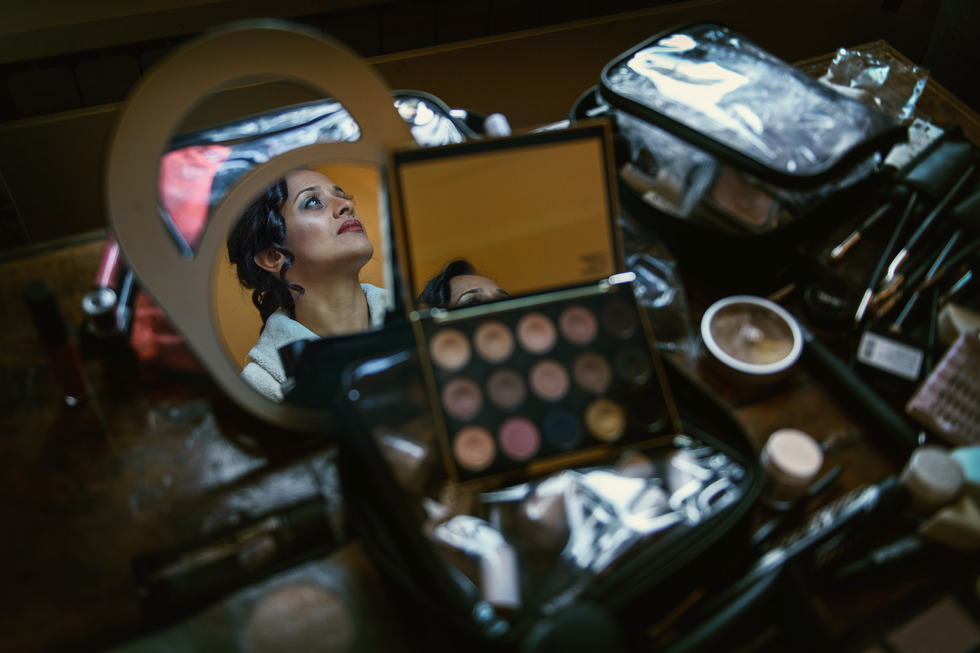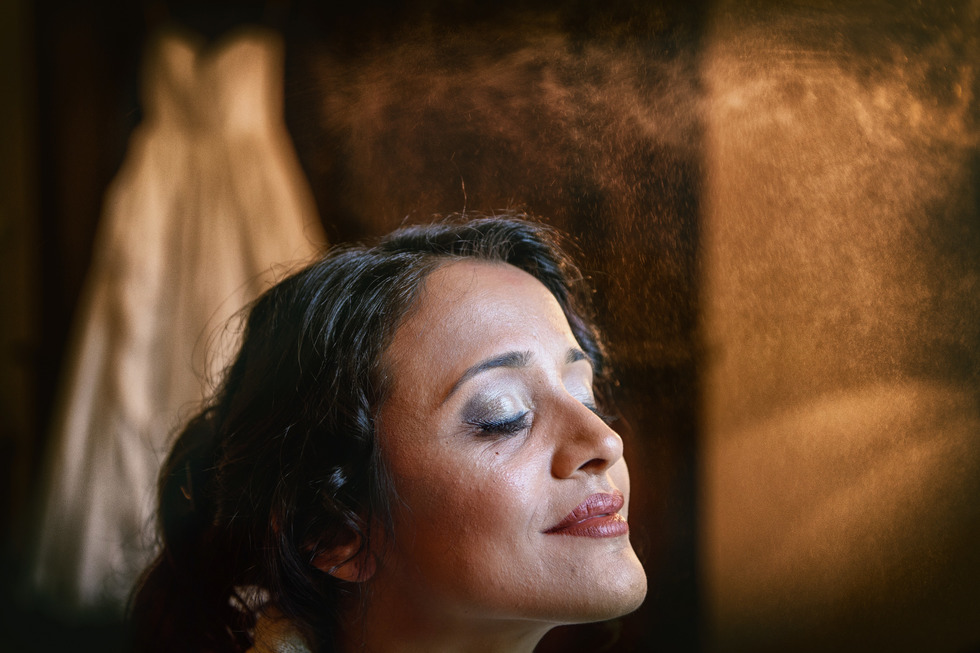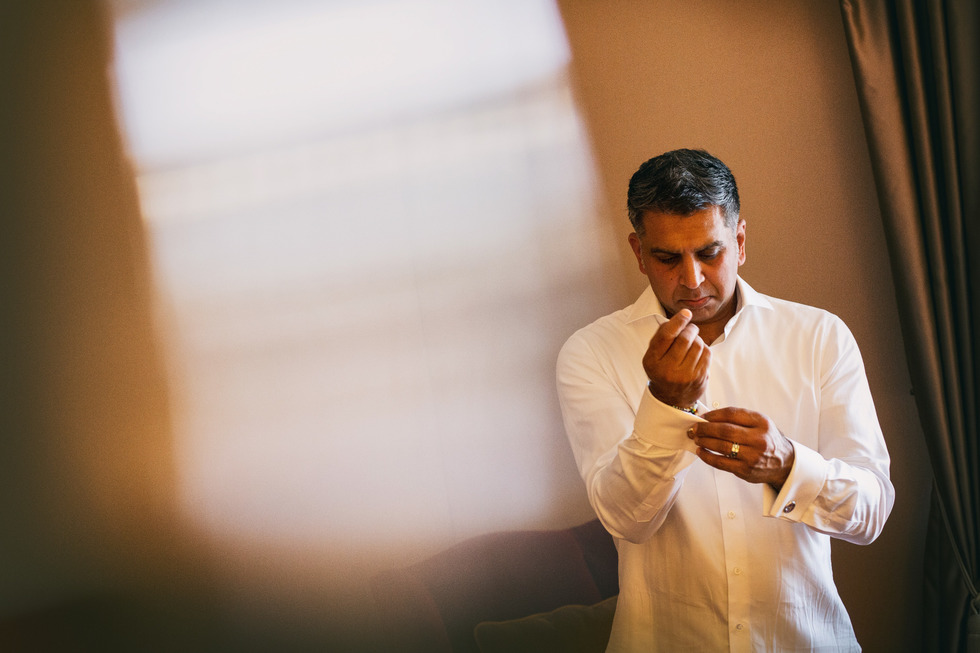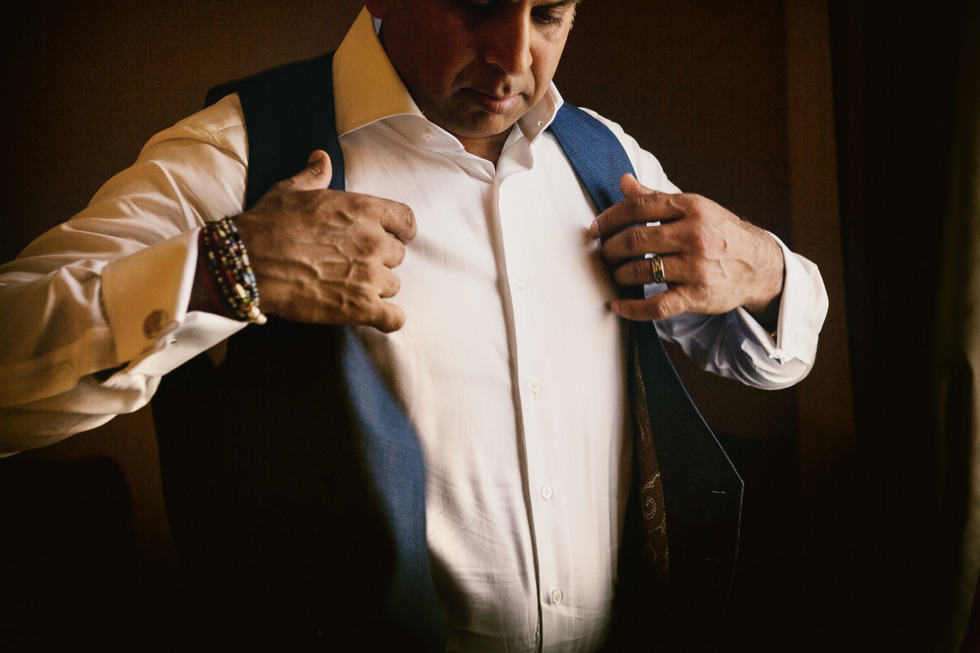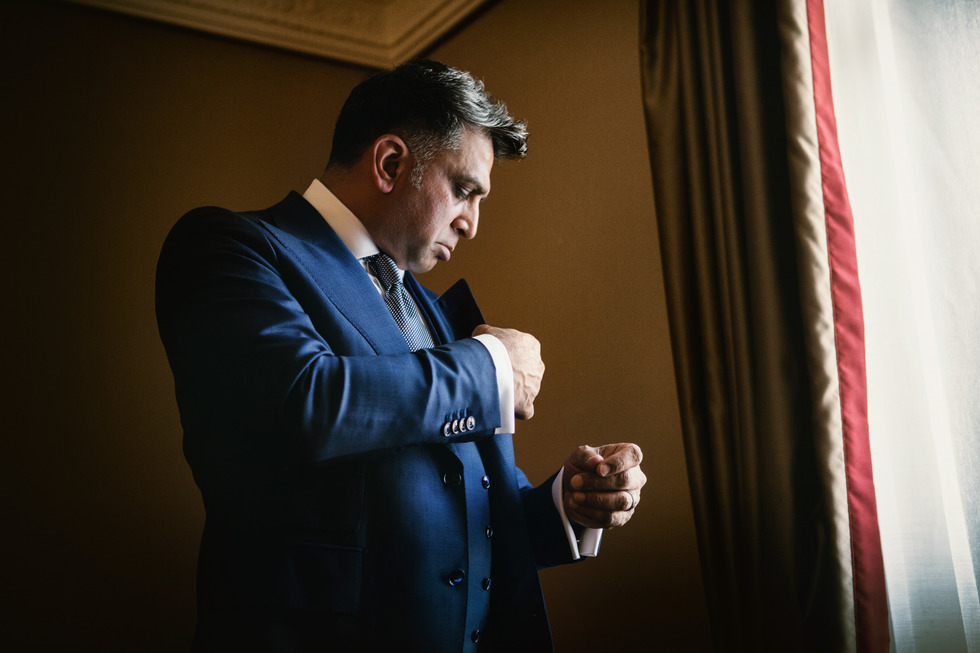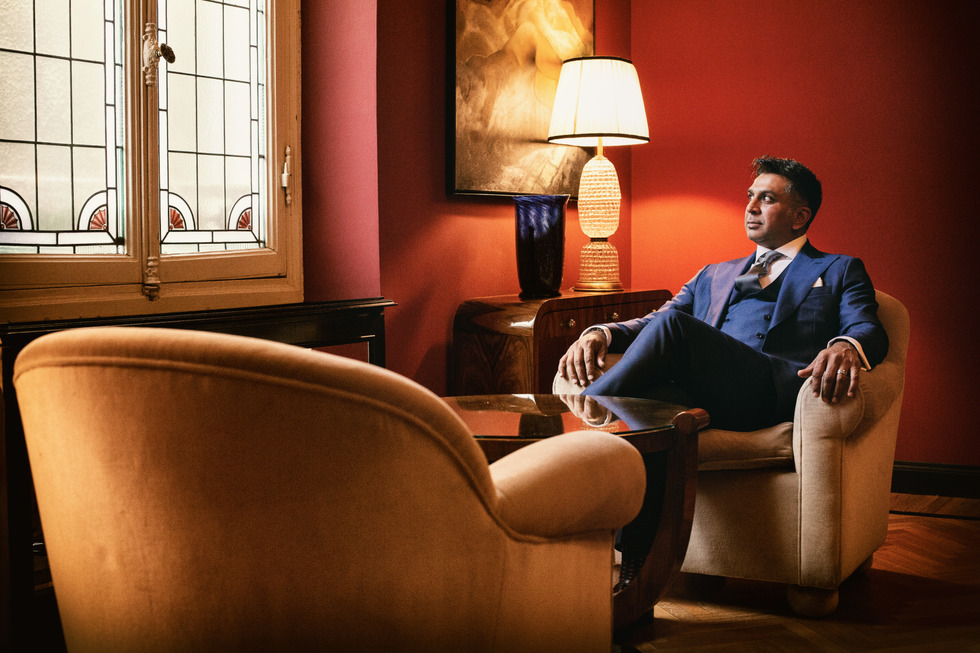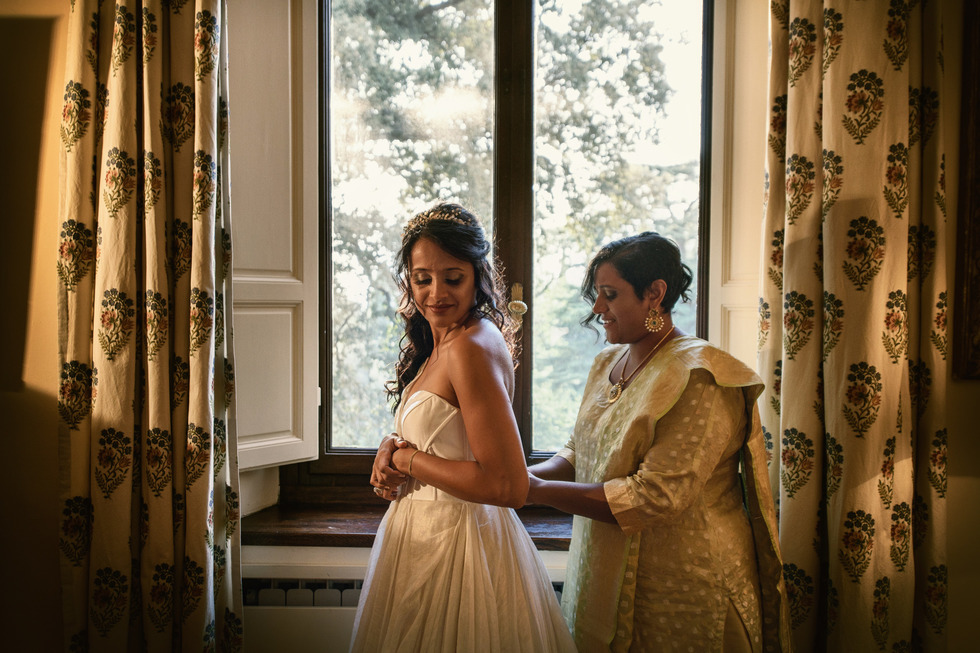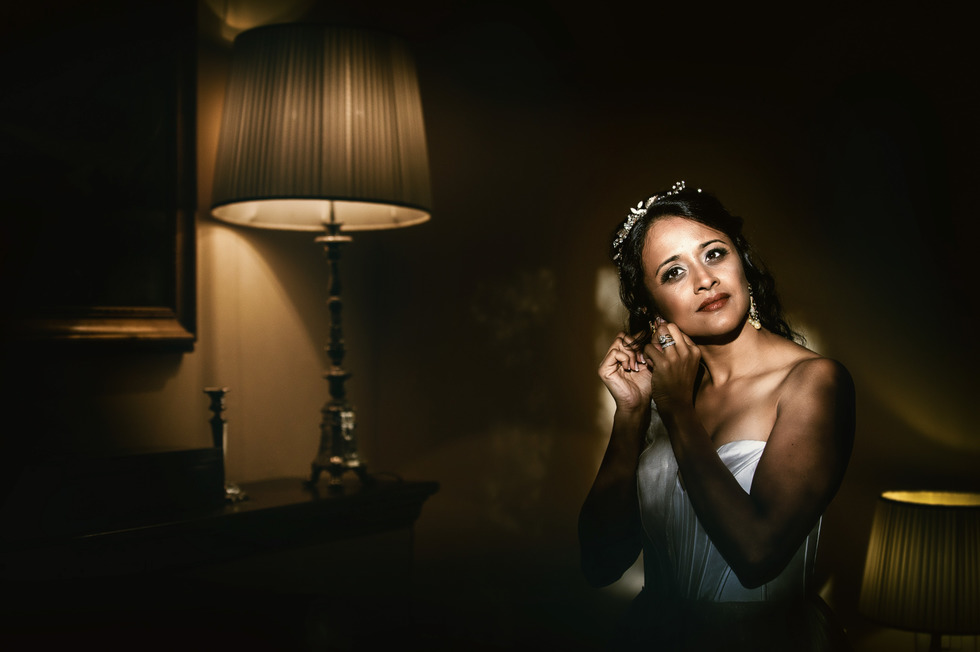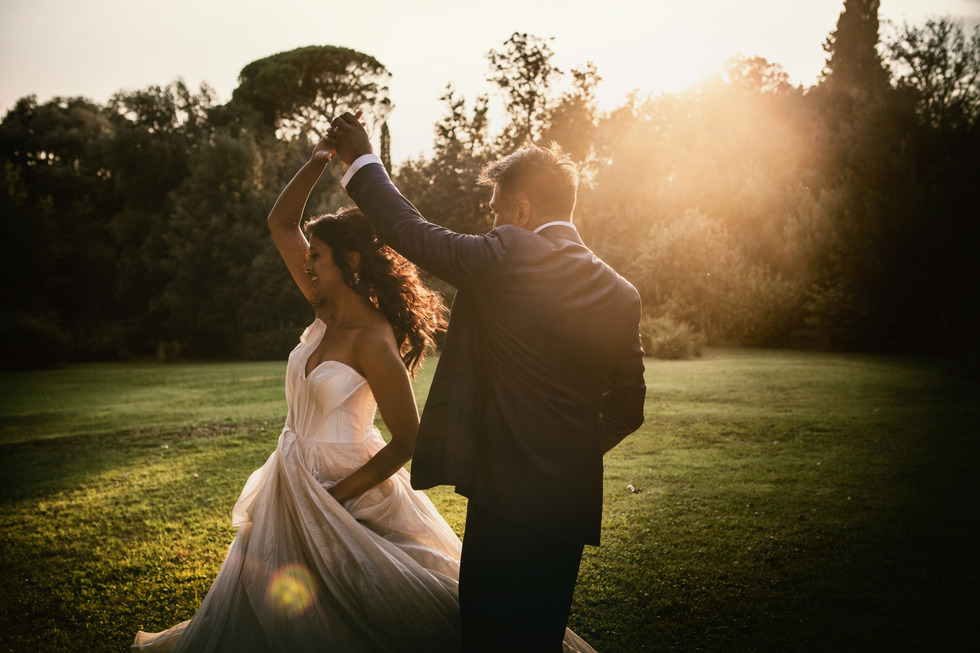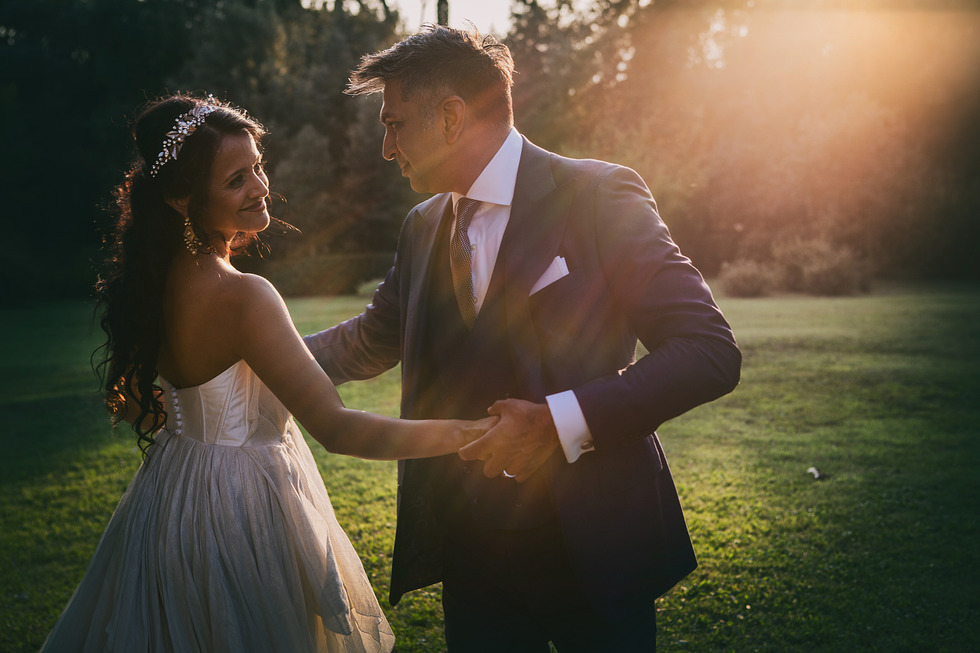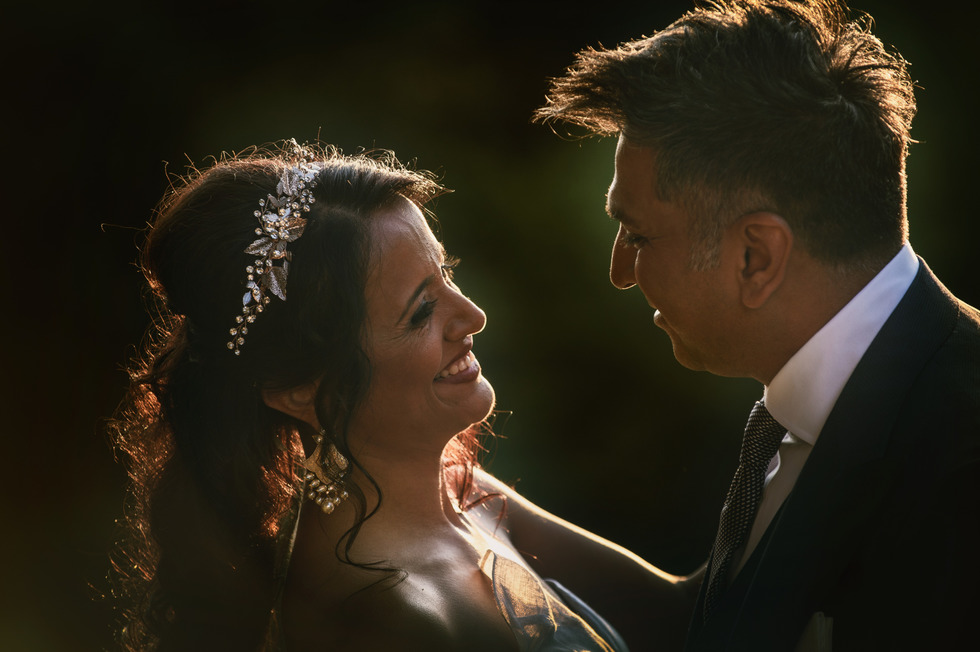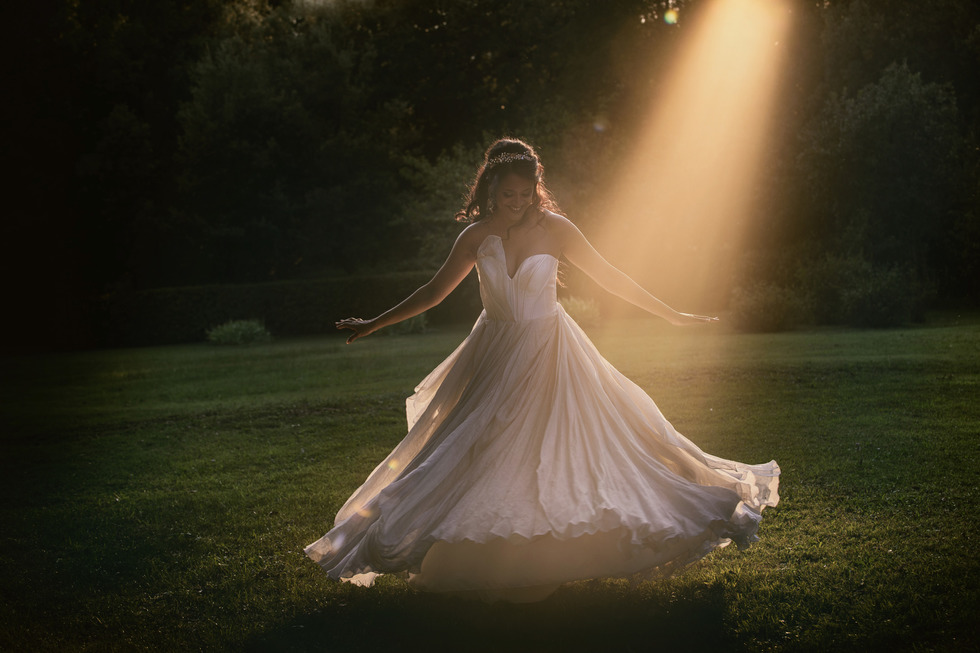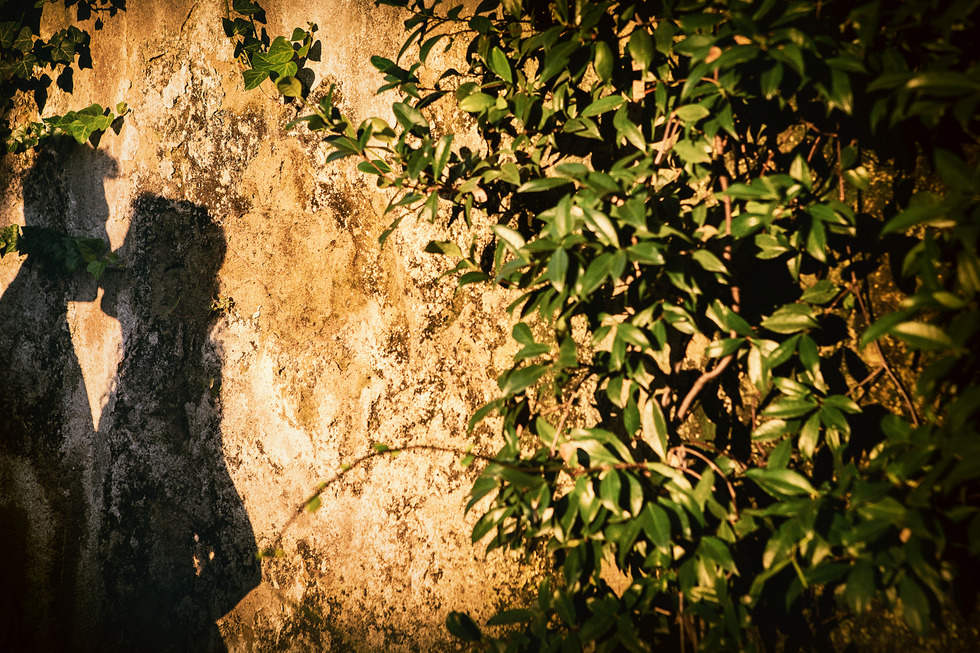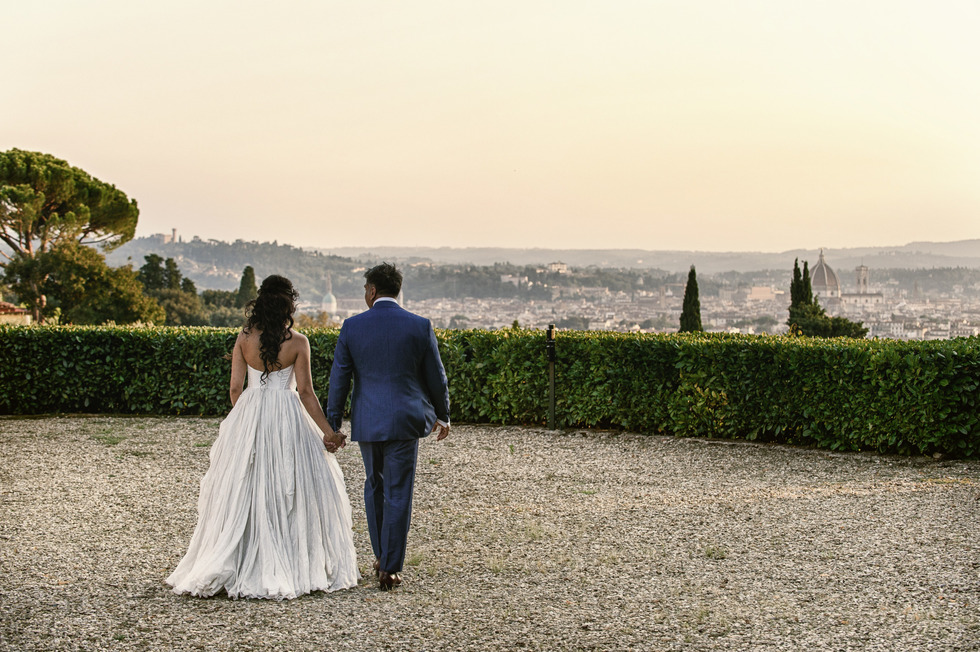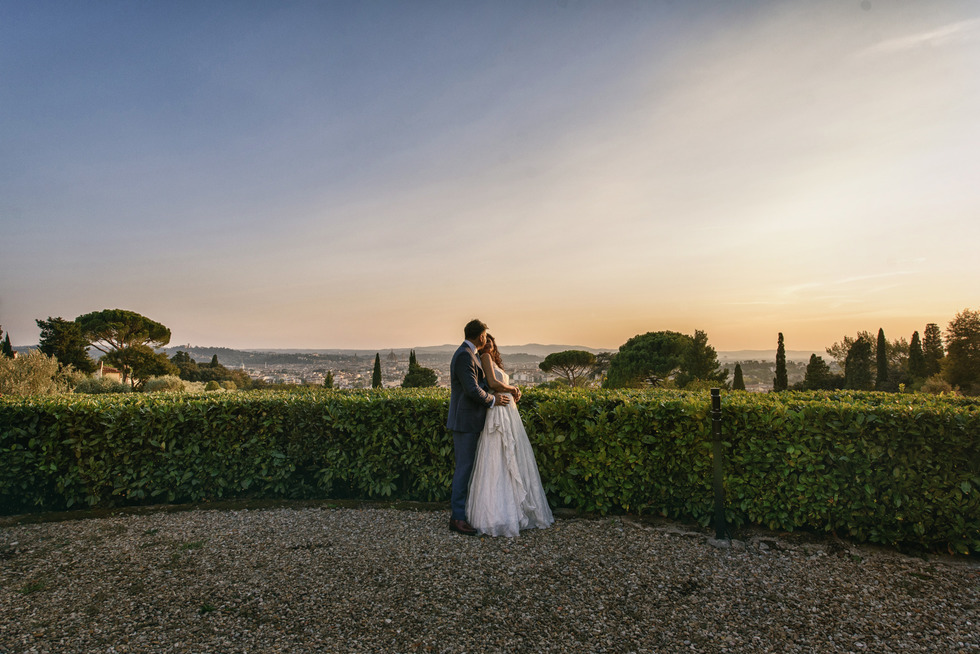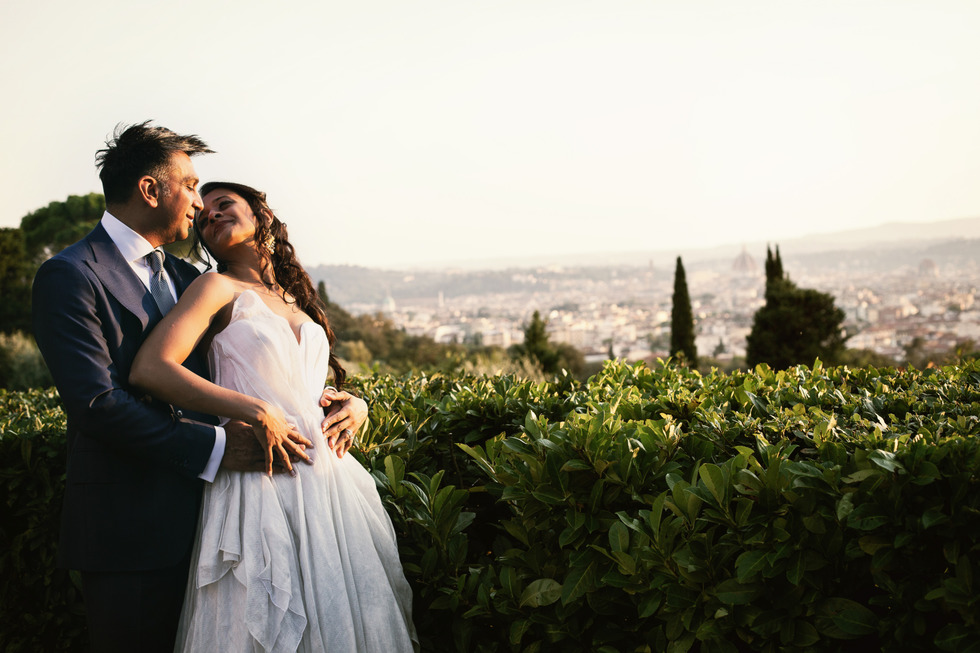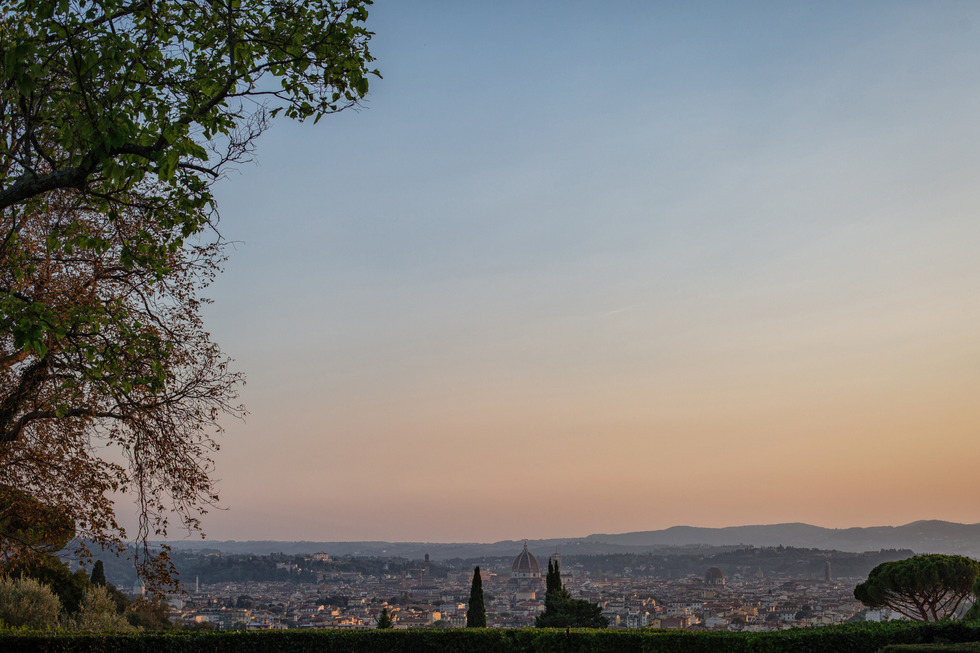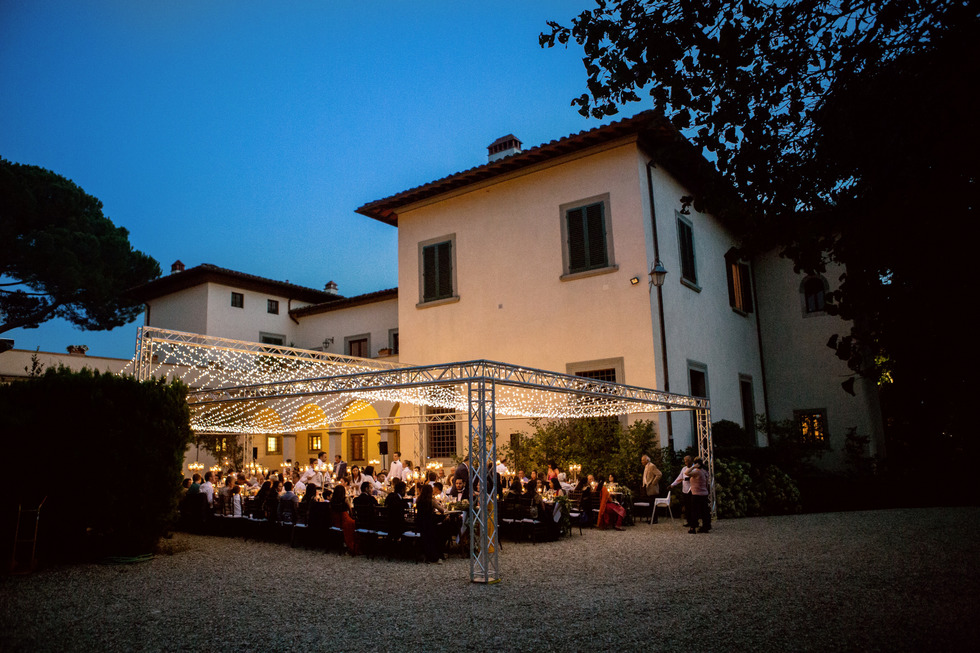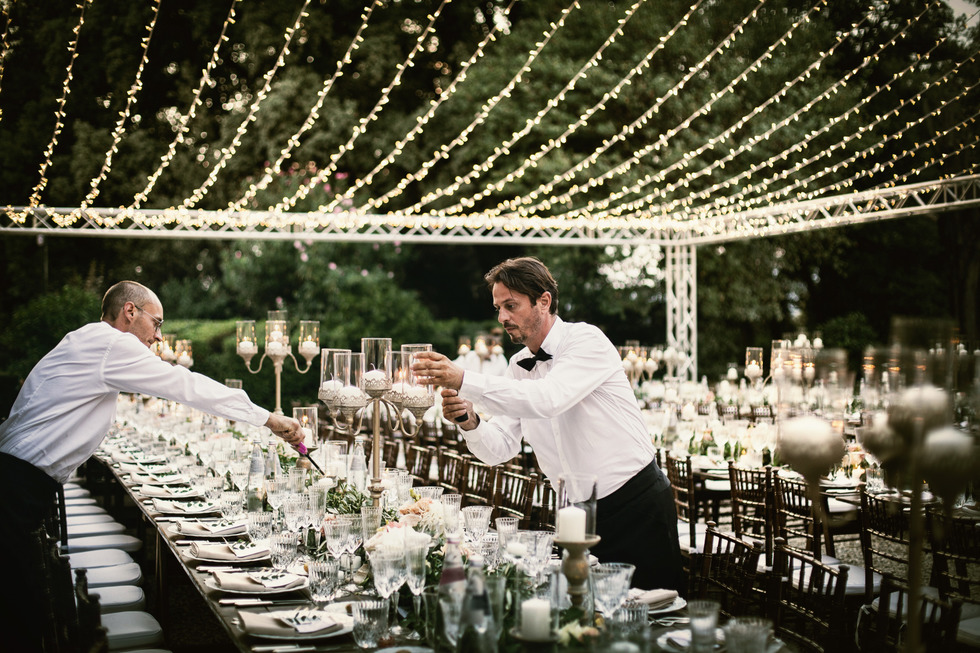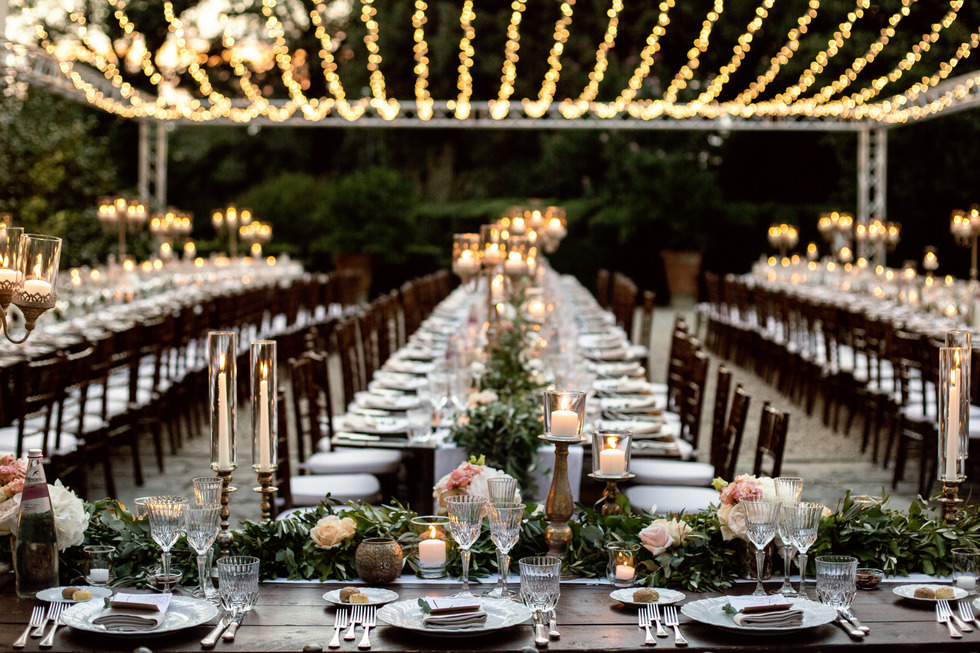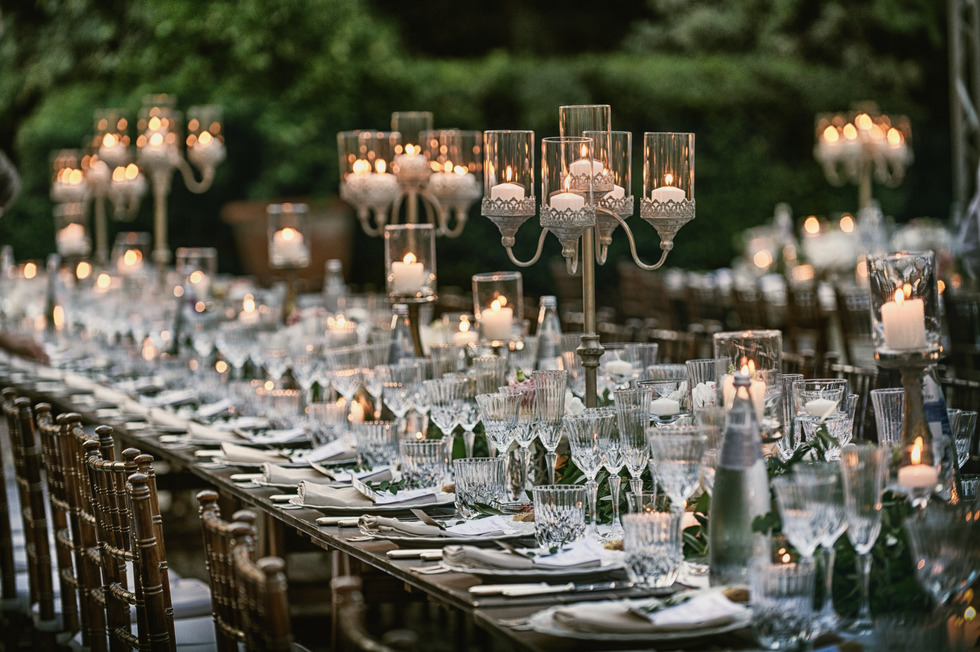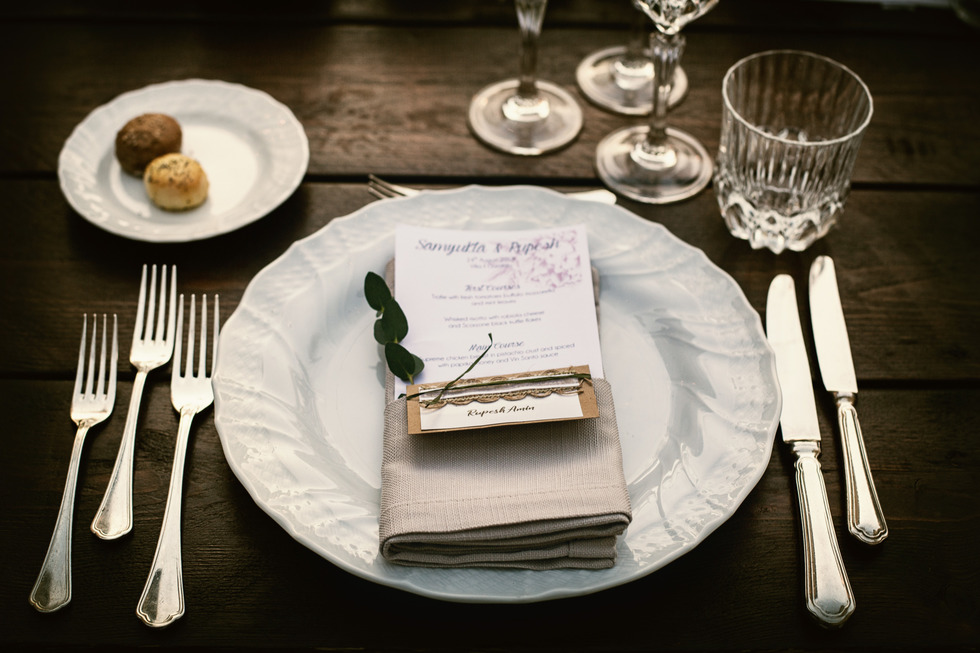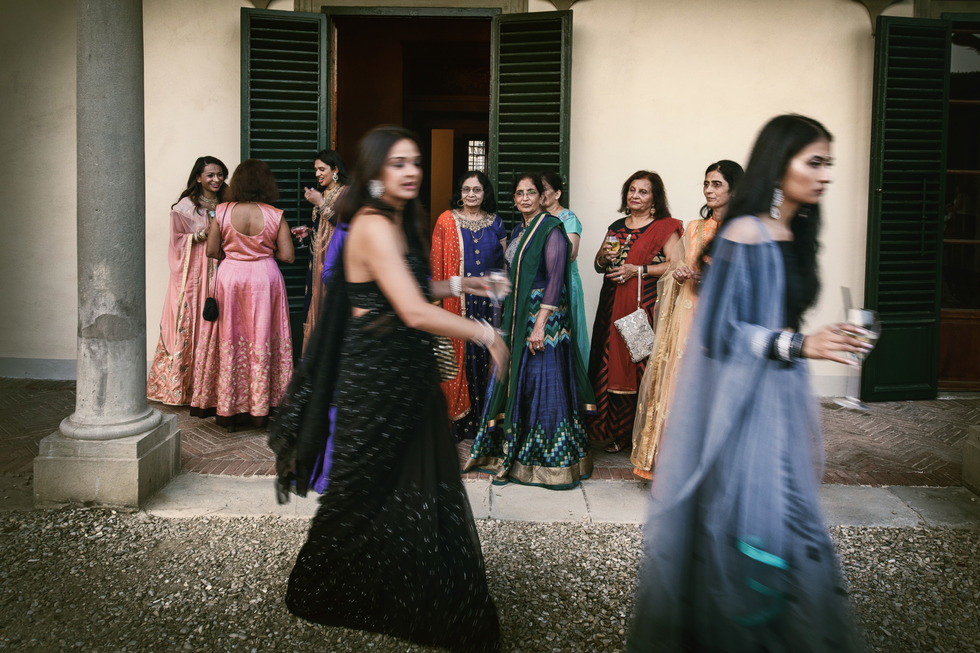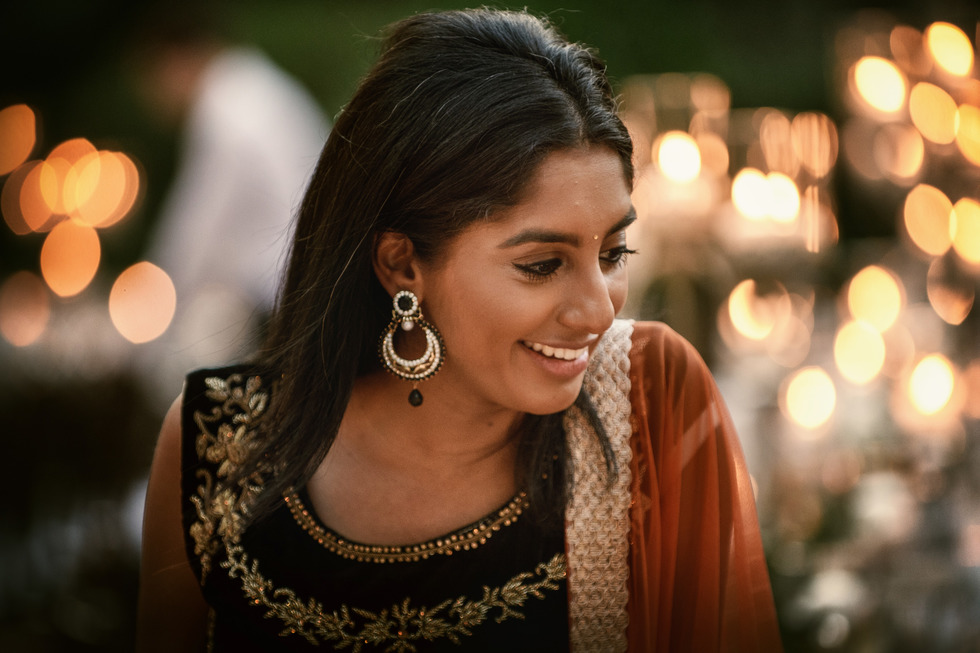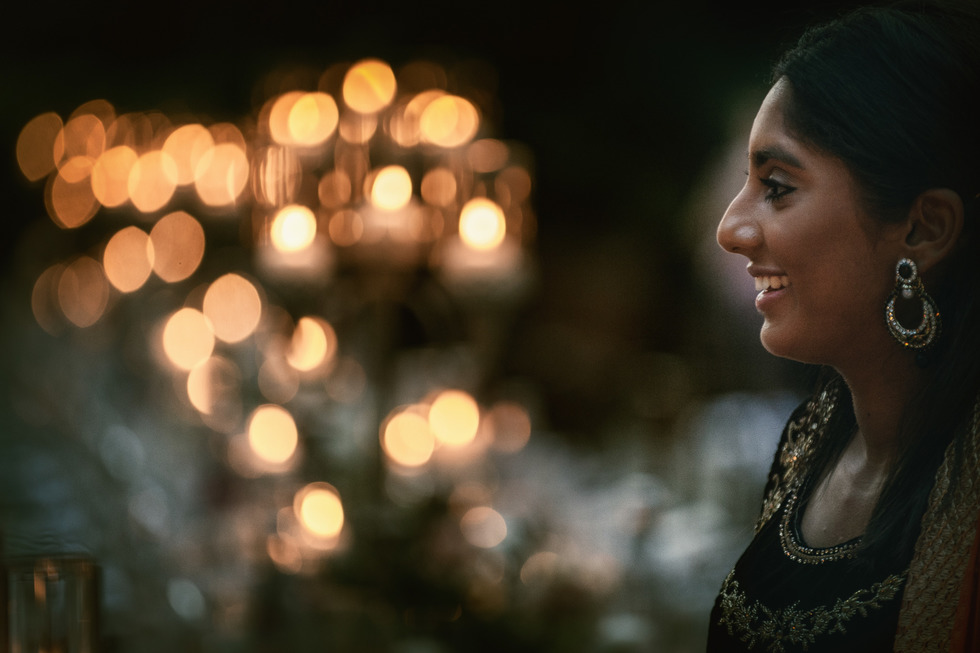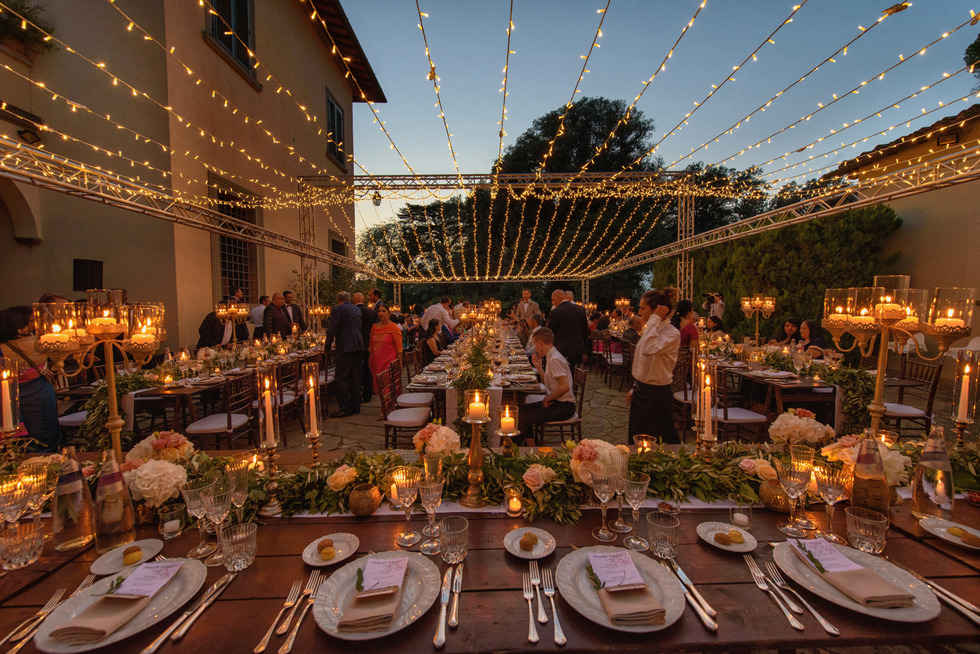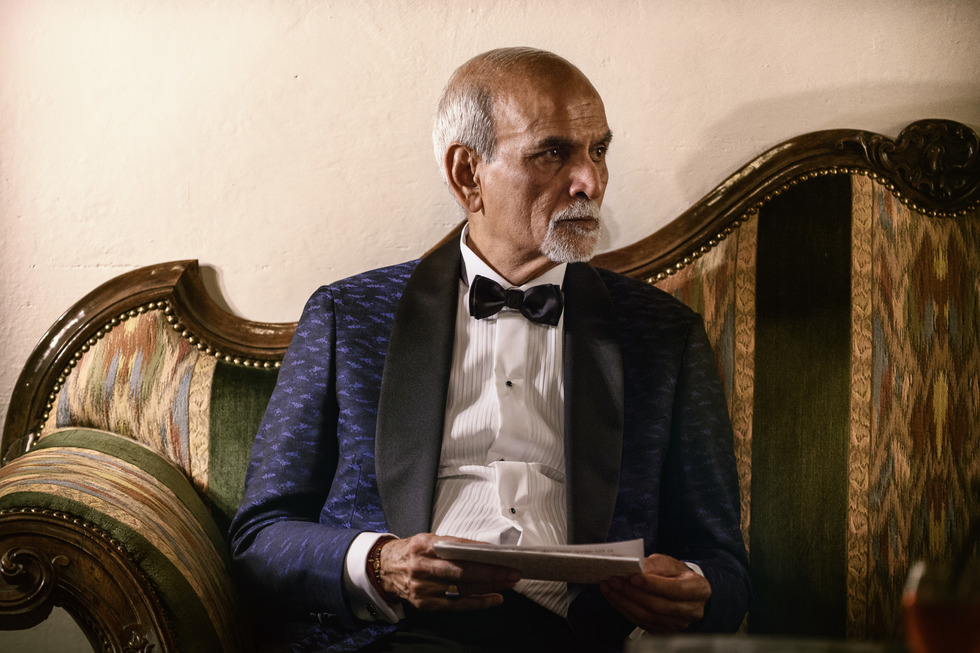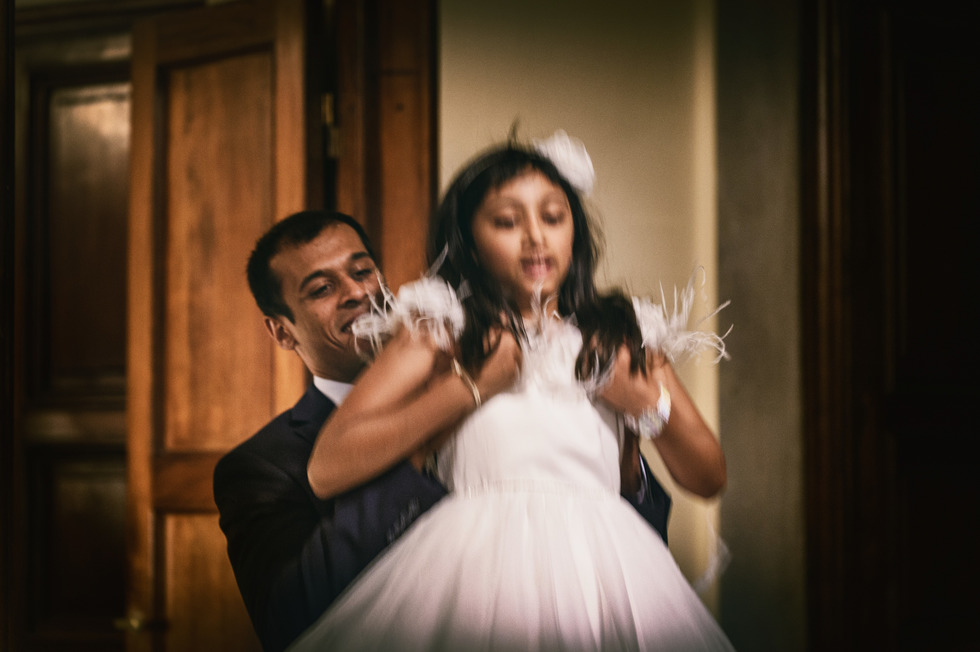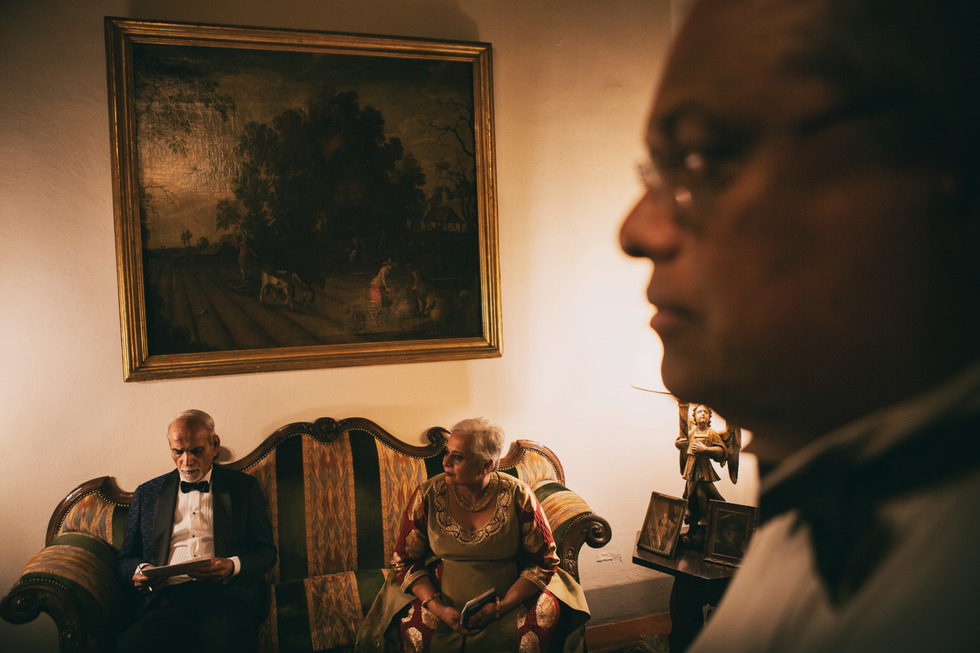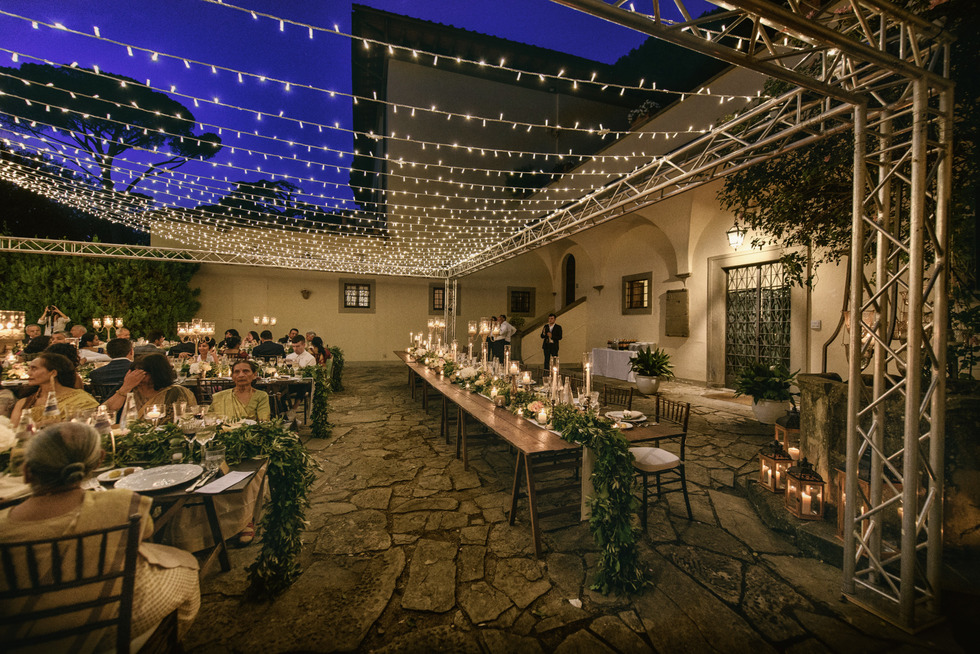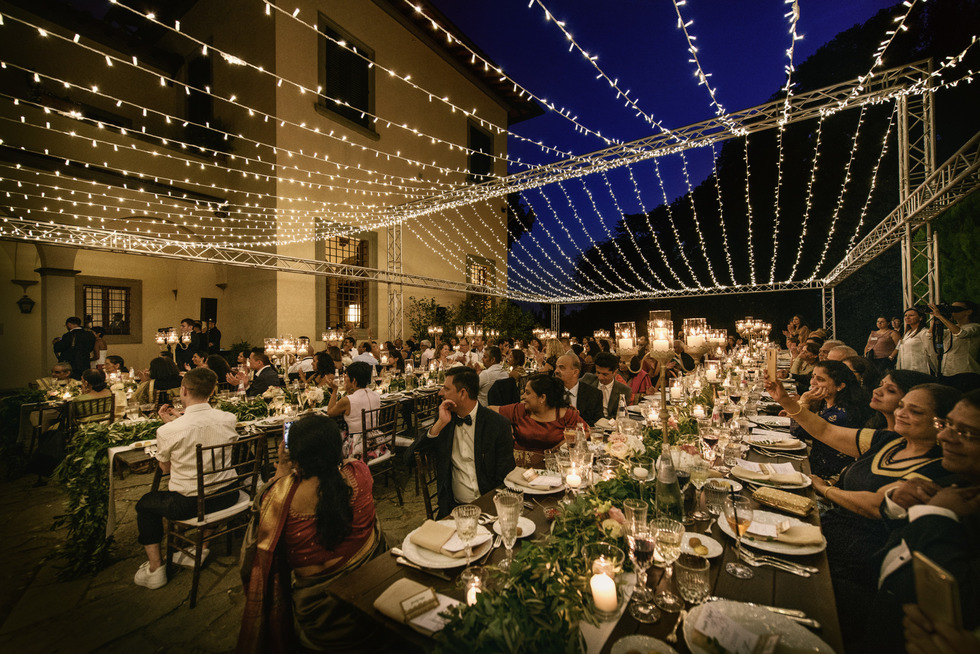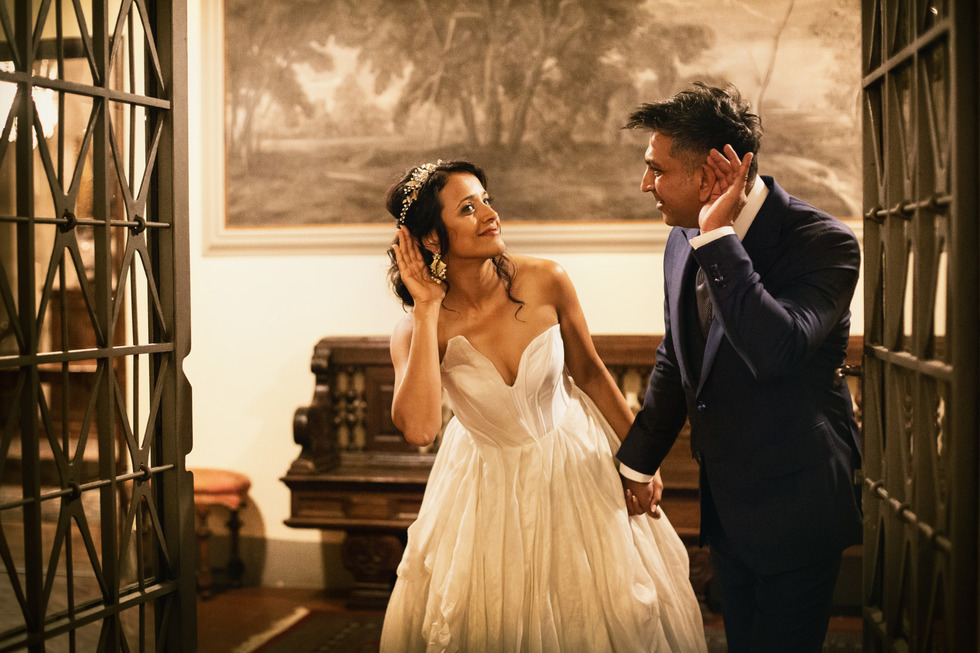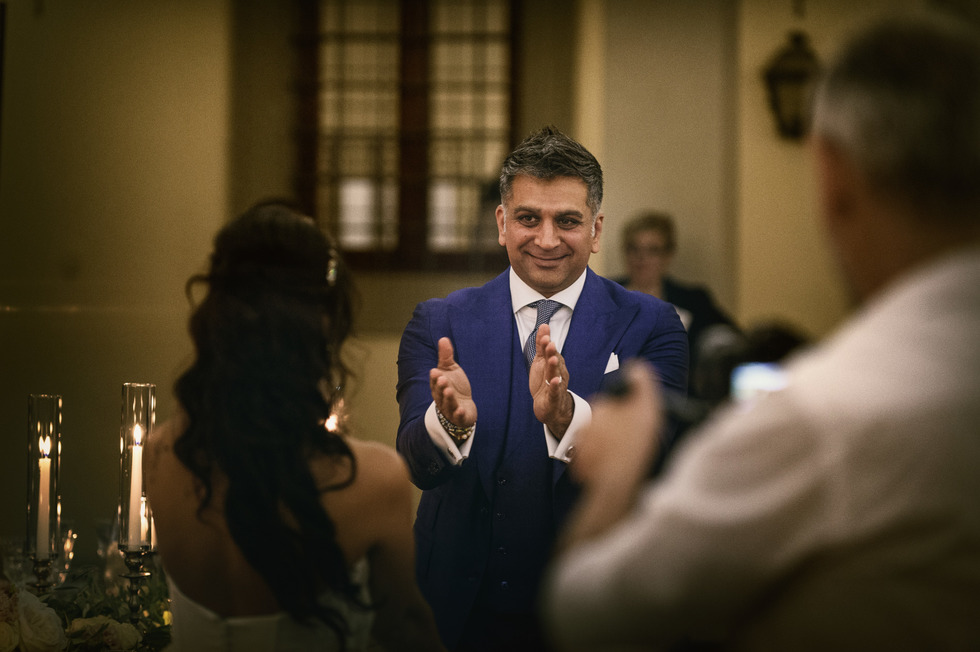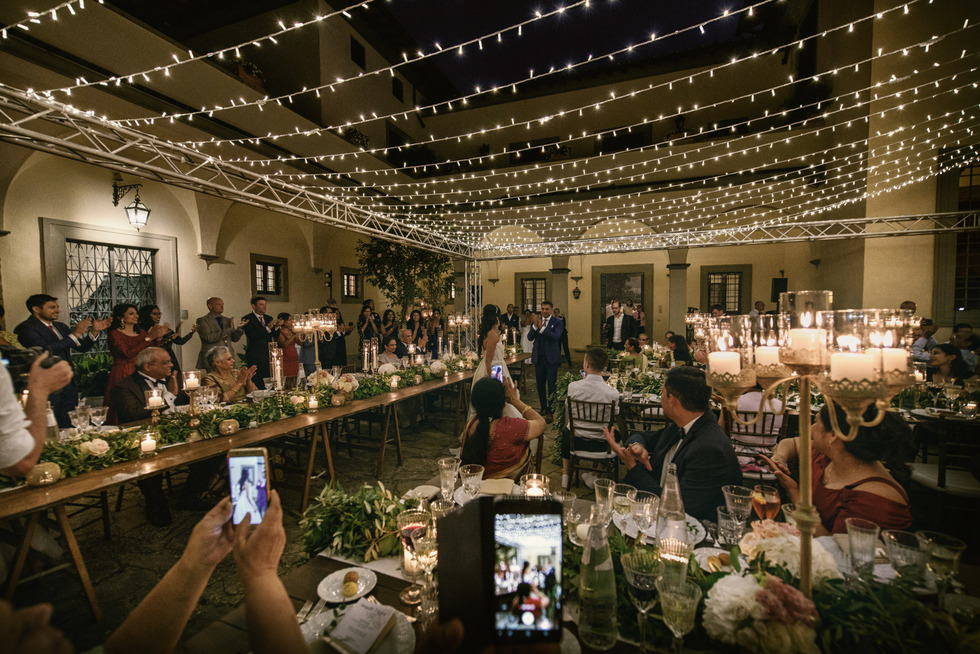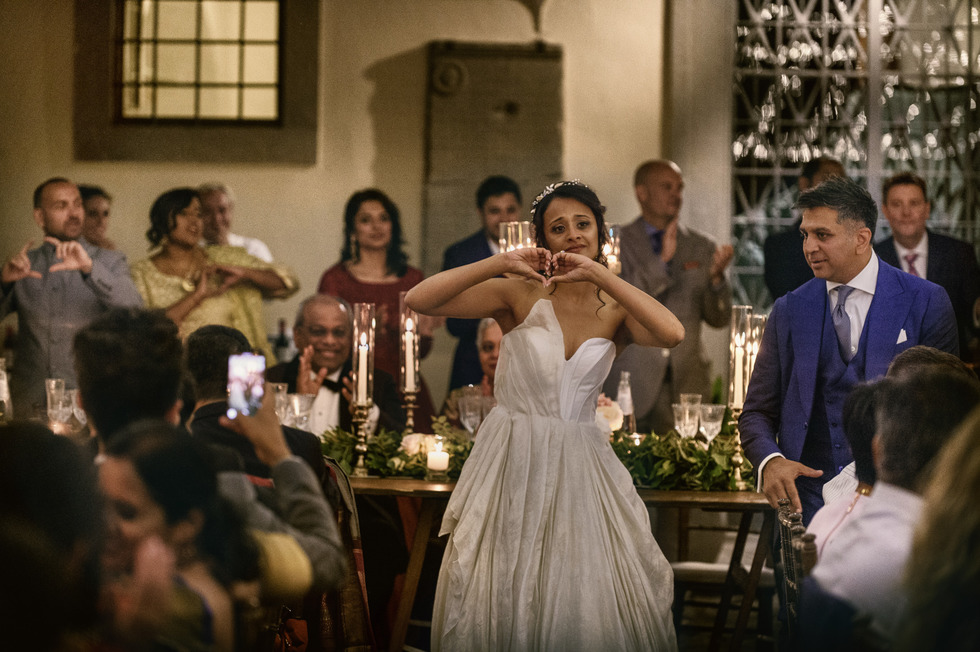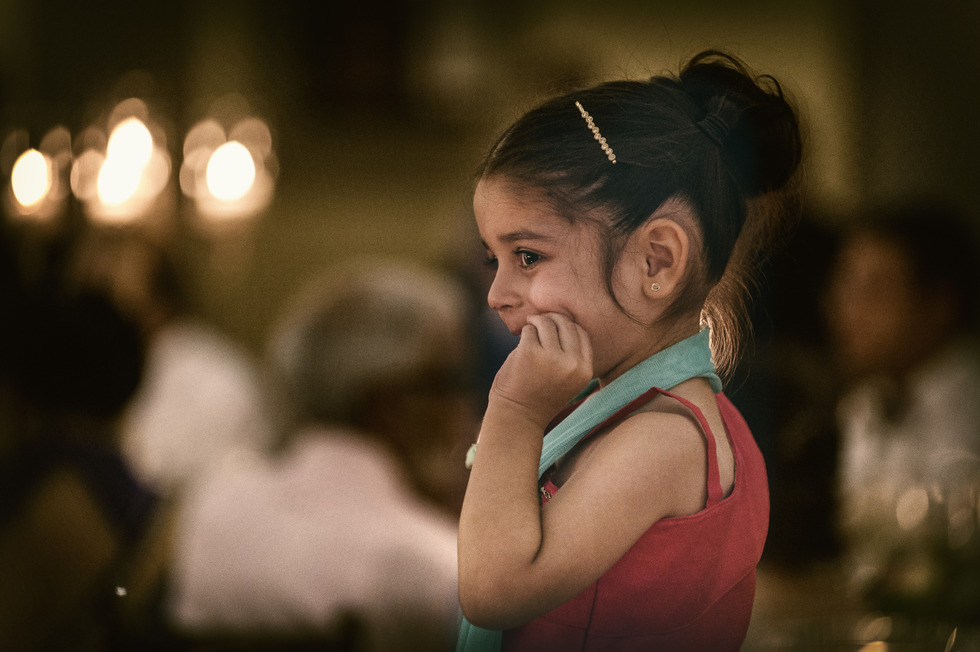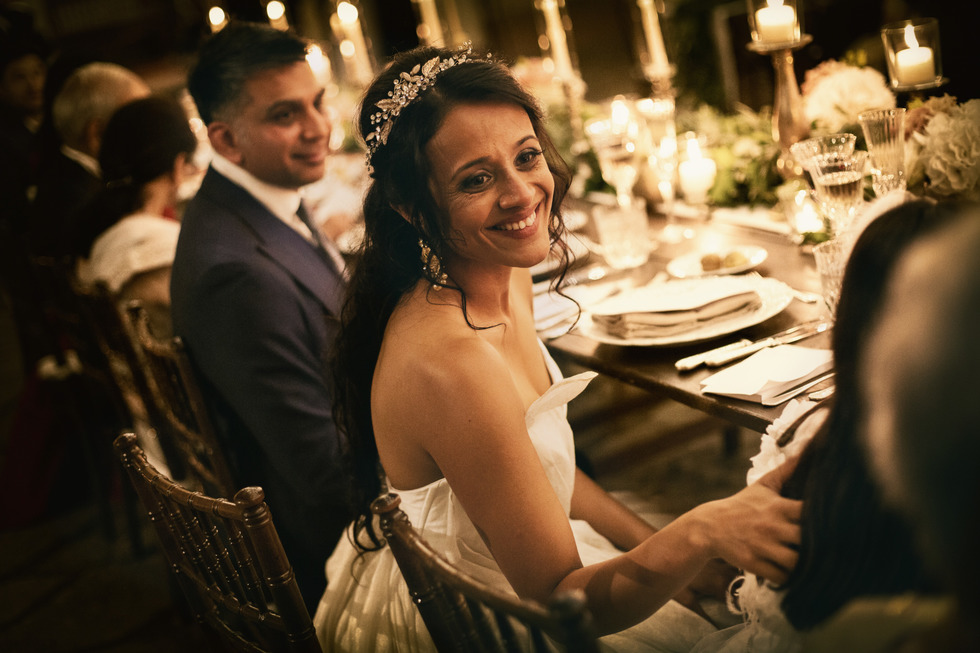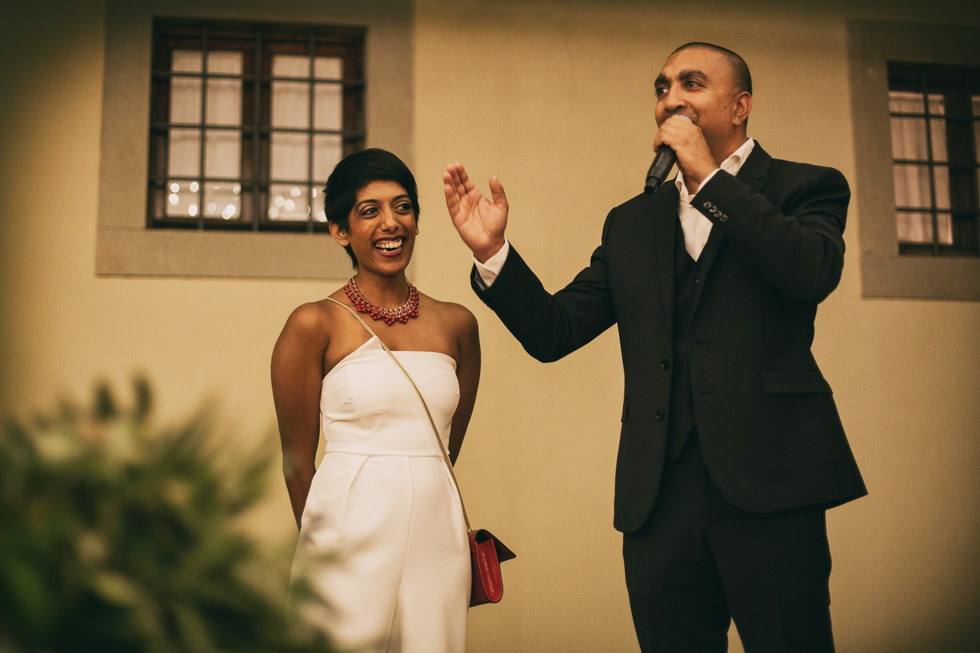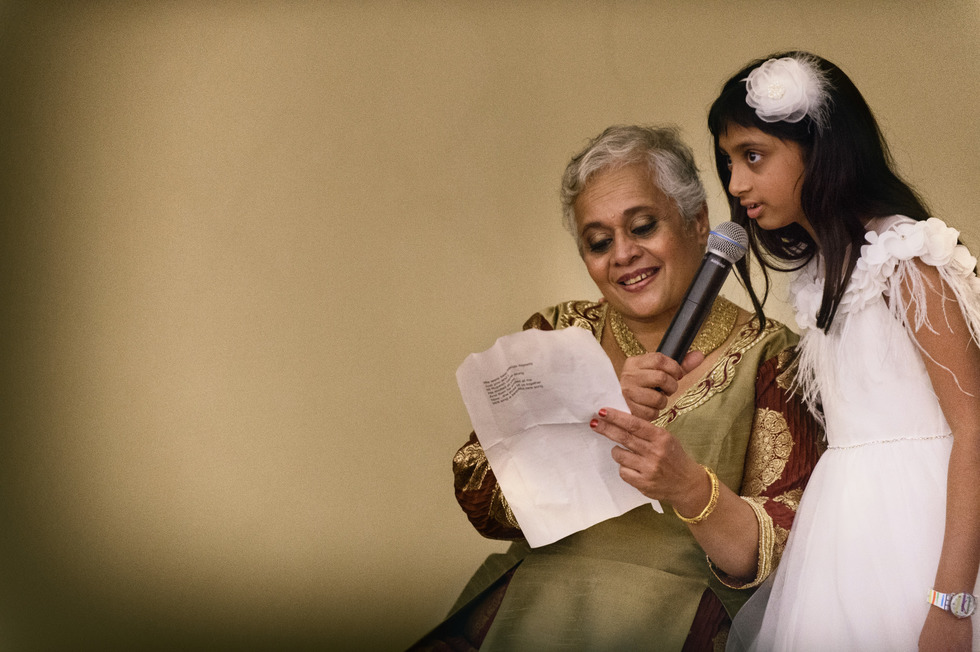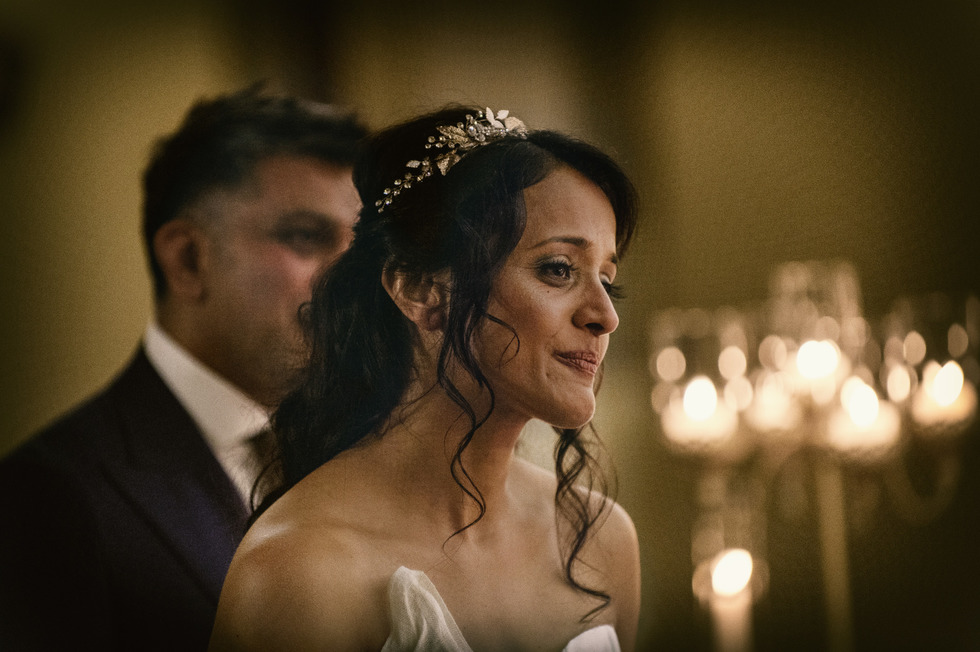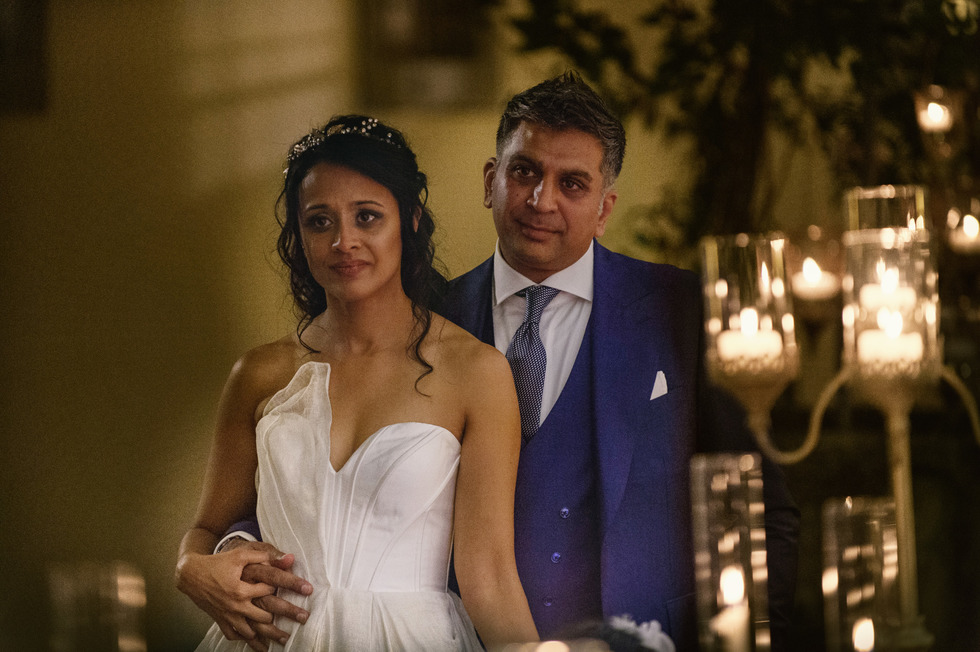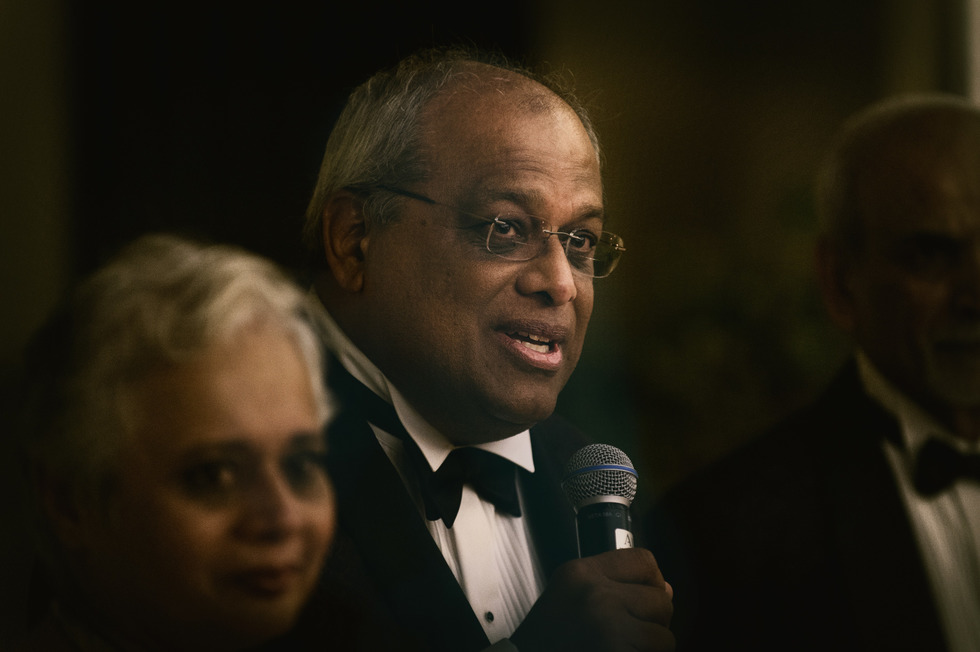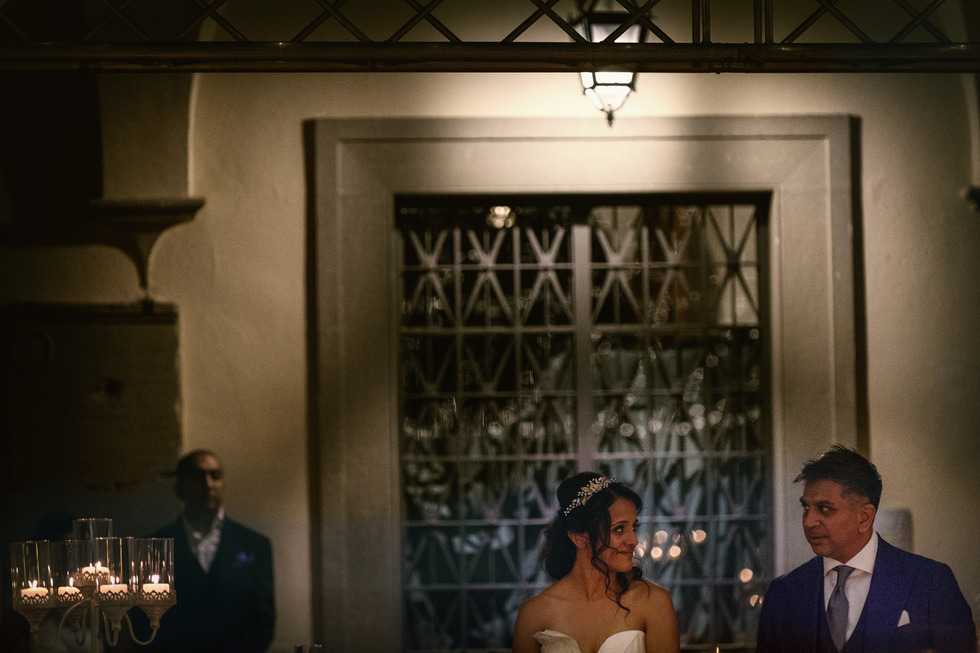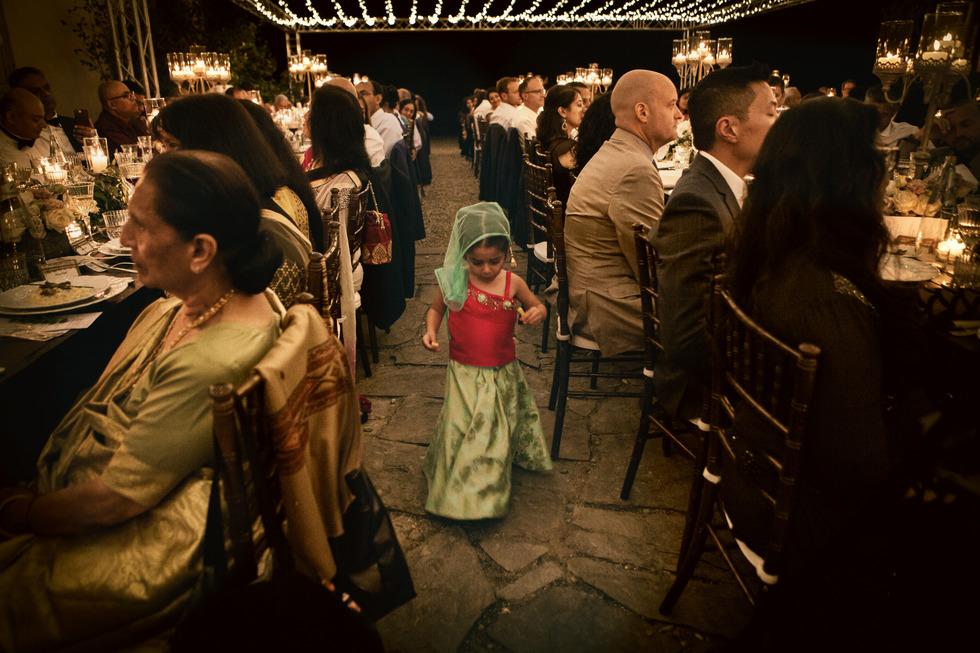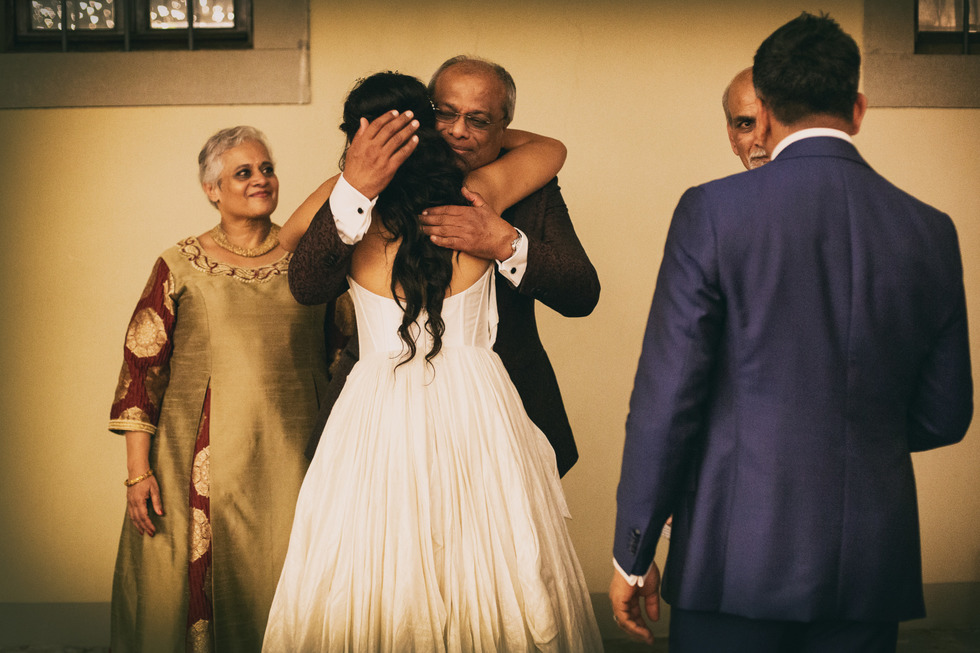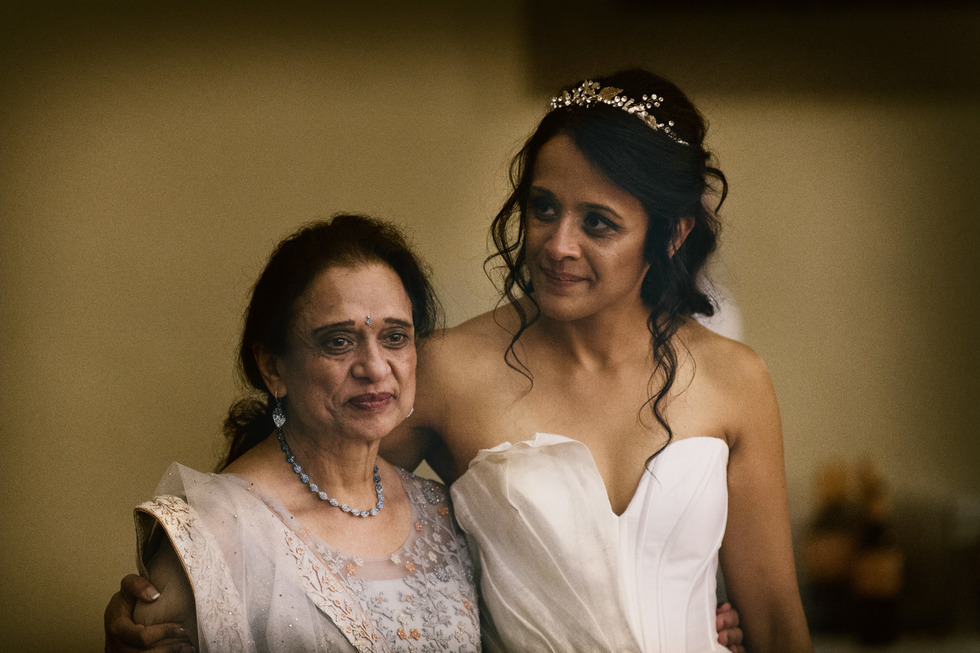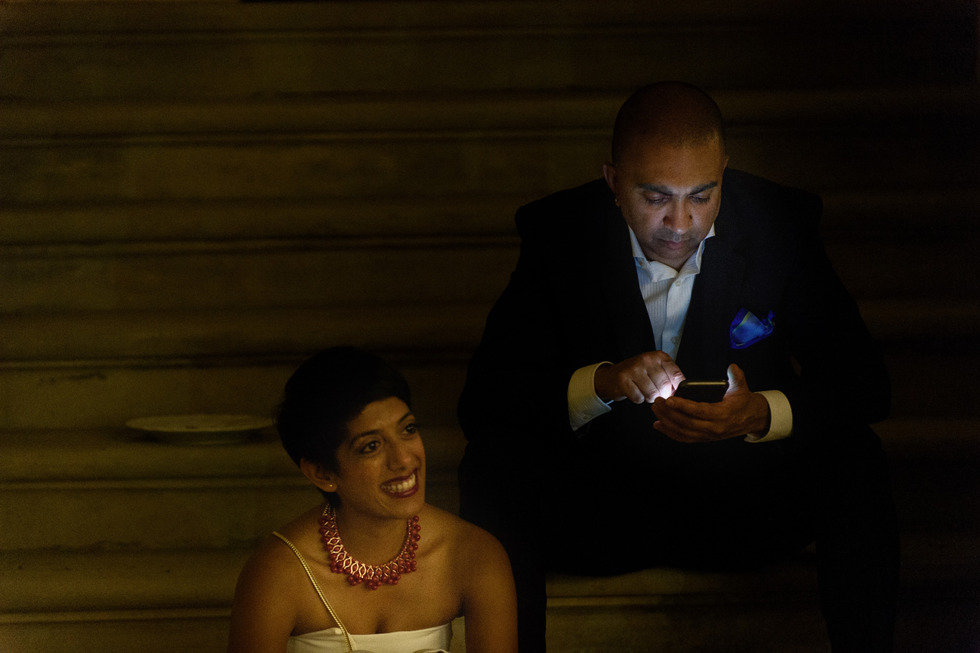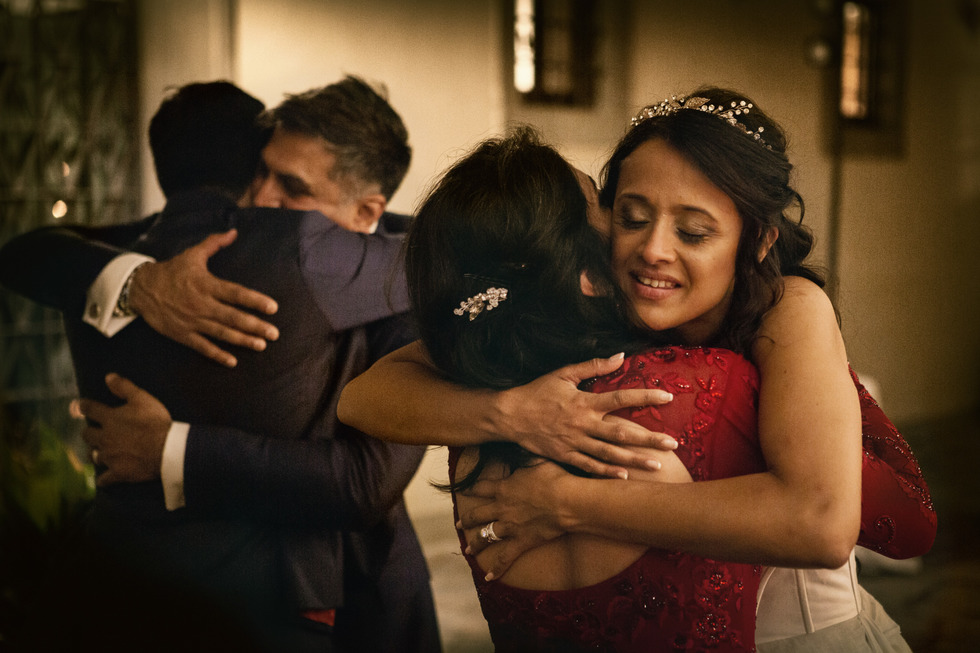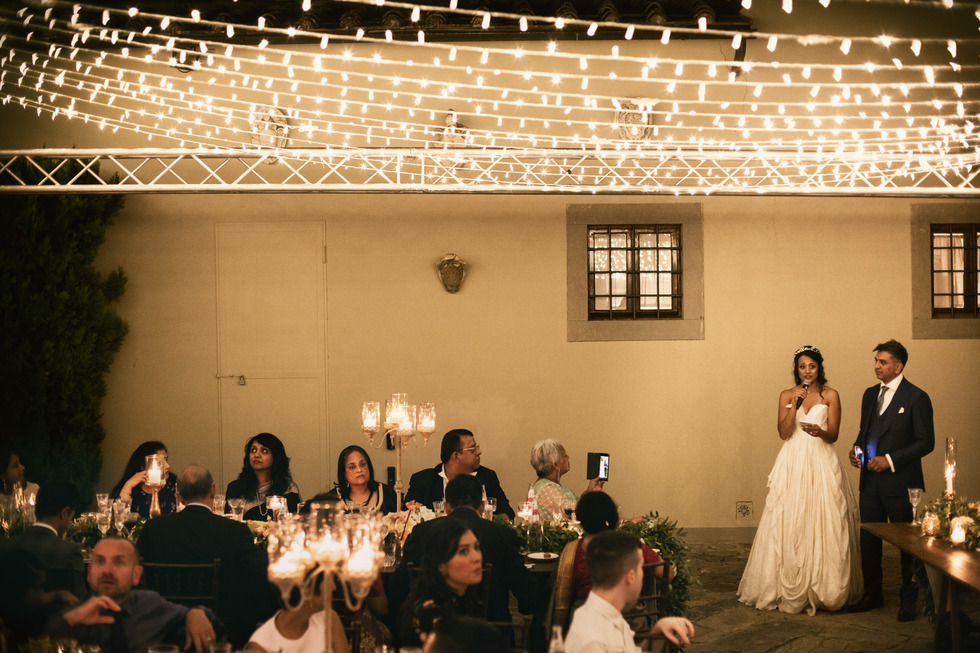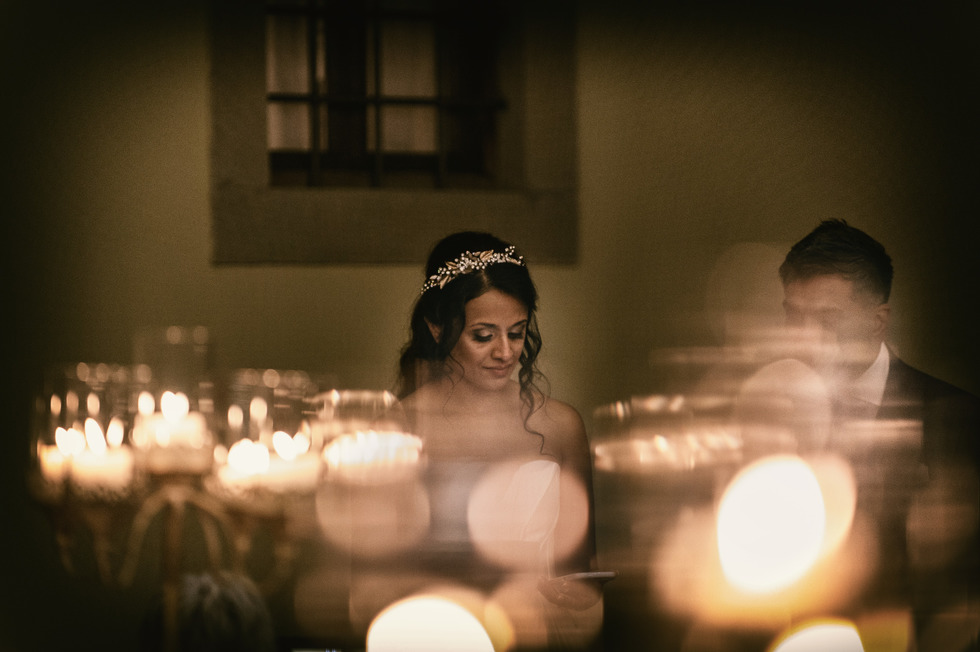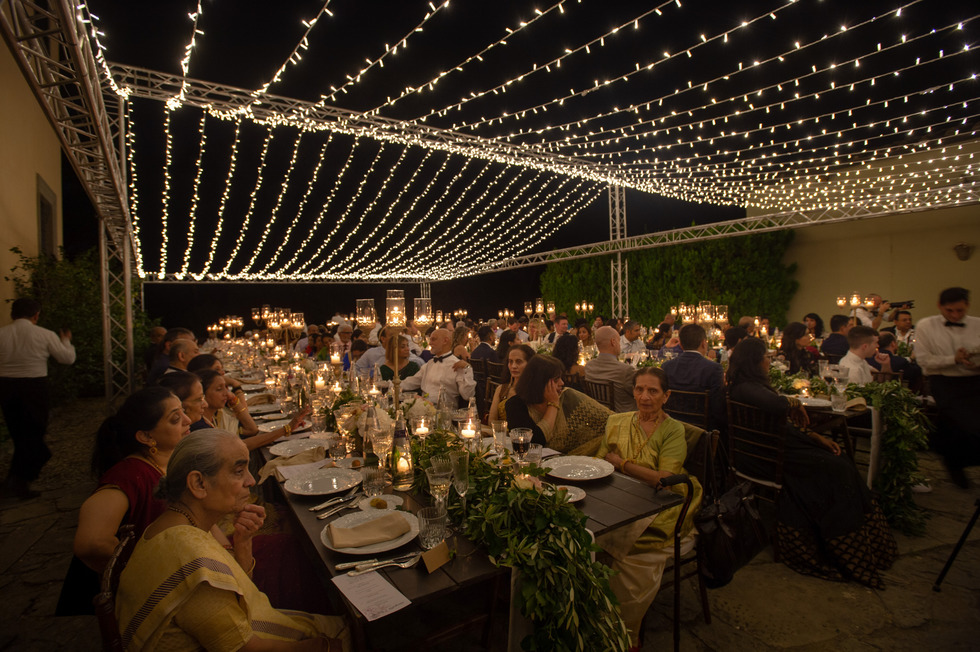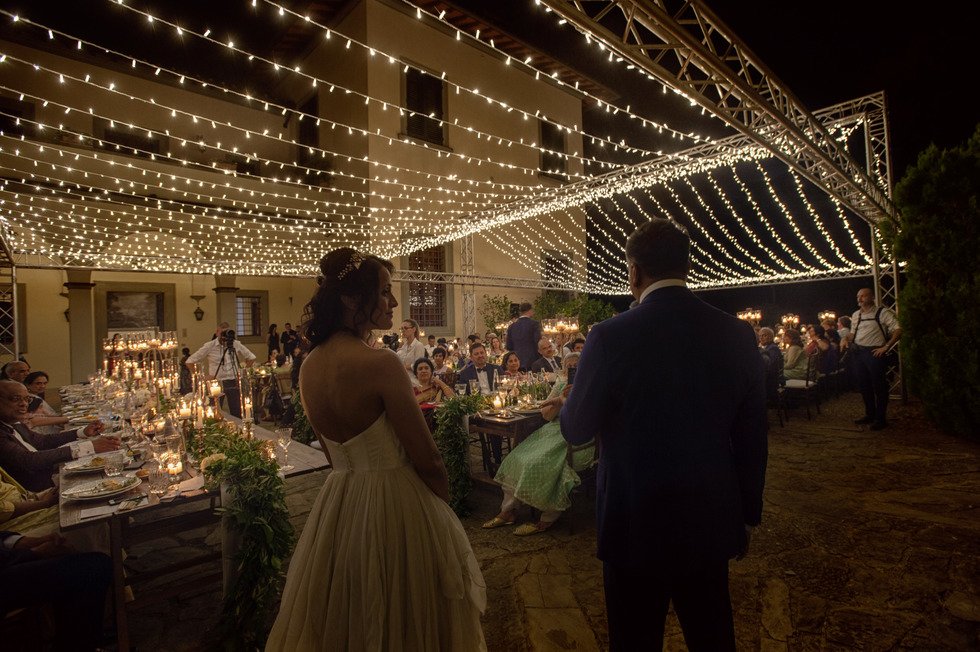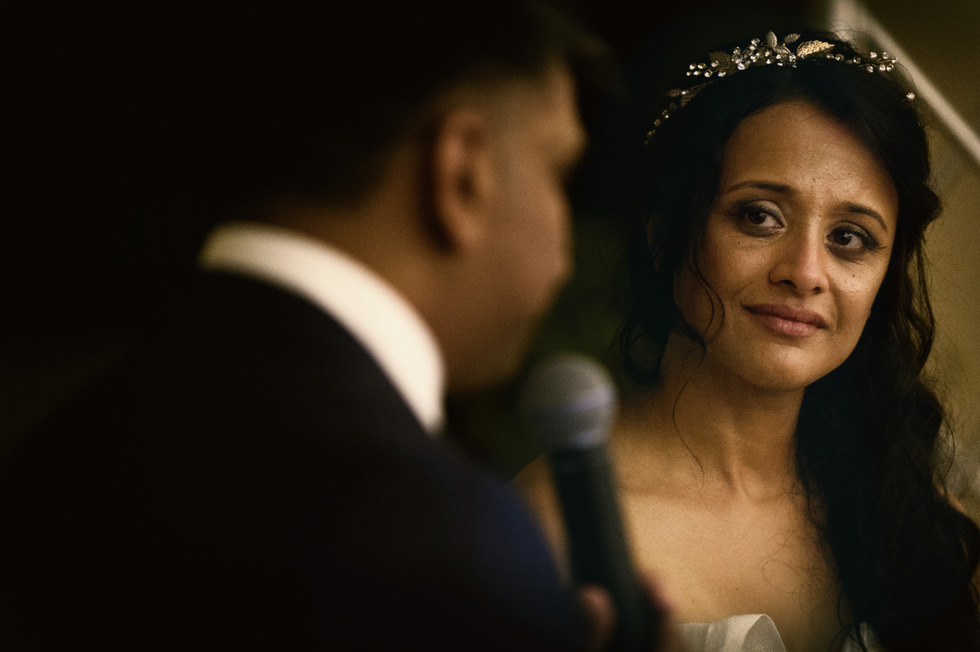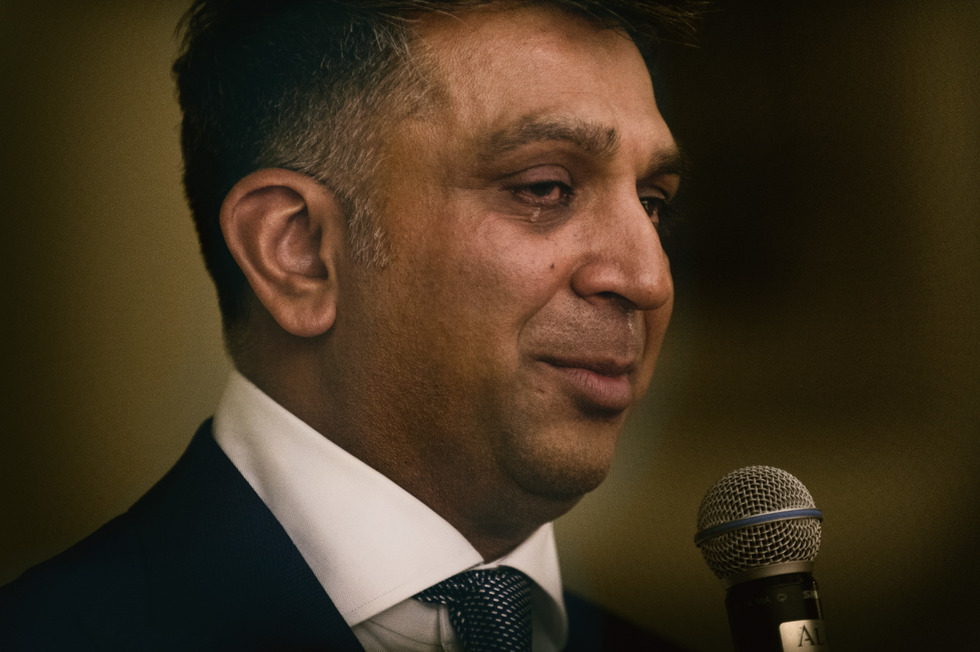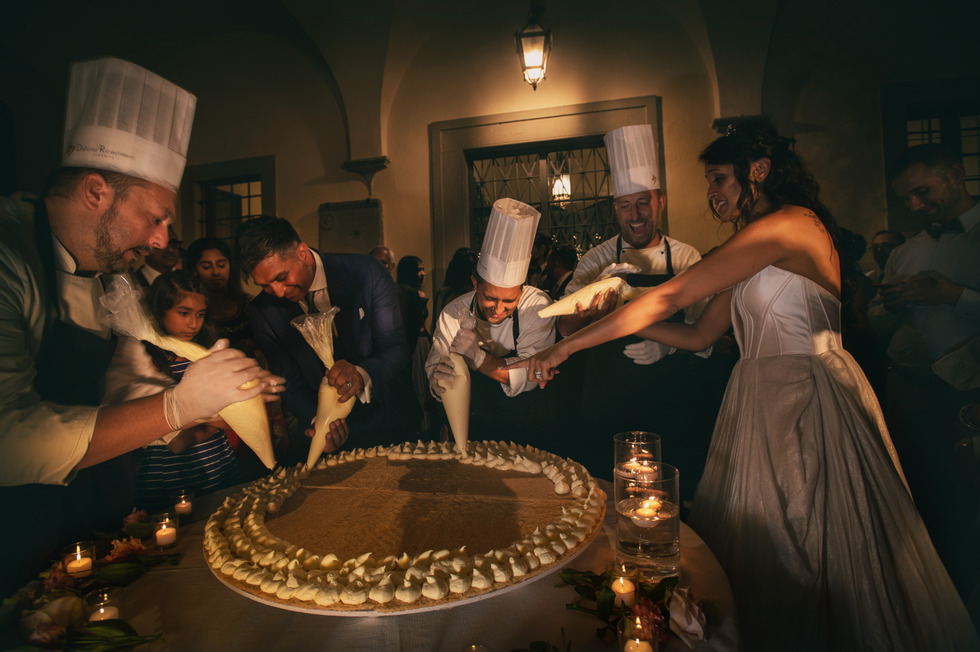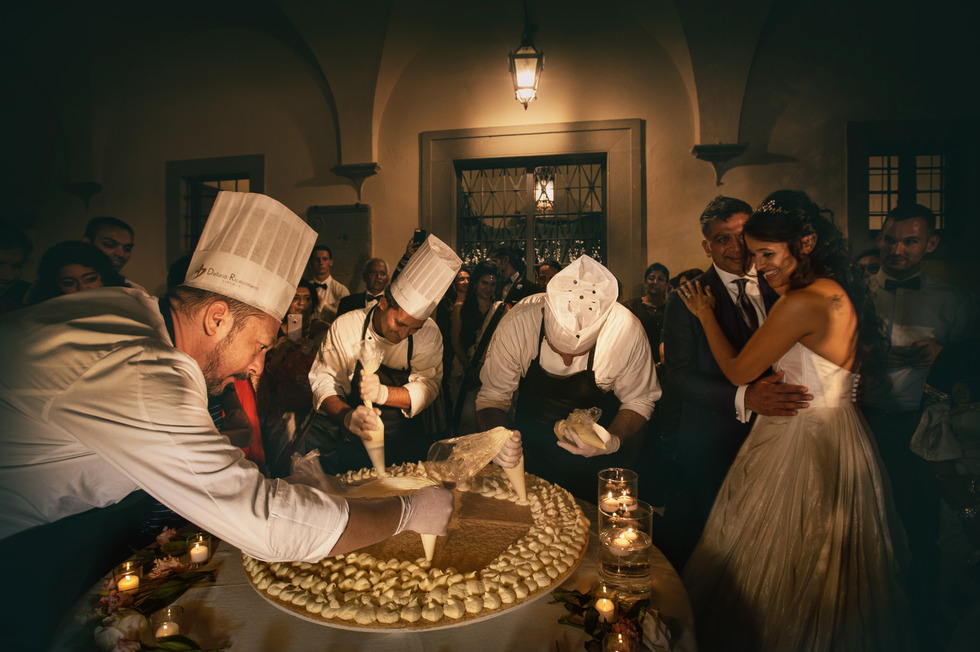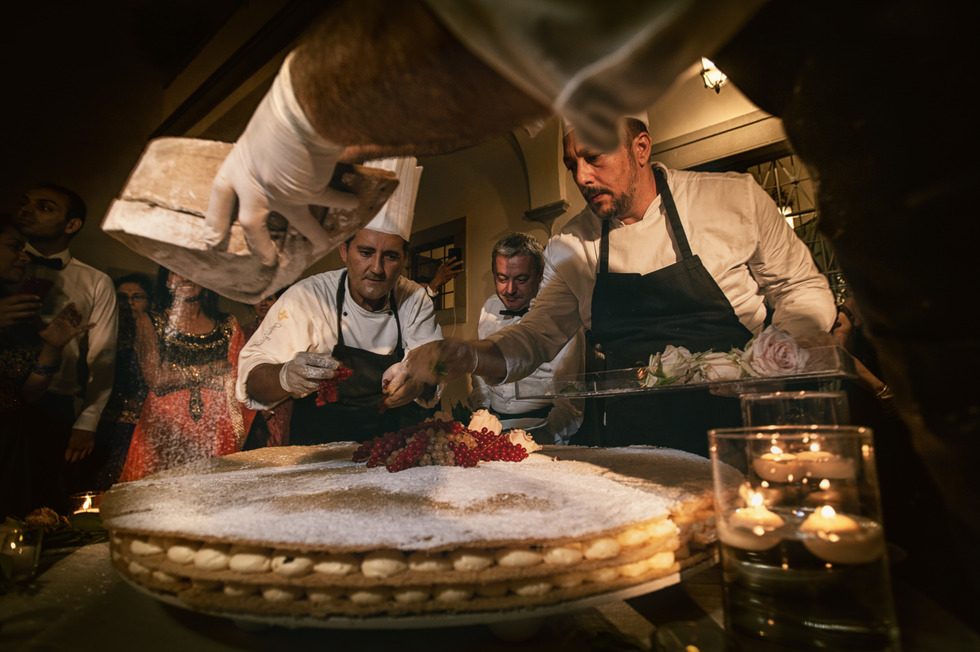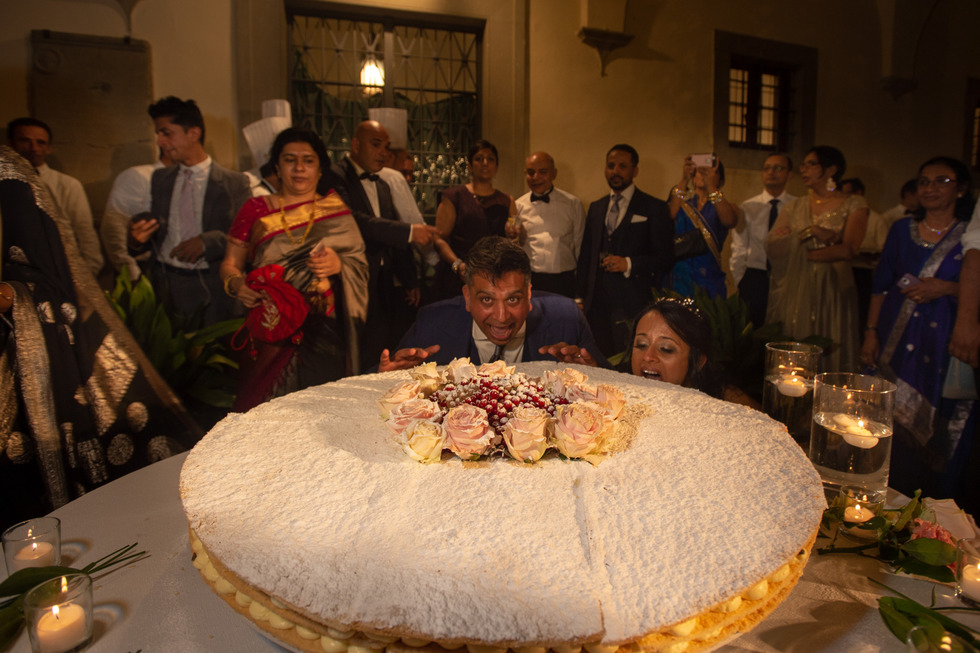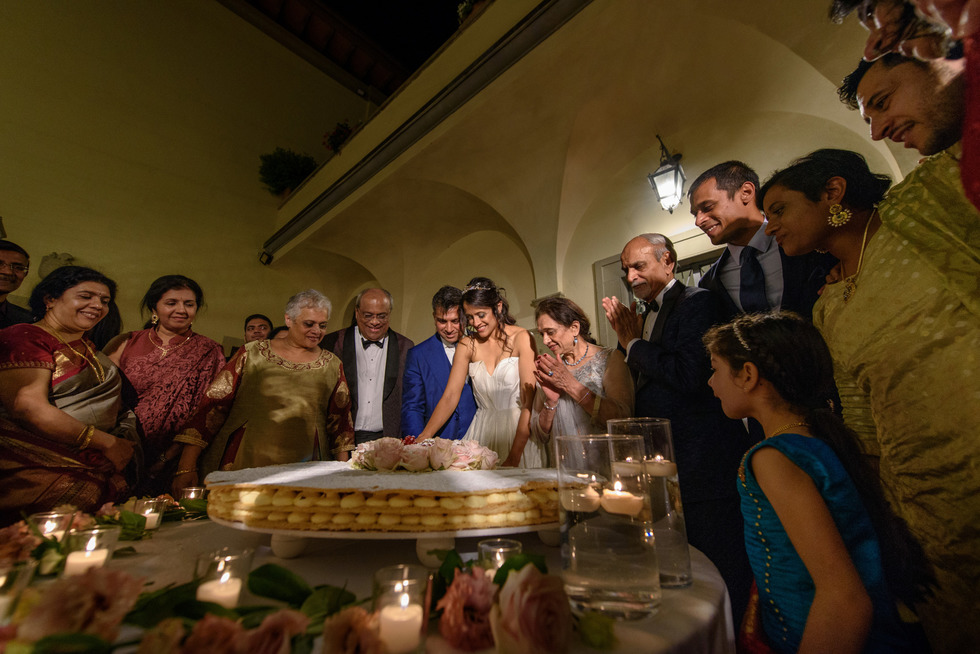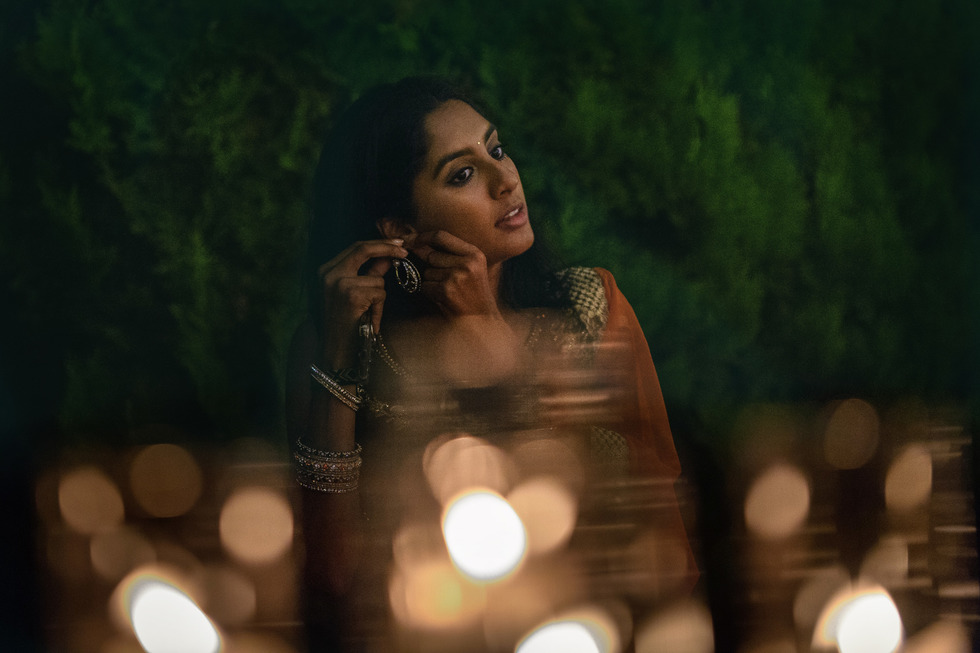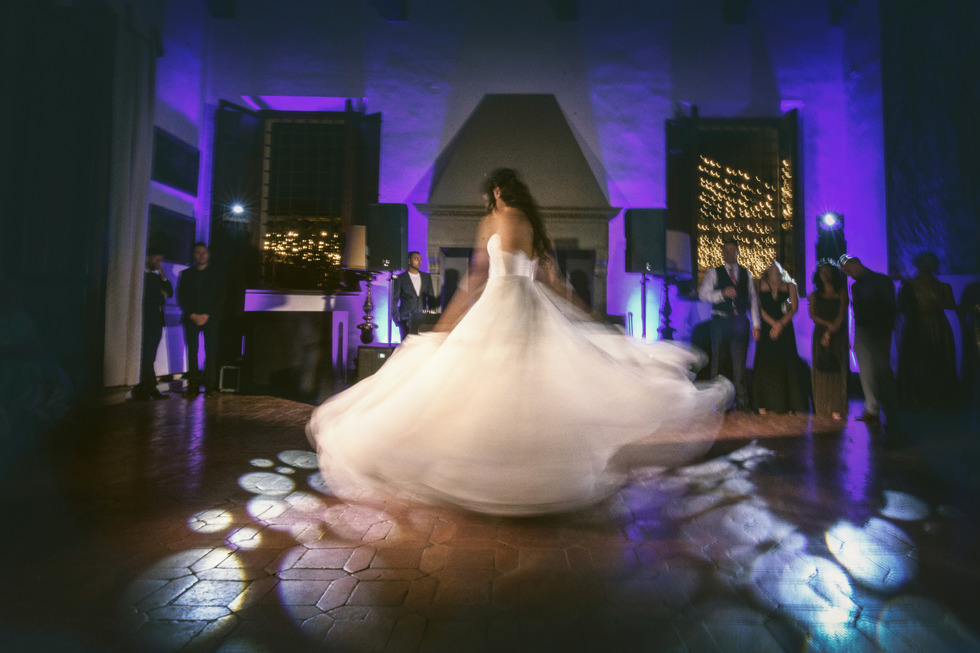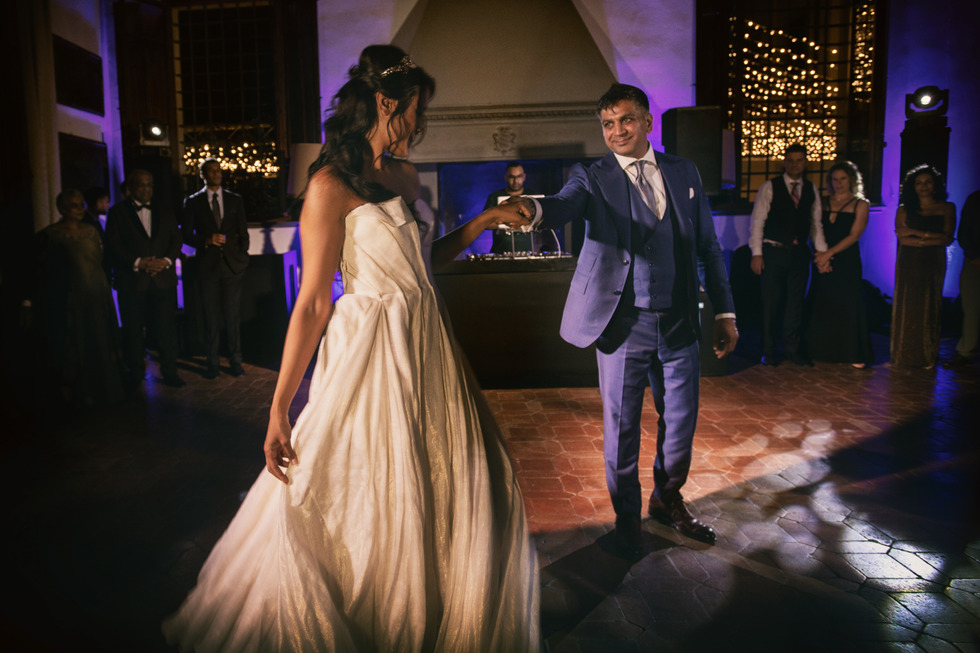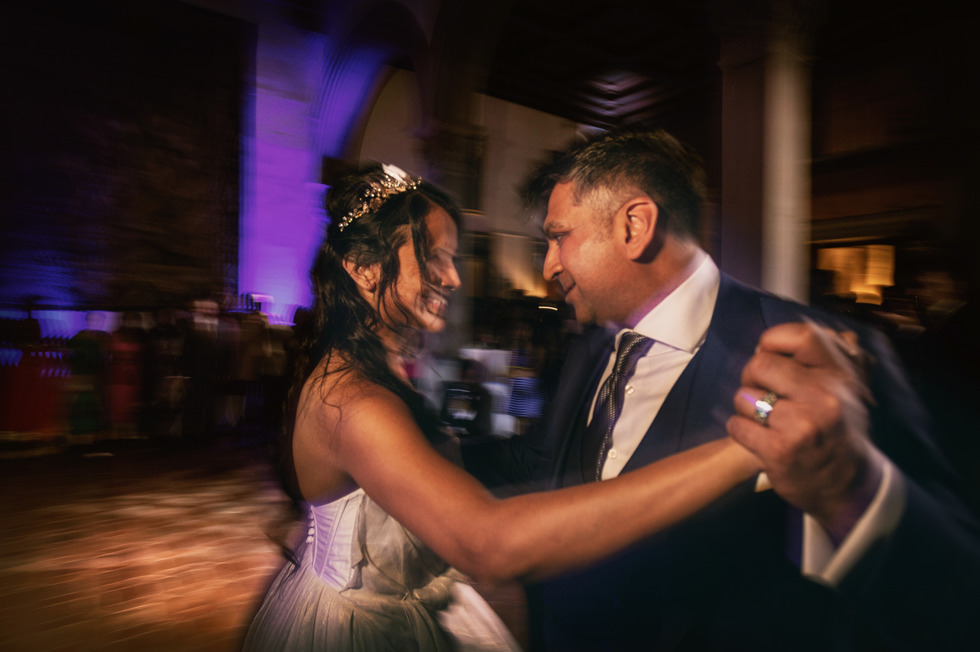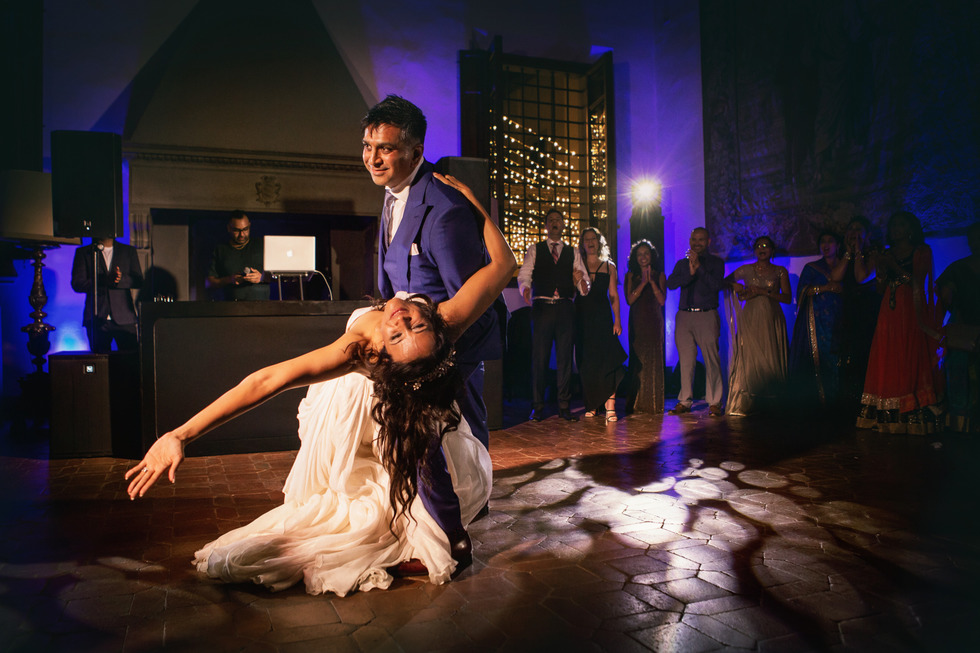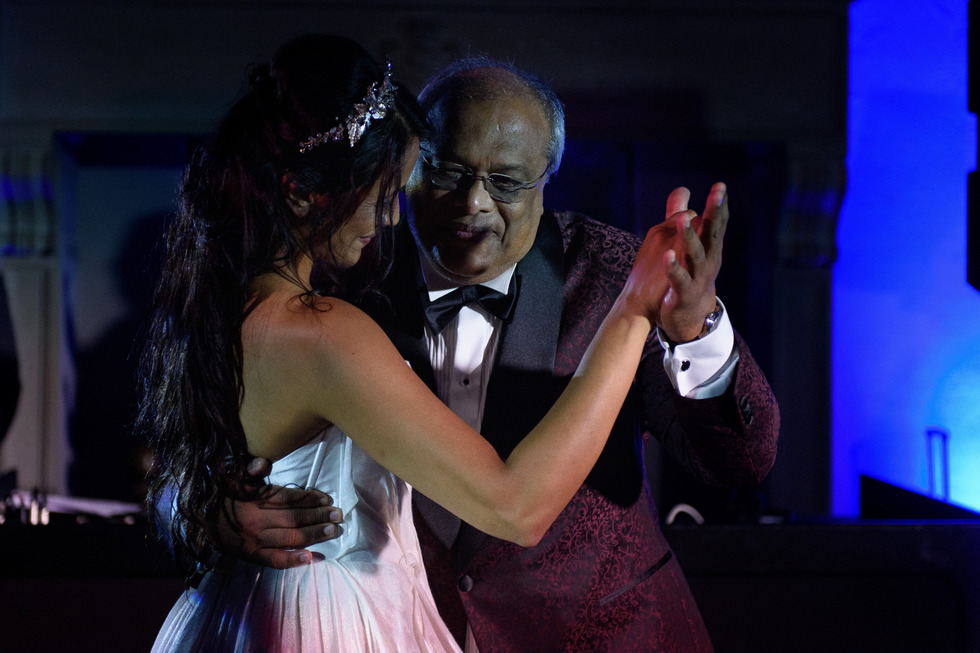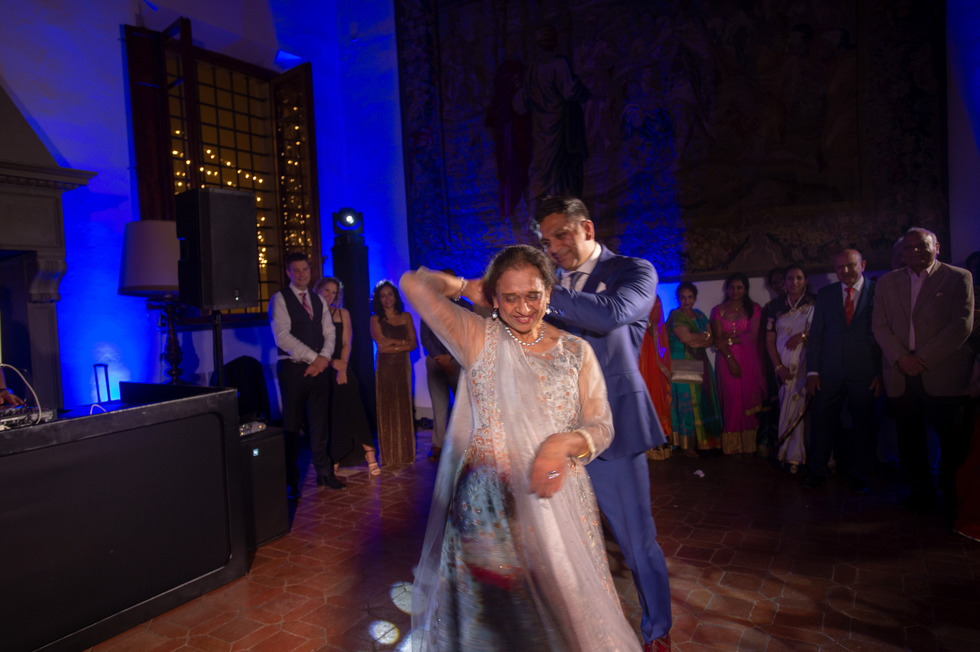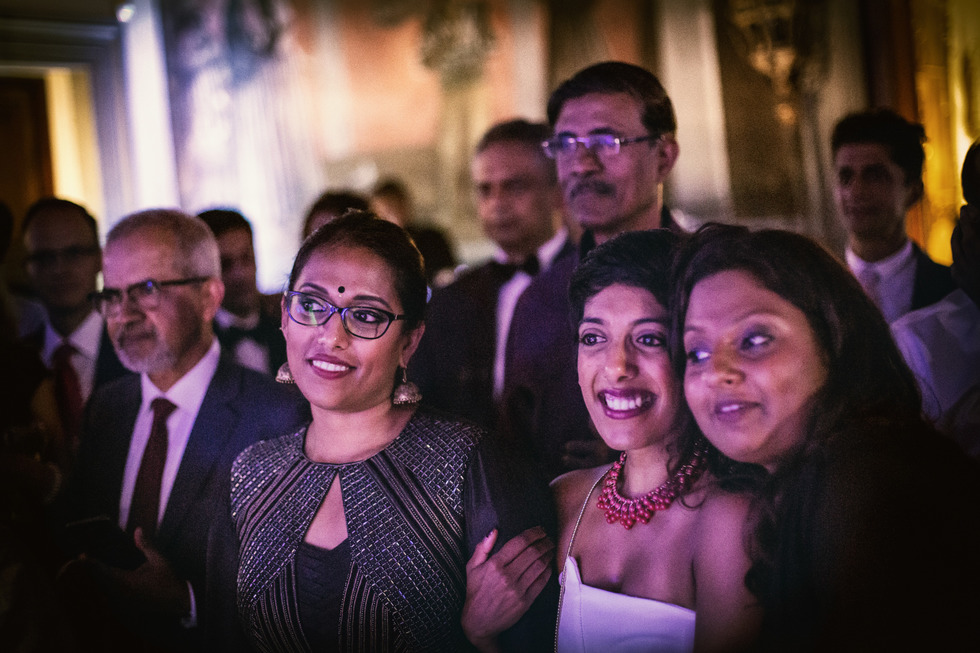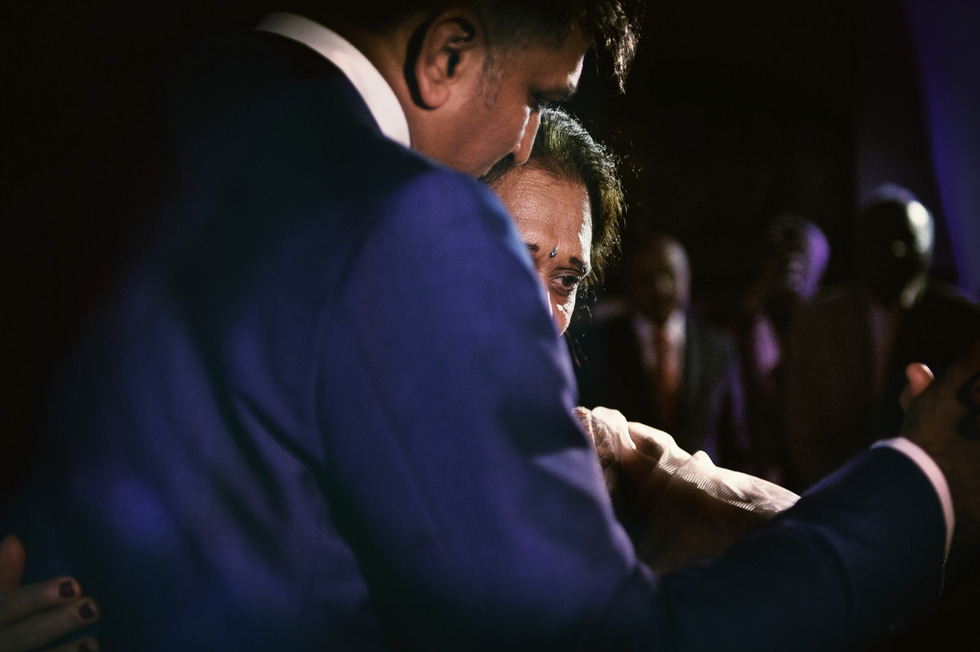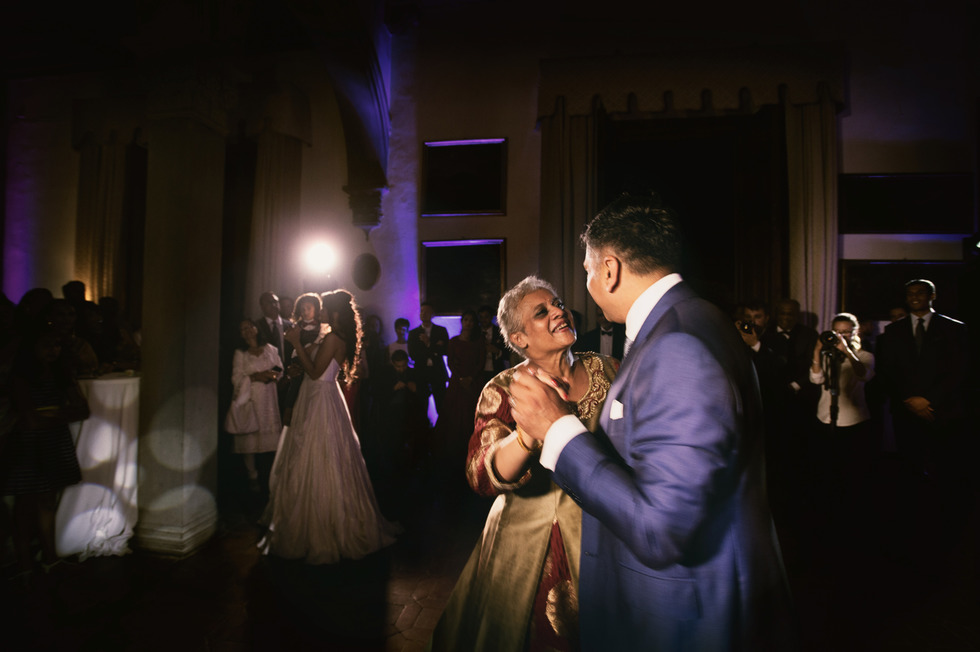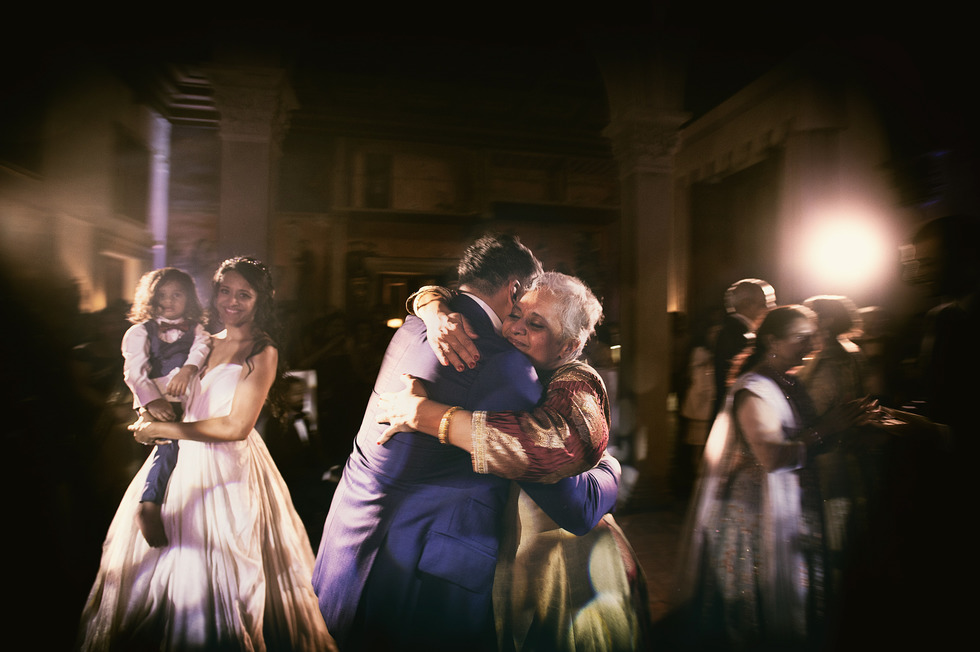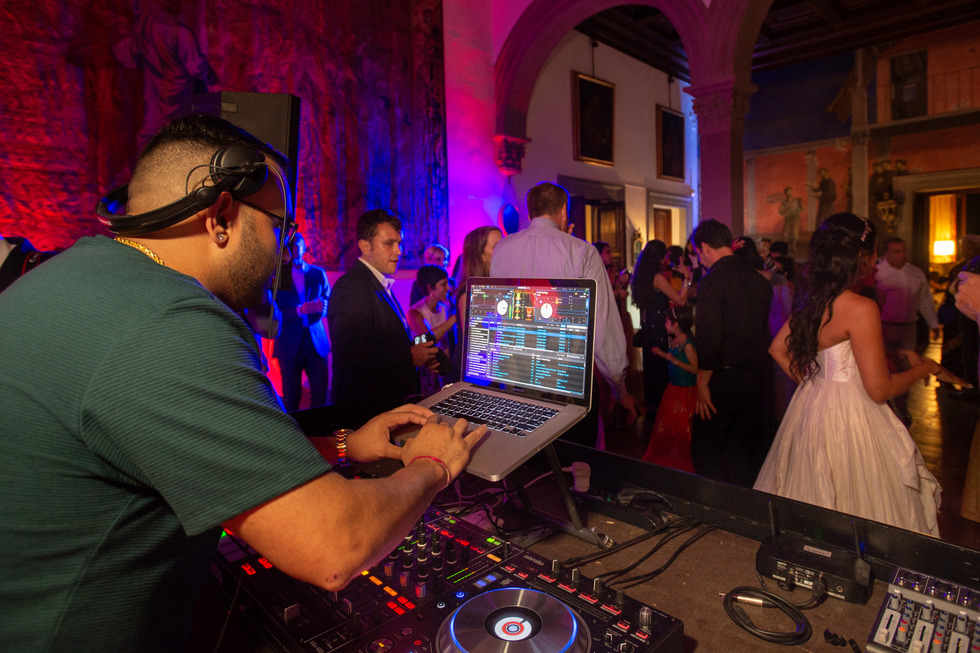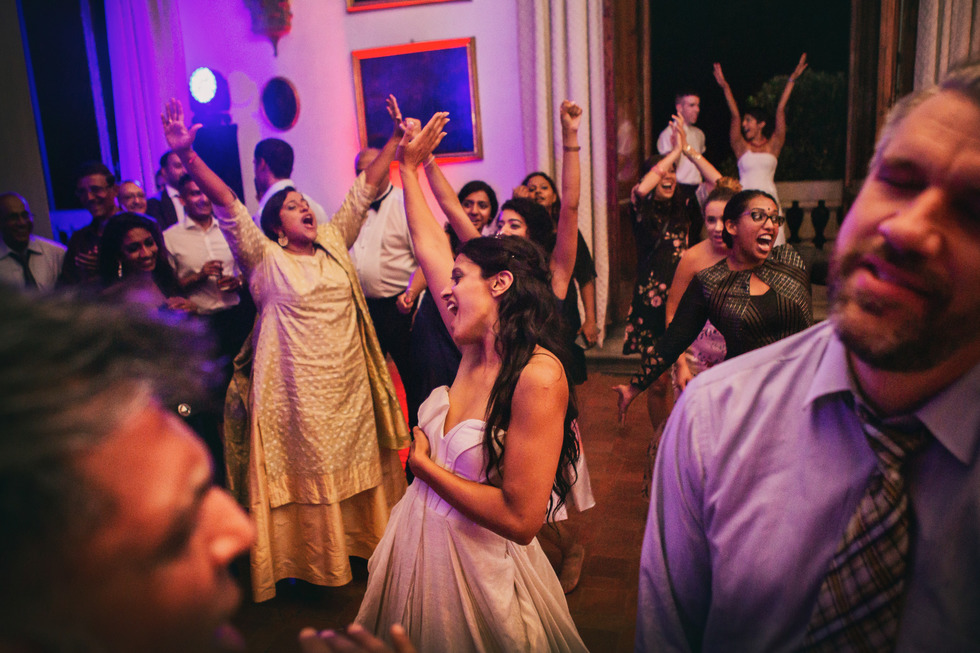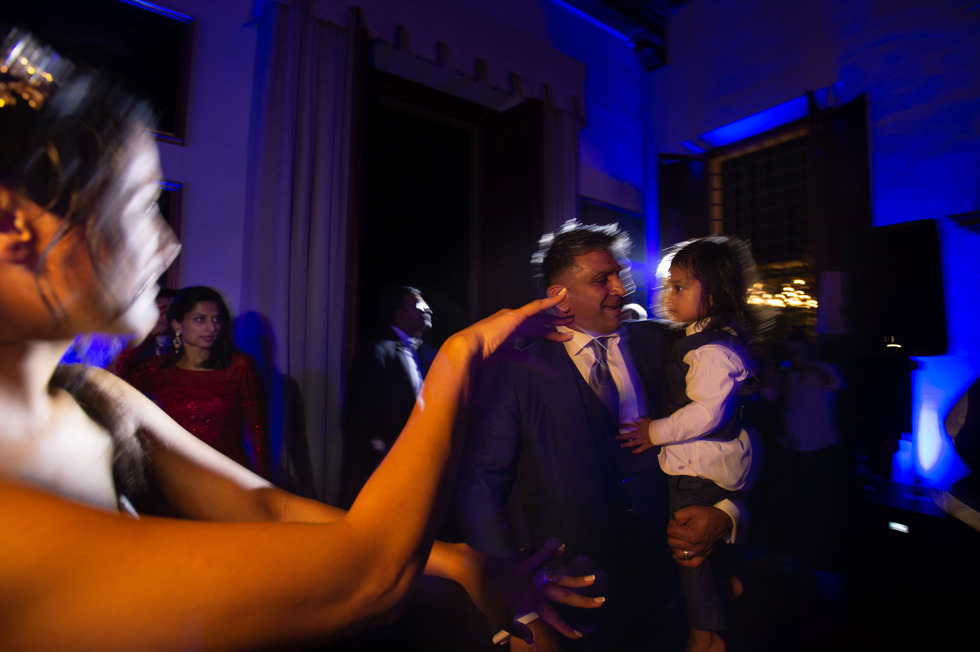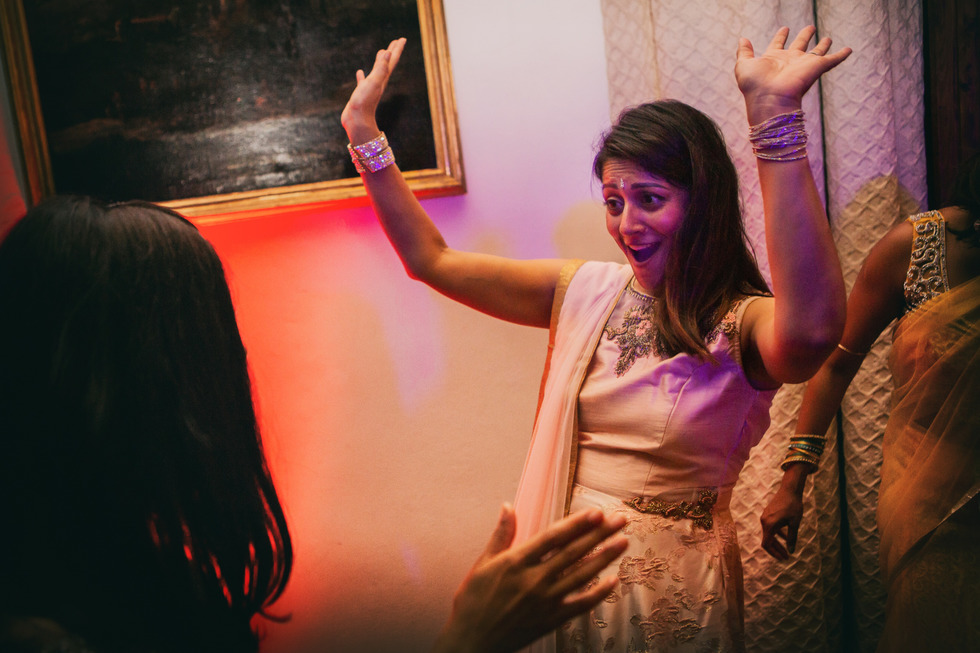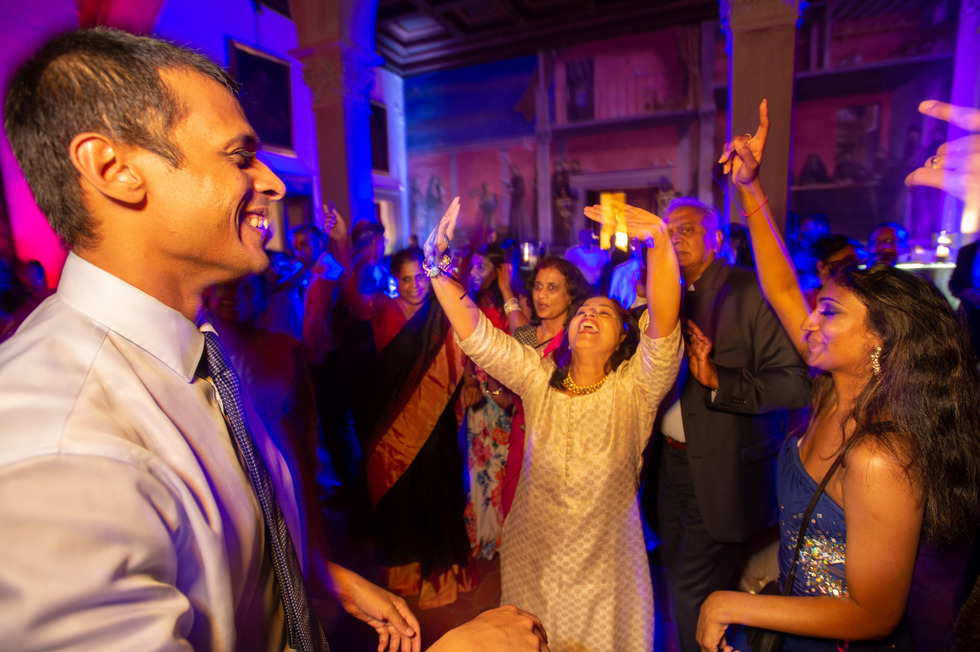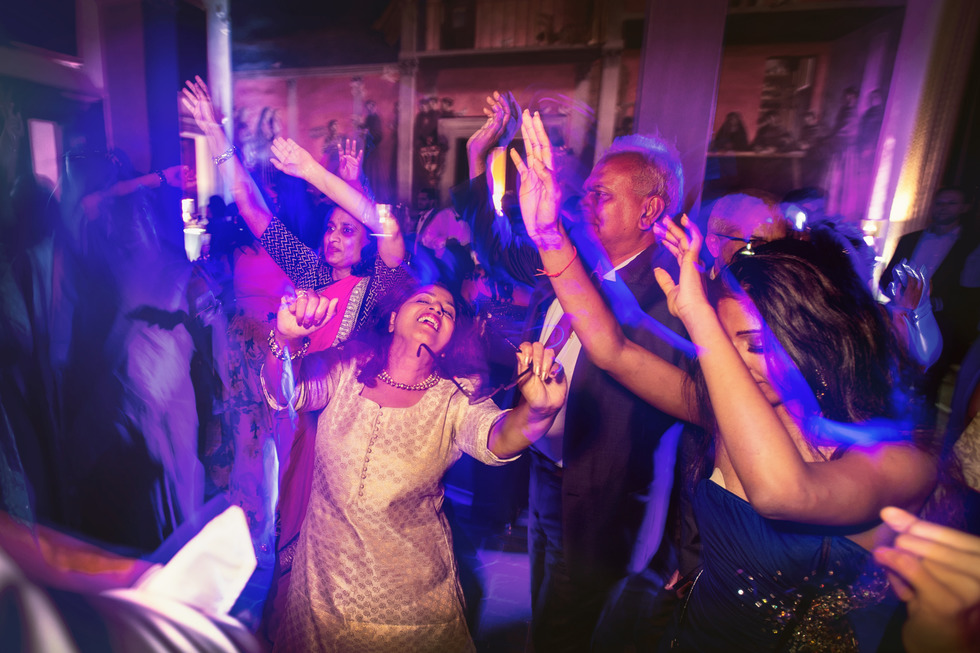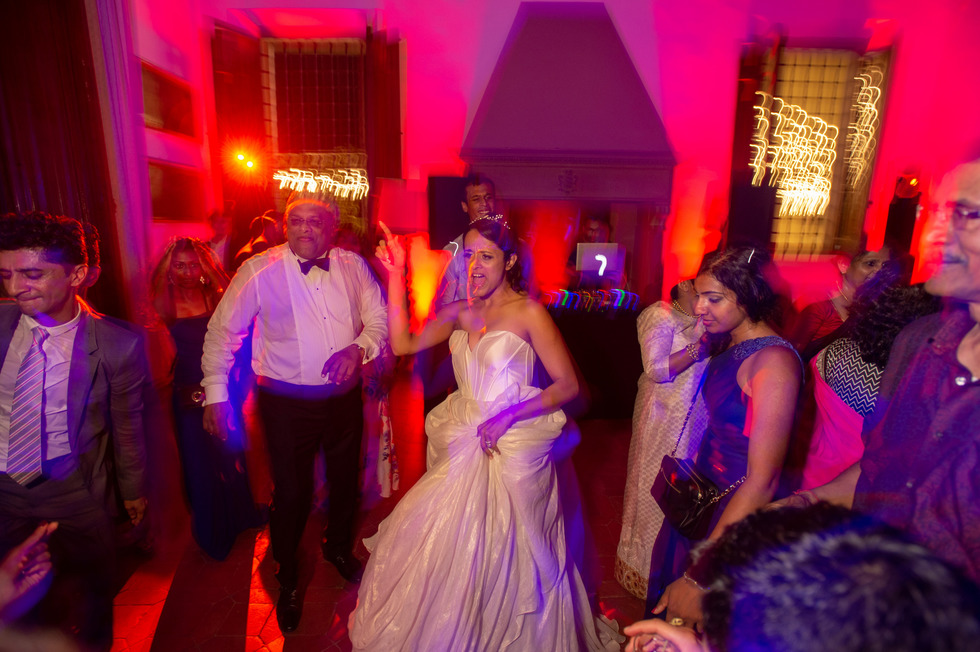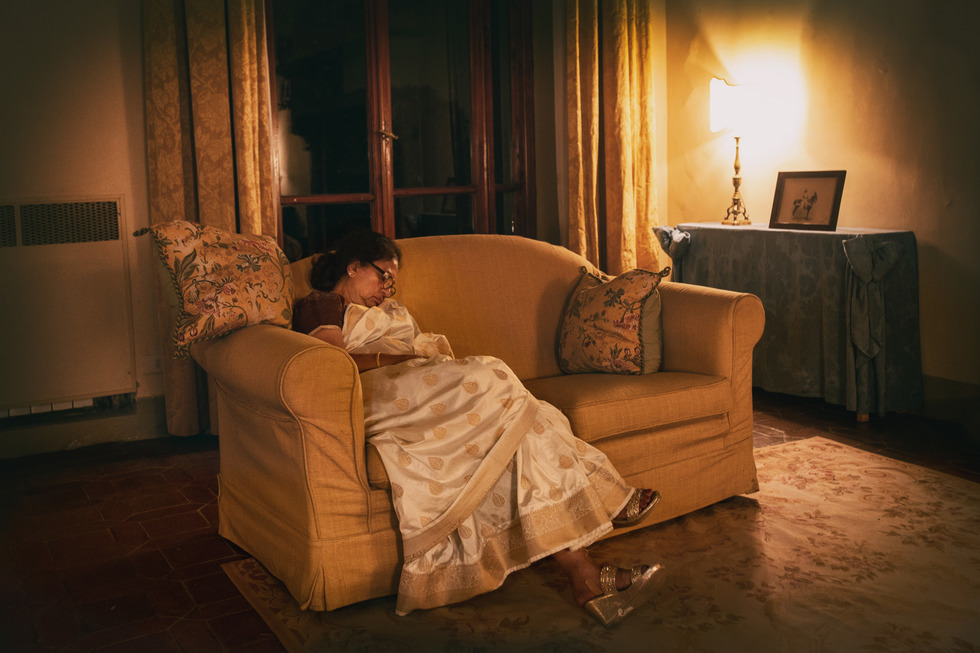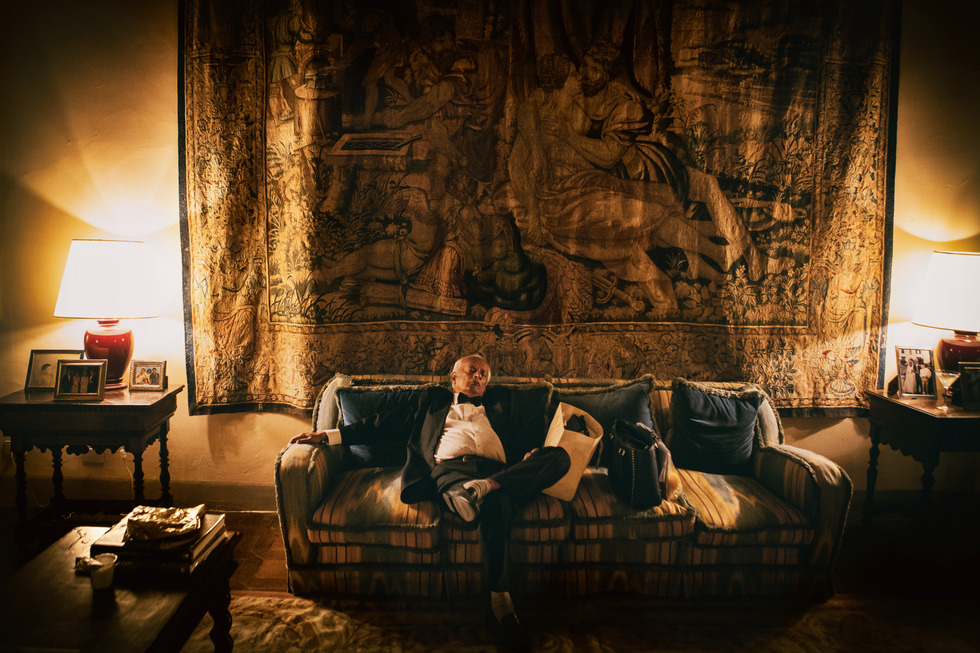An Indian wedding at the Four Season in Florence lasted two days and anticipated by an engagement day around the old city of Florence. It begins with the first marriage ceremony, Haldi. During the Haldi ceremony, a paste made from turmeric, chickpea flour, sandalwood and rose water is applied to the hands, feet and face of the couple. It's thought that the yellow color of the pasta illuminates the skin tone before the wedding and brings good luck to the bride and groom.
The bride gets ready in the rooms of the Four Season and wears a yellow sari which is the color of the Haldi ceremony. The garden of the Gherardesca of the Four Season is the location chosen to mount the canopy.
We continue in the afternoon with a second ceremony, Oonjal. The ceremony in which the bride and groom are seated on a swing together while the ladies give them a slight push means that the couple will remain together in the ups and downs of life. As the swing rises and returns, the bride and groom promise to be there for each other in all the situations they will encounter in their life as a man and wife, no matter how pleasant or unpleasant these situations may be.
The day ends with the Garba, in the 'Conventino' of the Four Season. The Garba is a traditional dance of the Indian state of Gujarat during which the deities are worshiped by dancing in concentric circles that alternately move counterclockwise and clockwise around the image of a Mother Goddess or a symbolic representation of her creative energy.
The next day is the Big Day, the wedding day, of the Baraat. There are many rituals that follow each other: the arrival of the groom and his family. According to tradition, the groom arrives at the wedding on horseback, accompanied by close friends and family. The bride thought well to actualize this tradition by giving the groom a flaming Ferrari (there was always a horse). The long procession includes many songs and dances. This shows the happiness of the groom and his family in accepting the new bride.
Then there is the Milni ceremony: the bride's meeting with the relatives of the groom. The bride's family, adorned with garlands and traditional Indian sweets, welcomes the groom and his family. Milni is an important tradition in which the groom's family is honored by that of the bride. Before the ceremony begins, worship is given to Ganesha for good luck. This is important since Ganesha is the destroyer of all obstacles. This ceremony usually involves the closest members of the bride's and groom's family.
First the groom will come in. He will be taken to a decorated altar called "mandap", he will sit down and be given a celebratory drink: a mix of milk, clarified butter, yogurt, honey and sugar. The bride's arrival is called 'kanya'. The bride and groom are separated by a cloth and can not yet be seen.
Once the bride has arrived at the mandap (the altar where the marriage takes place), the cloth is removed. The bride and groom exchange flower garlands. These garlands symbolize their mutual approval.
From this moment onwards a whole series of rituals of the Hindu tradition follow each other. The bride's father pours holy water into her daughter's hand and then puts it in the hand of the groom. At this point, a sacred fire will be lit and the Purohit (the priest) will recite the Sanskrit mantras (rite of Vivaaha-homa). The Panigharani ceremony follows. During this ritual, the groom takes the bride's hand. The ceremony continues with the Saptapadi (seven steps around the fire). At this point the couple walks around the fire with seven steps, each accompanied by a prayer, and seven promises. This is the moment when marriage is recognized by the state. We continue with the Mangalsutra Dharanam. The mangalsutra is a sacred necklace that the groom ties around the bride's neck on their wedding day. The wedding day ends with Aashirvad: blessing from the family. After the marriage ceremony, the married couple receives blessing from their family members.
After the Baraat rituals, all celebrated in the splendid Gherardesca Garden of the Four Season in Florence, the guests returned to their lodgings to prepare for the evening reception party. The bride this time wore a white dress, typical of the western tradition of marriage, and have changed location moving into the beautiful Villa Il Garofalo, just outside Florence from whose garden you have a unique view of the city.
The bride gets ready in the rooms of the Four Season and wears a yellow sari which is the color of the Haldi ceremony. The garden of the Gherardesca of the Four Season is the location chosen to mount the canopy.
We continue in the afternoon with a second ceremony, Oonjal. The ceremony in which the bride and groom are seated on a swing together while the ladies give them a slight push means that the couple will remain together in the ups and downs of life. As the swing rises and returns, the bride and groom promise to be there for each other in all the situations they will encounter in their life as a man and wife, no matter how pleasant or unpleasant these situations may be.
The day ends with the Garba, in the 'Conventino' of the Four Season. The Garba is a traditional dance of the Indian state of Gujarat during which the deities are worshiped by dancing in concentric circles that alternately move counterclockwise and clockwise around the image of a Mother Goddess or a symbolic representation of her creative energy.
The next day is the Big Day, the wedding day, of the Baraat. There are many rituals that follow each other: the arrival of the groom and his family. According to tradition, the groom arrives at the wedding on horseback, accompanied by close friends and family. The bride thought well to actualize this tradition by giving the groom a flaming Ferrari (there was always a horse). The long procession includes many songs and dances. This shows the happiness of the groom and his family in accepting the new bride.
Then there is the Milni ceremony: the bride's meeting with the relatives of the groom. The bride's family, adorned with garlands and traditional Indian sweets, welcomes the groom and his family. Milni is an important tradition in which the groom's family is honored by that of the bride. Before the ceremony begins, worship is given to Ganesha for good luck. This is important since Ganesha is the destroyer of all obstacles. This ceremony usually involves the closest members of the bride's and groom's family.
First the groom will come in. He will be taken to a decorated altar called "mandap", he will sit down and be given a celebratory drink: a mix of milk, clarified butter, yogurt, honey and sugar. The bride's arrival is called 'kanya'. The bride and groom are separated by a cloth and can not yet be seen.
Once the bride has arrived at the mandap (the altar where the marriage takes place), the cloth is removed. The bride and groom exchange flower garlands. These garlands symbolize their mutual approval.
From this moment onwards a whole series of rituals of the Hindu tradition follow each other. The bride's father pours holy water into her daughter's hand and then puts it in the hand of the groom. At this point, a sacred fire will be lit and the Purohit (the priest) will recite the Sanskrit mantras (rite of Vivaaha-homa). The Panigharani ceremony follows. During this ritual, the groom takes the bride's hand. The ceremony continues with the Saptapadi (seven steps around the fire). At this point the couple walks around the fire with seven steps, each accompanied by a prayer, and seven promises. This is the moment when marriage is recognized by the state. We continue with the Mangalsutra Dharanam. The mangalsutra is a sacred necklace that the groom ties around the bride's neck on their wedding day. The wedding day ends with Aashirvad: blessing from the family. After the marriage ceremony, the married couple receives blessing from their family members.
After the Baraat rituals, all celebrated in the splendid Gherardesca Garden of the Four Season in Florence, the guests returned to their lodgings to prepare for the evening reception party. The bride this time wore a white dress, typical of the western tradition of marriage, and have changed location moving into the beautiful Villa Il Garofalo, just outside Florence from whose garden you have a unique view of the city.
